






Please dial +44 (0)1722 followed by the number listed below
ASIAN ART
John Axford MRICS ASFAV 424506
Alexandra Aguilar 424583
Freya Yuan-Richards 424589
Jeremy Morgan +44 (0)7812 601098
Michelle Yu 424571
Sophie Moore 424591
Nelson Chui 424591
CHINESE PAINTINGS & CALLIGRAPHY
Freya Yuan-Richards 424589
Michelle Yu 424571
JAPANESE WORKS OF ART
Alexandra Aguilar 424583
Michelle Yu 424571
20TH CENTURY DESIGN
Michael Jeffery 424505
Zoe Smith 446955
AFRICAN & OCEANIC ART | ANTIQUITIES
Will Hobbs 339752
Molly O’Reilly 446980
ENGLISH & EUROPEAN CERAMICS & GLASS
Clare Durham 424507
Hollie Morrison 446964
FURNITURE, WORKS OF ART & CLOCKS
Mark Yuan-Richards 411854
Neil Grenyer MRICS 446972
Jim Gale 339161
Sarah Stone 446974
Marielle Whiting FGA 424595
Jonathan Edwards FGAA (Consultant) 424504
Samuel Hug FGA DGA 424586
Megan Corbett 424562
MEDALS & COINS, ARMS & ARMOUR
Ned Cowell 341469
Molly O’Reilly 446980
PAINTINGS
Victor Fauvelle 446961
Ed Beer 446962
Hannah Farthing 446970
SILVER
Rupert Slingsby 424501
Lucy Chalmers 424594
VALUATIONS FOR INSURANCE & PROBATE
Jeremy Lamond MRICS ASFAV FRSA 424502
Neil Grenyer MRICS 446972
Amanda Lawrence 424509 Archie Swann (Trainee valuer)
GENERAL OFFICE
Ruth Pike (Office Manager) 424500
Sarah Bennie
Leyanne Hind
Nicola Young
Serena Tandy-Cockram
CASTLE GATE RECEPTION
Sally Litherland
MARKETING
Chloe Davie 446959
ACCOUNTS
Sharon Ringwood 424565 Anna Gentleman
BOARD OF DIRECTORS
John Axford MRICS ASFAV Chairman
Natalie Milsted FCCA Managing Director
ASSOCIATE DIRECTORS
Alexandra Aguilar Clare Durham
Victor Fauvelle
Will Hobbs Michael Jeffery
Jeremy Lamond MRICS ASFAV FRSA
Rupert Slingsby
Marielle Whiting FGA Freya Yuan-Richards Mark Yuan-Richards
Front Cover: Lot 195
Back Cover: a selection of Japanese lots from the Oliver Impey Collection Catalogue £20.00 (£25.00 by post) (£30.00 by post outside Europe)
Viewing in London
17 Clifford Street, 2nd Floor W1S 3RQ
Saturday 29th October 11.00am
4.00pm Sunday 30th October 11.00am – 4.00pm Monday 31st October 11.00am – 4.00pm
Viewing at our new exhibition space at Castle Gate Unit 1B Castle Gate Business Park, Old Sarum, Salisbury SP4
Saturday 12th November 10.00am
1.00pm Monday 14th November 10.00am
Please note that, owing to the recent introduction of Money

Regulations, clients wishing to bid in this auction are likely to be asked to provide two forms of identification. This applies to both new and existing clients.
See paragraphs 4 & 5 of our conditions of business at the back of the catalogue for additional charges on the final hammer prices.
telephone bidding
noon on Monday 14th November.
not be accepted after
email asianart@woolleyandwallis.co.uk or call +44 (0)1722 424500.
register for this sale or



FOR ENQUIRIES REGARDING THE SALE AND CONDITION REPORT REQUESTS: asianart@woolleyandwallis.co.uk +44 (0)1722 424500
TO LEAVE ABSENTEE OR TELEPHONE BIDS: bids@woolleyandwallis.co.uk




FOR ENQUIRIES REGARDING BIDDING ONLINE ON WOOLLEY’S LIVE: online@woolleyanwallis.co.uk
Department contact: asianart@woolleyandwallis.co.uk +44 (0)1722 424500
Salisbury Salerooms, 51-61 Castle Street, Salisbury, Wiltshire SP1 3SU Tel: +44 (0)1722 424500 • www.woolleyandwallis.co.uk
Jōmon Period ca.10,000 BC-ca.300 BC Yayoi Period ca.300 BC-552 AD
Asuka Period 552-645
Nara Period 645-794
Heian Period 794-1185
Kamakura Period 1185-1333

Muromachi Period 1333-1573
Namboku-Chō Period 1336-1392
Momoyama Period 1568-1615
Bunroku Era 1592-1596
Keicho Era 1596-1615
Edo Period 1615-1868
Kan’ei Era 1624-1644
Kanbun Era 1661-1673
Genroku Era 1688-1704
An’ei Era 1772-1781
Tenmei Era 1781-1789
Kansei Era 1789-1801
Kyowa Era 1801-1804
Bunka Era 1804-1818
Bunsei Era 1818-1830
Tenpo Era 1830-1844
Koka Era 1844-1848
Kaei Era 1848-1854
Ansei Era 1854-1860
Man’ei Era 1860-1861
Bunkyu Era 1861-1864
Genji Era 1864-1865
Keio Era 1865-1868
Meiji Era 1868-1912
Taisho Era 1912-1926
Showa Era 1926-1989
Heisei Era 1989-2019
Reiwa Era 2019-present

1 A KOREAN IRON-PAINTED DRAGON JAR JOSEON OR LATER, 19TH OR 20TH CENTURY
Of compressed ovoid form, raised on a short foot and with a straight rim, the body decorated with a large writhing dragon, the iron-brown design painted on the creamy-grey ground with minute brown specks, the base with an incised character, together with an inscribed tomobako wood box, 24cm. (2)

£300-500
2 A KOREAN SANGGAM SLIP-INLAID CELADON BOWL GORYEO DYNASTY, 12TH/13TH CENTURY


The well decorated with three flowerheads surrounded by a ring of ruyi heads; with flower sprays and clusters of fruits to the cavetto, and a band of chevrons to the rim; the exterior with four cranes in flight amongst stylised clouds, 19.3cm.
£1,000-2,000

JOSEON DYNASTY, 19TH CENTURY OR EARLIER
The first a Buncheon-type vessel with a grey celadon body and painted with brownish leafy sprays; the other with a white-glazed bulbous body and a tall tapering neck, an inventory number written in black ink underneath, 24cm and 27cm respectively. (2)
£500-1,000
4 A SMALL KOREAN SANGGAM SLIP-INLAID CELADON BOWL JOSEON OR LATER, 19TH OR 20TH CENTURY
Of conical shape, the celadon-grey surface decorated with flowerheads and rings to the well and cavetto, raised on a short foot, 12.6cm.
£400-600

OR LATER, 19TH OR 20TH CENTURY
Of baluster form, painted with two figures and a pavilion in a mountainous
landscape, the neck with a band of key fret, a two character mark
English private collection, purchased in the USA in
19TH CENTURY
Made for the Vietnamese market, the well with a scene from the story of Yu Bonga and Zhong Ziqi, with lines of calligraphy above referring to ‘High Mountains, Flowing Waters’, the rim with a metal mount, a two-character mark to the base, 18.5cm.
THIS LOT IS TO BE OFFERED WITHOUT RESERVE.
Provenance: from an English private collection, West Yorkshire, formed in the 1970s and 1980s.
19TH CENTURY
Made for the Vietnamese market, all three with a metal mount to the rim, the smallest painted with writhing dragons amongst flaming wisps, another with a stylised crane by a prunus tree, the third with a large rock amongst flowers, two with lines of calligraphy, all three marked to the base, 17.2cm max. (3)
NOTE THIS LOT IS TO BE OFFERED WITHOUT RESERVE.



17TH CENTURY
Made for the Japanese market, each foliate dish decorated to the well with an egret wading amongst lotus, both with radiating patterns to the cavetto and a band of chevrons above, the rims with mushikui frits and each with branches to the reverse, one with a mark reading Da Ming Chenghua nian zhi, both with a paper label for ‘Christie’s 4 February 1999, lot 357’, 21cm and 20.3cm. (2)
Provenance: from a British private collection, formed 1970-2003.
Made for the Japanese market, the large circular body decorated in underglaze blue with a continuous design of two peacocks in a garden, with large flower sprays issuing from rockwork and butterflies fluttering at the back; a band of spirals below the rim; the cover decorated with peony flowers and scrolling tendrils and a further band of spirals, the base inscribed Da Ming Chenghua nian zhi, together with a tomobako wood box, 18.5cm. (3)

£2,000-3,000
This type of Chinese export pieces is rare, and was probably made to order for Japanese marchants and practitioners of the tea ceremony at the end of the Ming Dynasty. This shape doesn’t appear in earlier Chinese records, and it seems to have been developed for the Japanese market at a time when demand from the Imperial Chinese court was waning.
KOFUN PERIOD, 7TH CENTURY
Modelled in typical reddish clay, fitted with a bridle and bit embellished with studs, each eye cut out and with holes inside the ears, raised on a modern rectangular stand, 40cm max. (2)

Provenance: formerly a Japanese private collection, from Gunma Prefecture, Japan.
Decorated in underglaze blue with a highly stylised fish-dragon, the mythical beast depicted with multiple fins and a long curved body, the rim with three reddish kintsugi lacquer repairs; raised on a small unglazed foot, 14.2cm.

With an everted rim, the well decorated in underglaze blue with a mountainous river landscape; the rocky outcrops, sailboats and moon painted in a minimalist fashion with thick brushstrokes; with a band of crenellations to the rim, the underside with concentric rings, raised on a small unglazed foot encrusted with grit, 18.9cm. £2,500-3,500

13
A JAPANESE ARITA BLUE AND WHITE TANKARD EDO PERIOD, C.1660-80

The baluster-shaped body decorated with large flowering sprays of peony, leafy branches and buds; a band of karakusa scrolls below the rim and to the handle; the 19th century silver hinged cover embellished with two heraldic birds, the reverse with two four-petalled flowers punch marks and a shield-shaped hallmark enclosing the letter V and with a crown above (a 19th century Dutch mark for foreign silver), 22cm overall.
£1,000-1,500
Provenance: from a British private collection. Purchased from the Oriental Art Gallery Ltd, previously acquired from Christie’s London, Japanese Works of Art, 15th November 1994, lot 783. A copy of the Oriental Art Gallery invoice is available.
Cf. M A Pintos de Matos and R Kerr, Tankards and Mugs, p.118, fig. 36A, where this very mug is illustrated and discussed.
14
A JAPANESE BLUE AND WHITE DISH EDO PERIOD, 17TH CENTURY

The well decorated with a central panel enclosing two large ho-o, the long-tailed birds on a rocky outcrop framed by large flowers and leafy tendrils; all within a border of further blooms and auspicious symbols; the reverse with karakusa scrolls and a six-characters Chenghua mark; a paper label for Christie’s 20 June 1998, lot 793, and another for Spink & Son, 18.7cm.
£200-300
Provenance: from a British private collection, formed 1970-2003. See the Gardiner Museum, Toronto, access. no.L09.13.17 for an ai Kakiemon dish in the Macdonald collection painted with the same scene in the centre.

With scalloped edges, both decorated to the well with a deer prancing amongst vegetation and with maple leaves above, some details stencilled and other stamped, the rims with wavy patterns, the undersides with karakusa scrolls, both 19cm. (2)
£150-250
Provenance: from an English private collection, West Yorkshire, formed in the 1970s and 1980s.
LARGE JAPANESE IMARI FIGURES OF BEAUTIES
PERIOD,
Both bijin typically decorated in underglaze blue, red, black and gilt; the two graceful figures depicted standing and smiling gently, each holding the hem of her garment and with her hair elegantly held up with a comb; one wearing a robe painted with flowering chrysanthemum by a stream, and the other with pine and branches of plum, 57cm and 59cm respectively.

Provenance: from an English private collection.
Tall figures such as these were popular in European courts in the late 17th and early 18th century, especially in the Netherlands. These graceful ladies are referred to as ‘bijin’ or ‘Kanbun beauties’ after the Kanbun era (1661-73). They can also be found decorated in the Kakiemon palette.
Cf. J Ayers, Chinese and Japanese Works of Art in the Collection of Her Majesty the Queen, vol. 2, pp.686-7, fig.1682 and 1683, for other examples in the royal collections.

The baluster bodies decorated in underglaze blue, gilt, iron red, green and black enamels, with shaped panels containing prunus, peonies, and figures observing birds between borders of stylised scrolling leaves and flowers, both covers topped with a fierce shishi on a rocky outcrop, together with an early 20th century black and white photograph of the vases taken by Edward Ellam of 20 Huntriss Row, Scarborough, 61cm max. (5)

Typically decorated in gilt, underglaze blue, red and black enamels, the well painted with the shochikubai (the Three Friends of Winter), the branches of prunus, bamboo and pine issuing from a large tripod vessel, the cavetto and rim with a band of flowering peonies and two large ho-o birds in flight, the underside with flowering sprays, 53.4cm.
See the Victoria & Albert Museum, London, access. no.7333-1860 for a comparable dish previously in the collection of Augustus the Strong (1670-1733), Elector of Saxony.
† A LARGE JAPANESE IMARI TUREEN AND COVER EDO PERIOD, C.1700
Richly decorated in underglaze blue, gilt and red enamels, painted with shaped panels enclosing vases of flowers, the background with many figures in an extensive mountainous river landscape, the rims with borders of stylised flowers and other formal designs, a hexagonal knop to the cover, 49cm. (2) £5,000-8,000

20
TWO SMALL JAPANESE IMARI FIGURES
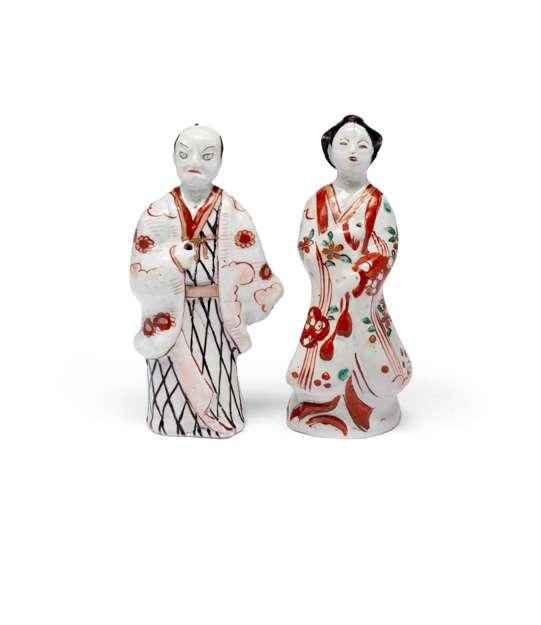
EDO PERIOD, C.1700
Both depicted standing with one hand raised to their chest, the man wearing a jacket with voluminous sleeves over his robes, the garments painted in red, black and gilt with flowers and a cross-hatched pattern; the bijin’s kimono embellished with prunus flowers, waves and clouds in gilt, red and green enamels, both with gauze marks underneath and the male figure with an illegible black ink inscription to the base; 16.3cm and 16.7cm respectively. (2) £600-800
21
THREE JAPANESE ARITA MOULDED DISHES
EDO PERIOD, 18TH CENTURY
With scalloped rims, each formed as a crane with its wings outstretched above its head, painted in polychrome enamels and gilt, the undersides left undecorated, each 22cm. (3)

£200-300
The tsuru-no-maru (crane in a circle) design was used by the Mori clan as its mon (family crest).
See the Ashmolean Museum, Oxford, access no.EA1978.496 for an underglaze-blue dish of similar form.
22
A JAPANESE IMARI BOWL AND COVER EDO PERIOD, C.1700
Typically decorated in underglaze blue, gilt, red, yellow and green enamels, both painted with flowering branches of prunus and cherry blossoms, the insides with chrysanthemum mon, 15.8cm dia. (2)
PLEASE NOTE THIS LOT IS TO BE OFFERED WITHOUT RESERVE. £100-200
23
A JAPANESE IMARI BOWL EDO PERIOD, C.1700


Typically decorated in underglaze blue, gilt, red and pink enamels, the well with pavilions in a river landscape, and the cavetto with flowering sprays of chrysanthemum; with shaped panels enclosing further blooms to the exterior, a paper label reading ‘Christie’s 10. Dec. 1998, lot 484’, 24.6cm.
£200-300
Provenance: from a British private collection, formed 1970-2003.
12TH CENTURY AND LATER
Comprising: two small jian-style bowls, one with hare’s fur glaze; two cups decorated with polychrome enamels and each with a rabbit mark underneath; two scalloped bowls with squirrels and vines, and a leaf-shaped dish painted in Kakiemon style with deer, 14.6cm max. (7)
PLEASE NOTE THIS LOT IS TO BE OFFERED WITHOUT RESERVE.
£150-250
Provenance: an Irish private collection, Dublin.
25
A JAPANESE CELADON MOULDED TOKKURI (SAKE BOTTLE) POSSIBLY EDO PERIOD, 17TH OR 18TH CENTURY

The faceted body decorated with a continuous design of butterflies fluttering above flowers issuing from rockwork; framed by scalloped borders above and below, the base left unglazed, 17.7cm.
PLEASE NOTE THIS LOT IS TO BE OFFERED WITHOUT RESERVE.
£80-120
Provenance: an Irish private collection, Dublin.
Made for the Japanese market, the square dish decorated in polychrome enamels with two fishermen on a sampan, both men depicted standing, one holding a net; with branches of willow above and lotus leaves beside them, the base with an underglaze blue Wenguang (literary lustre) seal mark, 13.6cm.
£400-600
See Christie’s London, The Peony Pavilion Collection: Chinese Tea Ceramics For Japan (c.1580-1650), 12th June 1989, lot 367, for a dish with the same design. Also, see K Butler and T Canepa, Leaping the Dragon Gate, The Sir Michael Butler Collection of Seventeenth-century Chinese Porcelain, figs. III.1.299 and III.1.300, for two other dishes with the same style of decoration but depicting different scenes.


27
AN UNUSUAL JAPANESE POTTERY BOWL
MEIJI OR LATER, 19TH OR 20TH CENTURY
Imitating parcel-gilt bronze, of flattened circular form and with a wide indented mouth, the exterior decorated with sprays of flowers and leaves tied up with string, with details in gilt on the brown textured ground; the inside with a thin white crackled glaze, raised on an associated wood stand, 14.5cm. (2)
PLEASE NOTE THIS LOT IS TO BE OFFERED WITHOUT RESERVE.
£400-600
Provenance: an Irish private collection, Dublin.
28
A JAPANESE ELEPHANT-SHAPED KORO (INCENSE BURNER AND COVER)
EDO OR MEIJI, 19TH CENTURY
The recumbent pachyderm with its head slightly turned to the right, the surface with a bluish-white glaze and the eye with an iron-brown dot, the lid pierced with four circular apertures, the base with gauze marks, in a tomobako wood box, 18cm. (3)
PLEASE NOTE THIS LOT IS TO BE OFFERED WITHOUT RESERVE.
£200-300
Provenance: an Irish private collection, Dublin.
29
A JAPANESE GLOBULAR VASE
MEIJI ERA,19TH/20TH CENTURY
Decorated in polychrome enamels with shaped panels enclosing landscapes, some with figures, birds and pavilions, each with an inscription; between bands of floral designs and scrolling tendrils, 19cm.
£100-200
30
A PAIR OF JAPANESE BLUE AND WHITE BOWLS MEIJI OR LATER, 19TH OR 20TH CENTURY
Both decorated in underglaze blue with a continuous river landscape to the outside; the inside with a large kirin to the well and panels of further creatures around the rim, both with a three-character signature underneath and a seal mark, 11.8cm. (2)
£100-200
31
A LARGE JAPANESE KUTANI OVOID VASE
MEIJI OR LATER, 20TH CENTURY
Decorated with a phoenix and a large writhing dragon amongst scrolling clouds and above crashing waves, in gilt and silver on the deep iron-red ground, the neck with a key fret border, the base inscribed Dai Nihon Kutani zo and with a three-character impressed seal mark, 35.5cm.
£400-600
32
A LARGE JAPANESE SETO WARE BLUE AND WHITE MOULDED BOWL
MEIJI OR LATER, 20TH CENTURY
With an irregular foliate rim, the well decorated with a large number of flowers including chrysanthemum, peonies, hydrangea and others, the reverse with a multitude of brocade patterns, the lower section imitating a woven basket, the base with a six-character mark, 38.2cm dia.
33
A JAPANESE KUTANI FIGURE OF GAMA SENNIN MEIJI ERA, 19TH/20TH CENTURY
Seated on a rocky outcrop, the Immortal carries his three-legged pet toad on his shoulder; painted in polychrome enamels with details highlighted in gilt, 25cm. £200-300
34
A JAPANESE ENAMELLED VASE MEIJI ERA, 19TH/20TH CENTURY
The baluster body with a dense design of scrolling tendrils on a blue ground, the decoration rendered in raised blue, white, green and yellow enamels, the footrim with an impressed mark for Taizan, 21.3cm.
PLEASE NOTE THIS LOT IS TO BE OFFERED WITHOUT RESERVE.
£80-120
35
TWO JAPANESE KUTANI FIGURAL GROUPS MEIJI OR LATER, 20TH CENTURY
One of Kenzan and Jittoku, the two friends examining a handscroll; the other depicting Hotei with a small boy; both groups colourfully painted and with details in gilt, 28cm and 32.5cm respectively. (2)
PLEASE NOTE THIS LOT IS TO BE OFFERED WITHOUT RESERVE.
£200-300
Provenance: an Irish private collection, Dublin.









36
MEIJI OR LATER, 20TH CENTURY
Laden with sacred objects including Daikoku’s mallet, the sail painted with a large ho-o bird, the decoration rendered in bright polychrome enamels and gilt; together with a rectangular dish with flowers and scrolling tendrils, in a tomobako wood box, 26.7cm and 18.2cm respectively. (3)
PLEASE NOTE THIS LOT IS TO BE OFFERED WITHOUT RESERVE.
£80-120
37
A COLLECTION OF NINE JAPANESE SUMIDA WARE ITEMS
MEIJI AND TAISHO, 19TH AND 20TH CENTURY
Comprising: a figure of Kannon and another of Daruma; a large conical wall vase, a bowl, two tall cups and three vases of various sizes; all the vessels decorated with typical dripping glazes and figures in relief, five signed Banni and three with the mark for Inoue Ryosai, 34.5cm max. (9)
PLEASE NOTE THIS LOT IS TO BE OFFERED WITHOUT RESERVE.
£200-400
Provenance: an Irish private collection, Dublin.
38
A SMALL COLLECTION OF JAPANESE PORCELAIN ITEMS
MEIJI OR LATER, 19TH OR 20TH CENTURY
Comprising: an Imari-style foliate dish decorated with many chrysanthemums and brocade patterns in gilt and polychrome; a dish painted with large cherry blossoms in iron-red and gilt, and a small Nabeshima-style square-section vase with a tall neck decorated with flower sprays, all signed, 27.7cm max. (3)
PLEASE NOTE THIS LOT IS TO BE OFFERED WITHOUT RESERVE.
£150-250
Provenance: an English private collection, acquired in Japan in the 1960s-70s.
MEIJI OR LATER, 19TH OR 20TH CENTURY
Of rectangular shape, the lid painted in bright polychrome with two beauties amongst flowers and a small dog, the sides with further panels enclosing flowers, on a turquoise ground with peonies and scrolling tendrils; the base with a circular aperture and a square unglazed section for the inkstone, 8.8cm x 16.8cm x 27.7cm. (2) £200-300
Provenance: an English private collection, Somerset, purchased in Japan.
MEIJI ERA, 19TH/20TH CENTURY
All painted with scenes illustrating the First Sino-Japanese War (1894-95), two depicting naval combat with ships flying the Kyokujitsu-ki (Japanese Rising Sun Flag), and the others with a variety of land battles, some dishes with horse riders and others with soldiers shooting firearms, each 21.1cm. (7)
£200-400
MEIJI ERA, LATE 19TH OR EARLY 20TH CENTURY
Delicately painted in polychrome with two frolicking sparrows by a bamboo grove, with small yellow flowers beside them; the reverse with an impressed oval mark and three red characters reading Nikko zo, 12.2cm.
£200-300
42
TWO JAPANESE NABESHIMA DISHES MEIJI ERA, 19TH/20TH CENTURY
One decorated in underglaze blue with narcissi, the other with a prunus tree in the mist, with cherry blossoms highlighted in red and pink enamels, both raised on a tall foot with comb design, together with a blue and white Hirado saucer painted with boys at play, all three with paper labels for the Mary & Peter White Collection, 15.5cm max. (3) £200-400
MEIJI ERA, 19TH CENTURY
The well decorated in polychrome enamels with two small rats and flowering sprays of chrysanthemum, the reverse signed with two lines of calligraphy, 22.1cm.
PLEASE NOTE THIS LOT IS TO BE OFFERED WITHOUT RESERVE. £150-250
Provenance: from an English private collection, West Yorkshire, formed in the 1970s and 1980s.
44
TWO JAPANESE NABESHIMA DISHES
MEIJI ERA, 19TH CENTURY
Both decorated in underglaze blue and polychrome enamels, one with shaped panels enclosing the shochikubai (pine, prunus and bamboo) on a cracked-ice ground, the other with a fruiting branch of chestnut, both painted underneath with beribboned clusters of cash and raised on a short foot with comb design, with paper collection labels for the Mary & Peter White Collection, both approx. 20.6cm. (2) £300-500








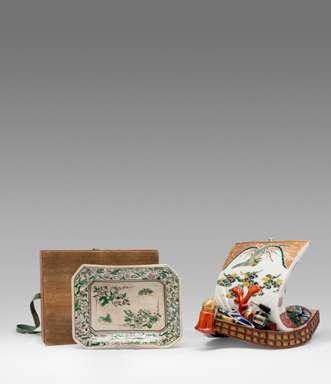
EDO OR MEIJI ERA, 19TH CENTURY
Possibly Seto ware, the small pottery box modelled with Daikoku standing on a hay bale, the God of Good Fortune lifting his mallet over his head to hit a hoju (wish-fulfilling jewel) before him, the underside with a circular mark, a paper label inside reading ‘Owari, Masaki 1850’, possibly referring to Dr Bunkio Masaki (act. 19th century), 6.8cm. (2)

£200-300
See the Metropolitan Museum, New York, access. no.93.1.38a,b, for a similar kogo with two figures on the lid by Dr. Bunkio Masaki.
MEIJI ERA, 19TH CENTURY
The foliate body decorated with a large three-clawed dragon to the well, the cavetto with lappets enclosing designs of flowers and leafy tendrils, the exterior with further flowerheads and formal designs, the base with a two-character mark, all rendered in thick enamels, together with an inscribed tomobako box, 15.7cm. (2)
£150-250
MEIJI OR LATER, 19TH OR 20TH CENTURY
Painted to the well with an archer and a beauty gardening, with large peonies to the side, brocade patterns and other geometric designs to the rim; the exterior with further blooms and scrolling tendrils, the base with a six-character mark, together with a tomobako wood box, 15.4cm. (2)

£150-250

Intricately decorated in enamels and gilt, the moulded well painted with an elaborate scene of butterflies fluttering next to flowering chrysanthemum and peony, a kingfisher perched amongst the blooms; a fisherman holding a net and a basket visible in the background and a couple of deer on a hill behind, the cavetto painted with a ribbon embellished with brocade patterns, Buddhist emblems and other formal designs including ho-o birds, the back left undecorated, 48.9cm x 36cm x 6cm.


£400-600
MEIJI ERA, 19TH/20TH CENTURY
The tallest a Kutani vase of baluster shape, the other a Satsuma double-handled vase raised on three shaped feet; both richly decorated in gilt and polychrome enamels, with scenes of figures in landscapes, beauties and gods, framed by dense panels of brocade patterns and flowers; the Kutani vase with a nine-character mark to the base, 62cm and 49.5cm respectively. (2)
PLEASE NOTE THIS LOT IS TO BE OFFERED WITHOUT RESERVE.
£400-600
Provenance: an Irish private collection, Dublin.
50
MEIJI PERIOD, 19TH/20TH CENTURY
Of hexagonal shape, typically decorated in polychrome and gilt with rectangular panels enclosing many beauties in an interior, immortals and scholars, together with an associated wooden stand, a three-character signature in a rectangular reserve underneath, 14.8cm. (3)

THREE JAPANESE SATSUMA PIECES
MEIJI ERA, 19TH/20TH CENTURY
One a tall square-section vase decorated with Immortals in landscapes, with dragons and mon to the shoulder, marked Satsuma underneath; together with a foliate dish painted with many insects to the well, flowers and brocade patterns, and another dish painted with a sarumawashi carrying his pet monkey on his back while being surrounded by children, the cavetto with continuous bands of flowers, signed Gyokuzan underneath, 24cm max. (3)
PLEASE NOTE THIS LOT IS TO BE OFFERED WITHOUT RESERVE. £200-300
Provenance: an Irish private collection, Dublin.
52
A COLLECTION OF JAPANESE MINIATURE PIECES

MEIJI AND LATER, 19TH AND 20TH CENTURY
Comprising: nineteen Satsuma pieces, variously shaped as vases, teapots, a box and cover, and bowls; painted with figures, flowers and landscapes, some with signatures; together with a miniature Kutani bowl, and a Fukagawa bowl painted with fish and irises, signed Fukagawa sei, 10cm max. (21)
PLEASE NOTE THIS LOT IS TO BE OFFERED WITHOUT RESERVE. £200-400
Provenance: an Irish private collection, Dublin.
53
A COLLECTION OF JAPANESE SATSUMA PIECES
MEIJI ERA, 19TH/20TH CENTURY
Comprising: a figure of Jurojin, five vases of various shapes, a jar and cover and two small kettles with lids, all typically decorated in polychrome and gilt with beauties, Immortals, flowers and animals, some with signatures, 16.2cm max. (12)


PLEASE NOTE THIS LOT IS TO BE OFFERED WITHOUT RESERVE.
£300-500
Provenance: an Irish private collection, Dublin.

One dish decorated with a large kakemono (scroll painting) depicting thatched pavilions in a mountainous river landscape, with coopers working on barrels in and out of the buildings, the trompe l’oeil painting signed with a red gourd-shaped seal mark for Sozan and on an ornate silk mount decorated with chrysanthemum mon, a basket of fruits before it; the reverse with an elaborate mark painted as two books and flowers, a long inscription reading Dai Nihon Kyoto, Awata, Kinkozan seizo, Sozan ga; the other dish painted with two scrolls, one depicting a landscape and the other three Chinese sages, both with a red seal mark for Sozan and with a model of a takarabune (treasure boat) and chrysanthemum before them; the reverse also with an elaborate signature reading Dai Nihon Kyoto Kinkozan seizo; 18.6cm and 19cm respectively. (2)
The well delicately painted with a beauty observing farmers at work, a water mill behind them; the reverse embellished with keyfret, prunus flowers and ornate medallions, signed Kinkozan in gilt and impressed Kinkozan zo, 7.4cm.


The square-section vase typically decorated in polychrome and gilt with panels enclosing figures in landscapes, the shoulder with a dense pattern of butterflies fluttering amongst flowers, the base with a faint signature, possibly for Kinkozan; together with a rectangular box and cover, the lid finely painted with pavilions in a mountainous river landscape, the base signed Kinkozan zo, the vase 12cm and the box 2.8cm x 4.7cm x 8.1cm. (3)

Of bulbous form and raised on a slightly flaring foot, typically decorated in polychrome and gilt with two large panels, one enclosing beauties and children in a garden and the other, armour-clad samurai; all reserved on a navy-blue ground richly painted with gilt brocade patterns, flowers and scrolling tendrils, the base with a faint mark for Kinkozan zo, 15.5cm.
58 A PAIR OF JAPANESE SATSUMA VASES BY TAIZAN


MEIJI ERA, 20TH CENTURY
Of baluster shape, both decorated with sparrows in flight on a blue-green ground, each with borders of brocade patterns, mon and other formal designs above the foot and to the neck, each signed underneath Dai Nihon Taizan sei in black ink and with an impressed mark for Taizan, both 31cm. (2)
£150-250
59
TWO JAPANESE BASKET WEAVE VASES
MEIJI ERA OR LATER, 20TH CENTURY
The green bodies painted with branches of prunus, encased in white metal basket-weave mounts, 22cm and 22.4cm respectively. (2) £200-300

MEIJI ERA, 19TH CENTURY
The incense burner of bulbous form and raised on three curved feet, decorated with shaped fans enclosing brocade patterns and flowers, the metal lid topped with leafy chrysanthemums; together with two miniature cloisonné vases with butterflies in flight on a dark blue ground, the koro 11.5cm and both vases 12.4cm. (4) £300-500

62 A LARGE JAPANESE BRONZE BELL MEIJI ERA, 19TH/20TH CENTURY

Decorated to one side with a herd of deer in a mountainous landscape, the reverse with a smoking traveller observing boats sailing into the distance, with a continuous band of scrolling clouds above and the handle similarly shaped, raised on a fitted circular bronze stand with bamboo, reticulated bands of swastika and chidori birds in flight, 37.5cm overall. (2)

The bulbous body raised on a stepped circular base, with lion-head handles to the sides, the knop shaped as a seated shishi and the spout modelled as a three-clawed dragon, with bands of shaped lappets to the shoulder and above the foot, together with a removable stopper, 48cm overall. (3)
63 A JAPANESE BRONZE VASE MEIJI ERA, 19TH/20TH CENTURY

The pear-shaped body decorated with a large scaly dragon clasping a pearl of wisdom, the mythical beast writhing amongst crashing waves, the base with a Chinese mark reading Da Ming Xuande nian zhi, 14.7cm.
Provenance: an English private collection, Somerset, purchased in Japan.

The baluster bodies decorated with panels enclosing many birds and flowers rendered in relief, both vases embellished with a large writhing dragon in the lower section and bird-shaped handles, each with a band of gold splashes to the neck and inscribed with a poem, one possibly translating as ‘Bush warblers are singing and flitting between the branches of plum trees, as if they are embroidering a hat with designs of plum blossom’ and the other ‘ The guards are idle at the moment, however, the scent of plum flowers is carried though the fence by the wind’’, signed Hashimoto for Hashimoto Isshi I (1820-1896) or II (act. c.1903), both 76.5cm. (2)
£3,000-5,000
Cf. R E Haynes, The Index of Japanese Sword Fittings and Associated Artists, p.400, where both Isshi I and II are discussed. Hashimoto Isshi I came from Omi Province and later worked in Edo by order of the Shogun, before returning to Kyoto in 1863. The author notes that he ‘became a retainer of the Hirohata kuge family and was allowed to wear a sword’. His son Yoshitaro, later becoming the second Isshi, worked in the same style as his father and because of this, it can be difficult to differentiate their works.
66 A SMALL JAPANESE SILVER-INLAID BRONZE VASE

MEIJI ERA, 19TH CENTURY
The pear-shaped body decorated with a pheasant perched on a flowering branch of prunus, with details rendered in mixed metals including silver, gold, and shakudo, the side with a two-character signature, together with a fitted wood stand, 16.3cm. (2)
65
A JAPANESE BRONZE TRUMPET VASE


MEIJI ERA, 19TH CENTURY
The tall body with a flared neck and spreading foot, decorated in high relief with a bird perched on a branch of bamboo looking up towards a fly, the base with a square seal mark, 28.3cm.
67
MEIJI ERA, LATE 19TH/EARLY 20TH CENTURY
tall cylindrical form, decorated to one side with leafy branches of bamboo rendered in low relief, the side with a two-character signature, 24.5cm.
68
Of tall cylindrical form, one side decorated with a small songbird perched on a flowering branch of magnolia, with daisies to the side and large lotus leaves underneath; the reverse with another large magnolia bloom and further lotus, the decoration rendered in mixed metals including gold, silver, and copper, the rim embellished with a band of scrolling patterns, the base with an inlaid copper seal mark for Dai Nihon Tokyo Saito seizo, 30cm.


Decorated to the well with a silver crane wading amongst large lotus leaves and flowers, with details highlighted in inlaid wires of various colours, the cavetto with a band of geometric designs and three mitsuba-aoi mon (three hollyhock leaves crest) used by the Tokugawa clan, the reverse with a two-character mark, 24.2cm.
£300-500

MEIJI ERA, 19TH CENTURY
Of baluster form with a splayed foot, the shoulder applied with dragon-shaped handles, decorated to both sides with birds and flowers in low relief, with details highlighted in gilt and silver iro-e takazogan, takabori and katakiribori, the foot with two shishi masks and the neck with formal scrolling patterns in iro-e hirazogan, 30.5cm.
MEIJI OR TAISHO, 20TH CENTURY
Of typical rectangular shape, both sides decorated with rings enclosing various designs, on a ground of vertical lines reminiscent of textile patterns, the inside with the Fuji mark of Yoshitoyo’s Fujii Damascene Company, 8.2cm x 9cm.

PLEASE NOTE THIS LOT IS TO BE OFFERED WITHOUT RESERVE.
£150-200

Provenance: an Irish private collection, Dublin.

MEIJI ERA, 19TH CENTURY
The tall slender body decorated with an onagadori chicken perched on a flowering branch of prunus, with details in red, gilt and silver inlays, the side with a three-character signature, possibly for Koen, and marked Kyoto Kuroda zo underneath, 22.2cm.
74 A JAPANESE KOMAI INLAID IRON BOX AND COVER MEIJI ERA, 19TH/20TH CENTURY

Of rectangular shape with a hinged cover and raised on four bracket feet, decorated to the top with a panel enclosing pavilions and thatched buildings in a mountainous river landscape, a silver Fuji towering in the distance; the sides with a dense pattern of vine leaves, the inside with a further depiction of Mount Fuji, the base with the dragonfly mark for Komai Otojiro of Kyoto (1842-1917) and sealed Nippon koku Kyoto ju Komai sei, 4.5cm x 10.5cm x 7.4cm.
£400-600
Provenance: from the collection of Lord Montagu (1926-2015) of Beaulieu Palace House, New Forest, Hampshire.


Of baluster shape, decorated in gold and silver nunomezogan with shaped panels enclosing thatched pavilions in mountainous river landscapes and various plants with leafy tendrils, the shoulder with lappets of formal designs, the neck with grapevines and a key fret border to the rim, a seal mark for Kyoto Moriguchi to the side, 13.5cm.
£600-800

Of rectangular shape with a hinged lid and raised on four bracket feet, the top decorated with the sankin-kotai procession of a daimyo and his retinue to Edo, the lord riding on a horse and surrounded by soldiers and other attendants, some bearing standards; the sides with depictions of arms, armours and auspicious objects; the inside with a three-tiered pagoda and another pavilion, all rendered in gold, silver and copper on the black ground; the base with the dragonfly mark for Komai Otojiro of Kyoto (1842-1917) and sealed Nippon koku Kyoto ju Komai sei, 4.3cm x 10.7cm x 7.4cm.
£500-800
76
A LARGE EARLY JAPANESE CLOISONNE VASE AND COVER EDO OR MEIJI ERA, C.1860-70

The baluster body decorated with two circular panels each enclosing a chicken, all reserved on a background of leafy tendrils, flowers, and geometric textile-weave panels, the lid with similar decoration and an ovoid knop, 57.5cm. (2) £300-500


With tall baluster bodies, decorated with large poppies and other flowers on a canary-yellow ground, some petals rendered in foil, both with a stamped flower mark underneath for Tsukamoto Hikokichi, both 18.2cm. (2)
PLEASE NOTE THIS LOT IS TO BE OFFERED WITHOUT RESERVE. £100-200
Provenance: an Irish private collection, Dublin.
78
A PAIR OF JAPANESE CLOISONNE VASES MEIJI ERA, 19TH CENTURY
Of cylindrical form, both decorated with continuous designs of many butterflies flying amongst flowering peonies on a bright blue ground, the necks embellished with a band of writhing dragons amongst scrolling clouds, the design rendered in silver, gold and brass wires, both 31.8cm. (2)
£200-300
Of tall baluster shape, each decorated with a large bird of prey perched on a branch of flowering prunus, on a deep midnight-blue ground, both vases with bands of triangular lappets above the foot and under the rim, both 38.5cm. (2)
£200-300
Provenance: from the collection of Frederick Sutton, Mayor of Salisbury (1912-13), Wiltshire, and thence by descent.


MEIJI ERA, 19TH OR 20TH CENTURY
The rectangular-section body decorated with two colourful doves perched on a flowering prunus tree, the reverse with further branches on the deep midnight-blue ground; the shoulder with a complex design of lappets enclosing flowers and other formal designs, a band of geometric patterns above the foot and to the neck, the base with an impressed mark reading O Kichi for Ota Kichisaburo, 15.2cm.
£400-600

Both of baluster shape and decorated with sparrows in flight, large chrysanthemum blooms and small daisies on a dark blue ground, with bands of formal designs and flowerheads to the rims, each vase with an impressed mark underneath depicting a single character in a five-petalled flower, both 18.8cm. (2)
£400-600

82
The tall baluster body decorated with two sparrows in flight on a deep midnight-blue ground, with sprays of flowering daisies and bamboo beside them, the reverse with further bamboo branches, with bands of lappets enclosing formal designs above the foot and below the rim, with silver mounts, the base signed with the lozenge mark of Hayashi Kodenji rendered in silver wire, 24.5cm.
83


The baluster body embellished with a continuous design of many flower sprays including chrysanthemum, peonies, daisies, dandelions, a maple tree and many other plants, a small stream meandering amongst the vegetation, all rendered in silver and gold wires on the dark midnight-blue ground; with bands of formal designs above the foot and to the neck including paulownia mon, the rims with silver mounts and the base marked Aichi Hayashi saku with the stamped lozenge seal of Hayashi Kodenji, 18.2cm. £800-1,200

A RARE JAPANESE CLOISONNE KORO (INCENSE BURNER) BY NAMIKAWA YASUYUKI (1845-1927) MEIJI ERA, C.1910-15

The square-section body raised on four short feet, delicately decorated with two small birds flying towards flowering branches of prunus, the scene rendered in polychrome enamels and gold wires, the sakura blossoms and buds in various shades of pink; with silver and shakudo mounts and cover, the lid with an openwork design of a flower with radiating petals; the base with the four-character mark for Kyoto Namikawa in silver wires, 9.5cm. (2) £6,000-8,000
Cf. R Singer, Polished to Perfection: Japanese Cloisonné from the Collection of Donald K. Gerber and Sueann E. Sherry, p.16, where a related koro with silver and gold wires is illustrated.
See Japanese Works of Art, 14th November 2018, lots 1014 & 1015 for two cloisonné trays sold in these rooms bearing the same signature. It appears that this mark was used for the best pieces produced by Namikawa Yasuyuki’s workshops, and possibly for those made for international exhibitions.
Kyoto Namikawa mark on base
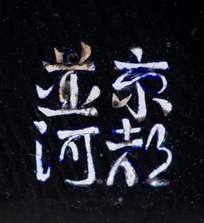


MEIJI ERA, 19TH/20TH CENTURY
The ovoid body with dragon-shaped handles and supported by three karako, the cover topped by a seated scholar in Chinese dress holding an open book; the sides decorated with scrolling clouds and further mythical creatures in low relief, the base with a three-character mark possibly for Kirakusai Seiun, 36.5cm.


MEIJI ERA, 19TH/20TH CENTURY
Both with a globular double-handled body raised on four tall legs, one lid with a rat perched on Daikoku’s mallet, the other with a scholar holding a book, the bodies decorated with medallions enclosing auspicious animals and mythical beasts on a leiwen ground, both cast with a three-character mark underneath, possibly for Kirakusai Suiun, 16.5cm and 17.5cm respectively. (4)
89
MEIJI OR LATER, 19TH OR 20TH CENTURY
Typically depicted with his eyes lowered and with a serene expression, his hair cast in tight curls, seated in the dhyanasana meditative pose, with his hands held before him in the mida no join mudra, raised on a large lotus throne, 53cm. (2)
£300-500
The God of Good Fortune looking jovial as he sits, leaning against his treasure sack, a small fan in his hand; signed Juko at the back, and presented on a red silk cushion, 21cm. (3)

£250-350
Provenance: an English private collection, Somerset, purchased in Japan.
The Father of Zen Buddhism is depicted standing, wearing long flowing robes opening to reveal his bare chest, raised on a scroll-shaped stand, 31cm. £600-800

Provenance: a private American collection, purchased from Sotheby’s, London, Japanese Works of Art, 13th November 1986, lot 1129. A copy of the original invoice is available.

92

Realistically cast, the child is depicted standing and holding a triangular flag; he wears ornate garments decorated with butterflies and with details in gilt; signed Miyao zo for Miyao Eisuke of Yokohama (act. late 19th c.) in a rectangular cartouche at the back, attached to a wood stand with gold lacquer decoration, 11.5cm. (2)

PLEASE NOTE THIS LOT IS TO BE OFFERED WITHOUT RESERVE.
£200-300
Provenance: an Irish private collection, Dublin.
94

The two men locked in combat, both depicted grabing his opponent under one arm, the two men cast in an angular fashion, raised on an irregularly-shaped base, dated and signed Inosuke Yamaguchi at the back, 36cm.
£500-800
Provenance: an English private collection, Somerset, purchased in Japan.
MEIJI ERA, 19TH OR 20TH CENTURY
Depicted standing, the child appears to be laughing as he holds a lion mask for the shishimai dance; with a seal mark to the back reading Yoshiyama / Hozan, 39cm.
£500-800
Provenance: an English private collection, Somerset, purchased in Japan.
95
A JAPANESE BRONZE OKIMONO OF A TIGER
MEIJI ERA, 19TH/20TH CENTURY
The feline standing four-square and baring its fangs in a snarl, the eyes inset in glass and with the stripes on its back naturalistically depicted, the belly signed Tadamitsu, in an inscribed tomobako wood box, 50cm. (2) £300-500
Provenance: an English private collection, Somerset, purchased in Japan.
96
A JAPANESE BRONZE OKIMONO OF AN OX MEIJI ERA, 19TH/20TH CENTURY
Realistically modelled, the bovine standing four-square with its head slightly turned to the left, together with an associated wood rectangular stand, 35cm. (2) £600-800

97
A JAPANESE BRONZE OKIMONO OF A LION BY GENRYUSAI SEIYA

MEIJI ERA, LATE 19TH/20TH CENTURY
Realistically modelled, standing four-square and with its mouth opened in a snarl, the belly signed Seiya saku in a rectangular cartouche, 25cm. £250-350
98
A JAPANESE BRONZE OKIMONO OF A PUPPY BY TAKAHASHI RYOUN

MEIJI OR TAISHO ERA, 19TH OR 20TH CENTURY
The plump dog depicted seated on its haunches, with its head slightly turned to the left, a two-character mark underneath for Ryoun, 15cm. £800-1,000

Ryoun was a famous bronze artist living in Tokyo at the turn of the century. He was a special member of the Tokyo School of Fine Arts, and he exhibited at the Exposition Universelle in Paris in 1900, where he received several awards for the quality of his artworks.
Provenance: an English private collection, Somerset, purchased in Japan.
99 A SMALL COLLECTION OF CLOISONNE ITEMS 19TH AND 20TH CENTURY
Comprising: a pair of Chinese champlevé boxes and covers with lotus flowers and scrolling tendrils; a miniature bottle vase with a dragon clasping a sacred pearl, and a small Japanese circular box and cover with a butterfly fluttering above sprays of chrysanthemum on a yellow mottled ground, 13cm max. (7)

£300-500
101
A JAPANESE WHITE METAL BOX TAISHO OR LATER, 20TH CENTURY
Of rectangular shape and with a hinged lid, decorated all over with a woven design, the top with bamboo leaves and branches, a wood lining to the inside, a small two-character seal to the top and inscribed underneath, 6.3cm x 18.7cm x 10cm.

PLEASE NOTE THIS LOT IS TO BE OFFERED WITHOUT RESERVE.
£80-120
103
A COLLECTION OF SIX JAPANESE BRONZE ITEMS
MEIJI ERA, 19TH AND 20TH CENTURY
Comprising: five vases of various shapes and sizes, decorated with birds and flowers, some with signatures including Koushuu, the tallest with a sparrow in relief looking down at two other birds underneath a large leaf; together with a model of a torii gate, the mark for the Nogawa Company underneath, 26cm max. (6)

PLEASE NOTE THIS LOT IS TO BE OFFERED WITHOUT RESERVE.
£300-500
Provenance: an Irish private collection, Dublin.
MEIJI OR LATER, 20TH CENTURY
Comprising: a bronze model of a minogame, the carapace of the legendary turtle inlaid with silver-coloured wires; a double-gourd sake bottle with decoration rendered in white slip, and a circular cloisonne box and cover decorated with a ho-o bird amongst auspicious symbols, 17cm max. (4)
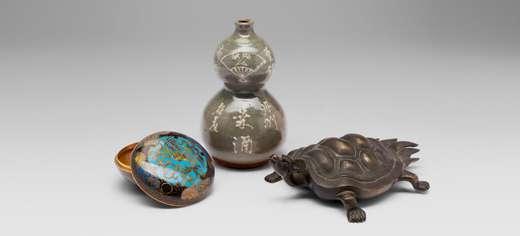
£200-300
102
A JAPANESE BRONZE OKIMONO OF A SEED POD MEIJI OR TAISHO, 20TH CENTURY
Realistically cast, a seed visible through a slit at the front, with three large leaves above, the reverse with a three-character mark in a rectangular cartouche, in a tomobako wood box, 23cm. (2)

PLEASE NOTE THIS LOT IS TO BE OFFERED WITHOUT RESERVE.
£200-300
Provenance: an Irish private collection, Dublin.
104
A COLLECTION OF JAPANESE SWORD FURNITURE
EDO AND MEIJI, 18TH AND 19TH CENTURY
Comprising: two tsuba, one with a writhing dragon and the other with pavilions in a landscape, both signed; a kogai (hairpin) with geese; three kozuka and eight menuki, all variously decorated with animals and figures, most pieces with details in mixed metal inlays, some signed, 22.2cm max. (14)

PLEASE NOTE THIS LOT IS TO BE OFFERED WITHOUT RESERVE.
£400-600
Provenance: an Irish private collection, Dublin.
105
MEIJI OR TAISHO, EARLY 20TH CENTURY
The mythical turtle depicted with long seaweed growing from the top of its shell and trailing behind it, its head slightly turned to the left, the underside signed Ryubundo zo, and with a junjin silver mark below, 24.4cm.

£1,500-2,000
Provenance: an English private collection, Somerset.
See Japanese Works of Art, 23rd November 2021, lot 1004, for a related okimono signed Ryubundo sold in these rooms.
Cf. L Bordignon, The Golden Age of Japanese Okimono, pp.243-4 for another example of a silver minogame signed Ryuki.
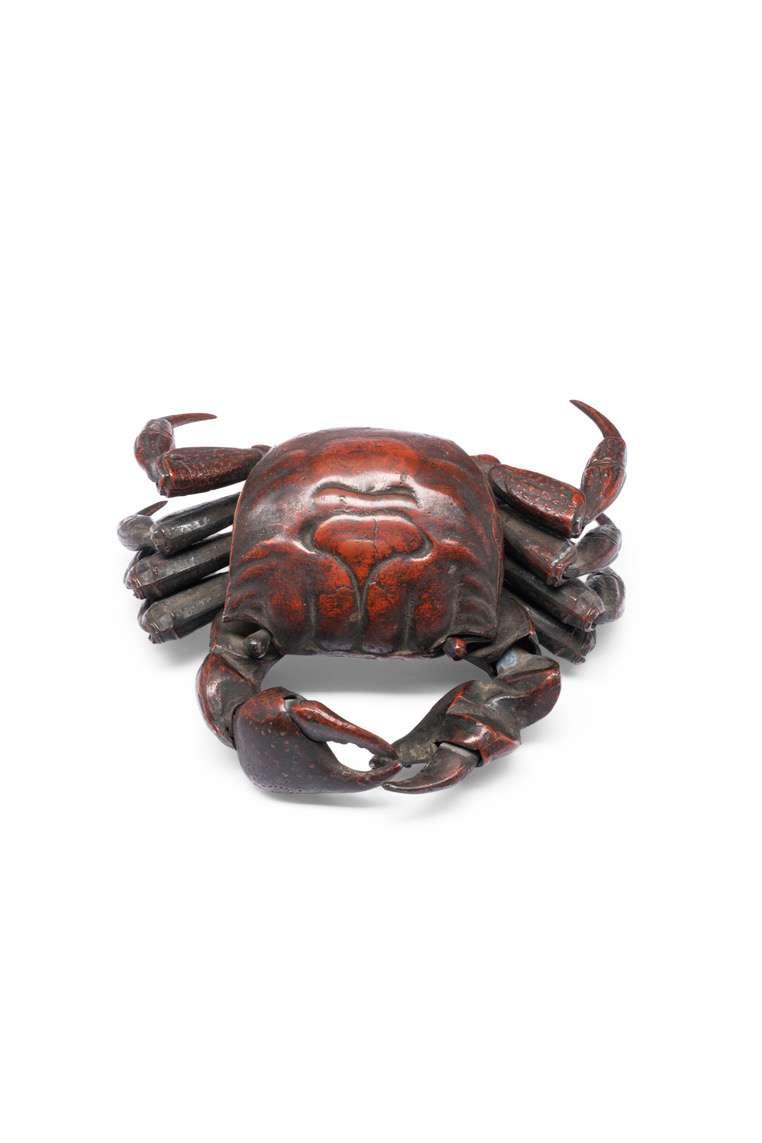
MEIJI ERA, 19TH OR 20TH CENTURY
Naturalistically modelled with articulated limbs, the exoskeleton intricately worked and the surface a reddish colour, the underside with a three-character signature, 22.5cm.
£1,500-2,000
Provenance: an English private collection, Somerset, purchased in Japan.

108
The seated primate is depicted holding a netsuke of a monkey attached to a fabric tabako-ire (tobacco pouch), with details rendered in polychrome, the base with two paper collection labels numbered 985, 23cm.

£300-500
Provenance: formerly in the Charlton collection, by repute.
EDO AND MEIJI, 18TH AND 19TH CENTURY
Comprising: three bamboo and metal kiseru (pipe), one in a fabric pouch; a tooled leather tobacco pouch; a woven rattan kiseruzutsu (pipe case); another made of stag antler carved with an Immortal, attached to a wooden shoe-shaped tabako-ire (tobacco box); a third kiseruzutsu made of wood and attached to a burr tabako-ire; together with an inlaid bronze yatate (writing set), 21cm max. (9)


PLEASE NOTE THIS LOT IS TO BE OFFERED WITHOUT RESERVE.
£200-400
Provenance: an Irish private collection, Dublin.
110

Possibly Chinese, the wood case and cover covered in fish skin, the brass mounts embellished with foliate decoration, attached to a glass toggle, 18cm.
111 A COLLECTION OF FIFTEEN JAPANESE OJIME MEIJI ERA, 19TH CENTURY
Made of various materials, one shaped as a small purse with paulownia mon, another a small double-gourd, a third a saya sheath inro, some with signatures, together with a piece of coral, 2.5cm max. (15)

PLEASE NOTE THIS LOT IS TO BE OFFERED WITHOUT RESERVE. £150-250
Provenance: an Irish private collection, Dublin.
112 A COLLECTION OF JAPANESE MASKS MEIJI ERA, 19TH/20TH CENTURY
Comprising: a large ashtray carved as a demonic face with its mouth wide open; two pottery netsuke, one of Usofuku and the other of Okame, both signed; a metal netsuke of a grimacing face; and two wood netsuke, one of a horned oni and the other of a lion dog for the shishimai dance, with movable lower jaw, signed, 6.8cm max. (6)

PLEASE NOTE THIS LOT IS TO BE OFFERED WITHOUT RESERVE. £400-600
Provenance: an Irish private collection, Dublin.
113

EDO AND MEIJI, 18TH AND 19TH CENTURY
One carved in wood and depicting an ornate cage or basket, the sides with openwork designs of flowers and leafy tendrils, signed; the three others made of metal, the largest shaped as a double-gourd with a ring around its waist; another a ryusa netsuke made in two halves and decorated with many flowerheads, and the last a model of a thatched pavilion in a garden, a figure standing before it, 7.5cm max. (4)
PLEASE NOTE THIS LOT IS TO BE OFFERED WITHOUT RESERVE.
£300-500
Provenance: an Irish private collection, Dublin.
114
A JAPANESE ASAKUSA-STYLE STAG ANTLER SASHI NETSUKE MEIJI ERA, 19TH CENTURY
The upper part decorated with an abstract scrolling design, the reverse with a lotus bud and leaf; together with a stag antler carving, probably the handle for a short knife, modelled as the stylised head of a parrot, 11.4cm and 14.9cm respectively. (2)

PLEASE NOTE THIS LOT IS TO BE OFFERED WITHOUT RESERVE. £150-250
Provenance: an Irish private collection, Dublin.
115
AN UNUSUAL JAPANESE RED LACQUER MANJU NETSUKE

MEIJI ERA, 19TH CENTURY
Of flattened square form and with rounded corners, decorated with a scaly dragon amongst scrolling clouds, on a dense diaper ground, 4.4cm.
£300-500
Provenance: an English private collection, Somerset, purchased in Japan.
116
TWO JAPANESE LACQUERED WOOD NETSUKE EDO OR MEIJI, 19TH CENTURY

The taller one depicting a Shinto priest carrying a large mokugyo bell around his neck, and with a beater in one hand; the other netsuke carved as a kneeling man with a red angular coat, both with details in red lacquer and gilt; 5.3cm and 3.7cm respectively. (2)
PLEASE NOTE THIS LOT IS TO BE OFFERED WITHOUT RESERVE.
£300-500
Provenance: a private Irish collection, Dublin. The priest netsuke previously in the collection of T Volkner, and illustrated and discussed in his book ‘The Animal in Far Eastern Art, and especially in the art of the Japanese netsuke’, p118, no.66.
117
A JAPANESE BOXWOOD NETSUKE OF A HORSE EDO OR MEIJI, 19TH CENTURY

Depicted standing, with its feet together and its head lowered as if about to graze, his mount decorated with scrolling designs and with a large ribbon around its chest, its flowing tail sweeping around the back, 6.2cm.
£1,200-1,500
Provenance: an English private collection, Somerset, purchased in Japan.
118
AN UNUSUAL JAPANESE LACQUER MANJU NETSUKE

MEIJI ERA, 19TH CENTURY
Decorated to the front with two figures, possibly the Chinese general Kan’u and a foreigner, the design rendered in gold, silver, iro-e togidashi maki-e and with mother of pearl inlays against the glossy black ground, 4.5cm.
£200-300
119
A JAPANESE STAG ANTLER NETSUKE OF A DOG EDO PERIOD, 18TH OR 19TH CENTURY
Depicted seated on its haunches, its head turned towards the back and with its front left paw lifted, a collar with a bell at its neck and with the eyes inlaid in horn; together with a wood netsuke of an emaciated wolf, one paw resting on the carapace of a turtle, signed Masatomo, 5.6cm and 4.7cm respectively. (2)
PLEASE NOTE THIS LOT IS TO BE OFFERED WITHOUT RESERVE.
£200-300
Provenance: an Irish private collection, Dublin.
120
A JAPANESE MAMMOTH TOOTH NETSUKE OF A KIRIN MEIJI ERA, 19TH CENTURY
The mythical animal is depicted seated on its haunches, with its head tilted back and baring its fangs; its scaly body engulfed in flames at the chest and with its eyes inlaid in mother of pearl, signed underneath, 6.7cm.

PLEASE NOTE THIS LOT IS TO BE OFFERED WITHOUT RESERVE. £300-500
Provenance: an Irish private collection, Dublin.
121
A JAPANESE NARWHAL TUSK NETSUKE MEIJI ERA, 19TH CENTURY
Carved as a small tiger crouching on a section of bamboo, its long tail swept across the top, 3.3cm.

£600-1,000
122
A JAPANESE TOOTH NETSUKE OF KIYOHIME ON THE DOJOJI BELL MEIJI ERA, 19TH CENTURY

The witch is depicted with long hair and flowing robes, her snake-like body coiling around the tall bell, holding a T-shaped stricker in one hand and a strand of her hair in the other, 5.8cm.

PLEASE NOTE THIS LOT IS TO BE OFFERED WITHOUT RESERVE. £300-500
Provenance: an Irish private collection, Dublin.



All depicting figures engaged in various activities: one an elderly man and a child opening up double-gourds; another depicting Ono no Komachi as an elderly woman resting on a toppled wood post, inscribed underneath; the third a seated craftsman painting a mask; all three signed; and the fourth a boy lifting a large Daruma doll; together with a compressed horn netsuke of a boy with a basket, 6.2cm max. (5)
PLEASE NOTE THIS LOT IS TO BE OFFERED WITHOUT RESERVE. £400-600
Provenance: an Irish private collection, Dublin.
The two sages depicted wearing coats of mugwort leaves, one with a long staff and the other, probably Gama Sennin, holding his pet toad; together with a later netsuke of a rakan, the ascetic lifting his cloak above his head, 10.6cm max. (3)
PLEASE NOTE THIS LOT IS TO BE OFFERED WITHOUT RESERVE.
£400-600
Provenance: an Irish private collection, Dublin.
Variously carved as a small rat gnawing on the base of its tail, one eye inlaid and the other covered by its hind leg, a two-character signature to the side; a small monkey seated inside a giant peach, a metal loop underneath; and a farmer and her ox, a three-character signature to the base, 3.4cm max. (3)
PLEASE NOTE THIS LOT IS TO BE OFFERED WITHOUT RESERVE.
£300-500
Provenance: an Irish private collection, Dublin.

The lion dog depicted seated on its haunches, scratching its right ear with its hind leg, with a long scrolling mane and tail, 5cm.
£800-1,000
Provenance: an English private collection, Somerset, purchased in Japan.
Carved as two small rats on a cluster of peanuts, one gnawing on the nuts, their hair finely rendered and with their eyes inlaid in dark horn, signed Masanao underneath with kao (for Masanao of Yamada, Ise Province), 3.9cm.
£500-1,000
Provenance: an Irish private collection, Dublin.
128


The racoon-dog is depicted seated on its haunches, with one paw lifted and the other resting on its large belly, its mouth open to reveal small teeth and with the eyes inlaid in yellow horn, a two-character mark underneath, 4.2cm.
PLEASE NOTE THIS LOT IS TO BE OFFERED WITHOUT RESERVE. £200-400
Provenance: an Irish private collection, Dublin.
129
MEIJI ERA, 19TH CENTURY
Carved as six primates playing around a large double-gourd, a seventh seated at the top and using a hammer and a chisel to force the cucurbit open, the animals realistically depicted and with their eyes inlaid, a two-character mark underneath, 3.5cm. £400-600
Provenance: an Irish private collection, Dublin.
130
MEIJI ERA, 19TH CENTURY
Carved as an adult and its young, the larger primate seated and biting into a large peach, the smaller one stretching to look toward the back, the base signed Masanao (for Masanao of Yamada, Ise Province), 3.5cm. £500-1,000

Provenance: an Irish private collection, Dublin.
131
A JAPANESE WOOD NETSUKE OF TWO MONKEYS


EDO PERIOD, 18TH/19TH CENTURY
The two small primates are depicted clambering upon a rocky outcrop, with a branch of pine to the side, the base signed Genryosai, 4.4cm. £400-600
132
A JAPANESE BOXWOOD MASK NETSUKE OF OKAME

MEIJI ERA, 19TH CENTURY
The Goddess of Mirth depicted with a jovial expression, her hair parted in the centre and with tenjo eyebrows on her forehead, signed Shuzan to the reverse, 4.8cm. £250-350
Provenance: an English private collection, Somerset, purchased in Japan.
MEIJI ERA, 19TH CENTURY
The amphibian is depicted with its eyes inlaid in dark horn, squatting on an upturned waraji (straw sandal), the looped thong forming the himotoshi, a two-character signature, 4.9cm. £800-1,200
Provenance: an English private collection, Somerset, purchased in Japan.

Realistically carved, its shell with a radiating pattern of lines with dark staining, the animal emerging from its shell and with its fleshy tail undulating underneath, signed Masanao (for Masanao of Yamada, Ise Province), 3.8cm. £500-1,000
Provenance: a private Irish collection, Dublin. Purchased from Sydney L. Moss Ltd, London. This netsuke is illustrated and discussed in the International Netsuke Society Journal, vol. 23, no,4, Winter 2003, pp.26-7.


One smaller amphibian clambering on the back of the other, the animals realistically carved with large bumps on their skin and their eyes inlaid in black horn, the belly of the larger toad signed Masanao (for Masanao of Yamada, Ise Province), 4.3cm. £500-1,000
Provenance: a private Irish collection, Dublin.
Cf. B Hurtig, Masterpieces of Netsuke Art: One Thousand Favorites of Leading Collectors, where this netsuke is illustrated and discussed, and the International Netsuke Society Journal, vol. 23, no,4, Winter 2003, p.27, where it is also illustrated.
The surface decorated with formal scrolling designs, the many black and red layers visible to the sides; with an en suite netsuke embellished with similar abstract patterns, the inro 6.8cm.

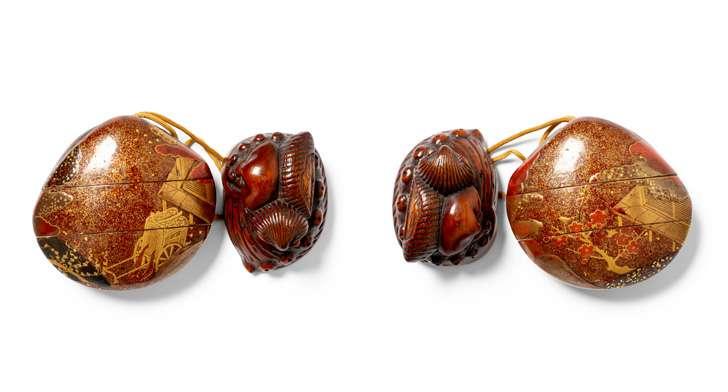
PLEASE NOTE THIS LOT IS TO BE OFFERED WITHOUT RESERVE.
£300-500
Provenance: an Irish private collection, Dublin.
MEIJI ERA, 19TH CENTURY
Decorated with two scholars in Chinese dress to one side and with a third to the reverse, the figures carved on a dense ground of asa-no-ha diaper, with a large lingzhi head to the top; together with a coral ojime and a red lacquer manju netsuke embellished with scrolling leafy tendrils, the inro 8.9cm.

PLEASE NOTE THIS LOT IS TO BE OFFERED WITHOUT RESERVE.
£400-600
Provenance: an Irish private collection, Dublin.
two views
Shaped as a seashell, decorated to one side with a veranda and a flowering prunus tree beside it, the reverse with a carriage before a similar pavilion, probably references to the Tale of Genji; together with a wood netsuke carved as a cluster of molluscs, including a large abalone and a broken mussel; the inro 6.5cm.
PLEASE NOTE THIS LOT IS TO BE OFFERED WITHOUT RESERVE.
£200-300
Provenance: an Irish private collection, Dublin.
138
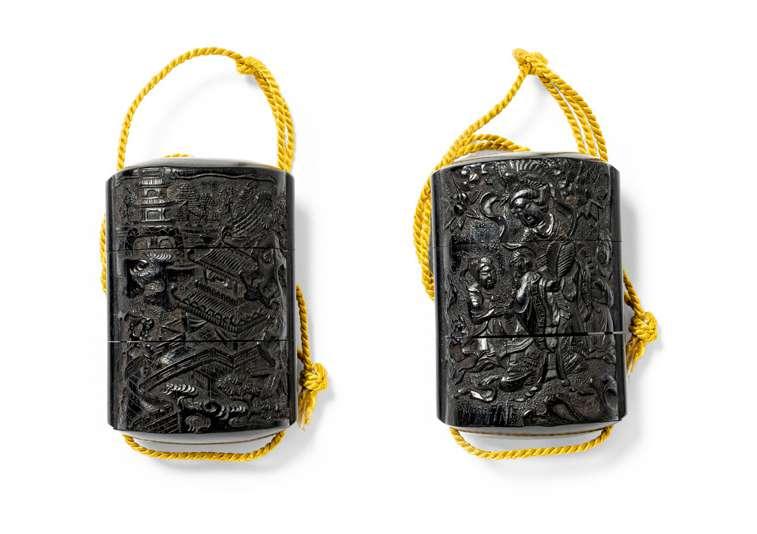
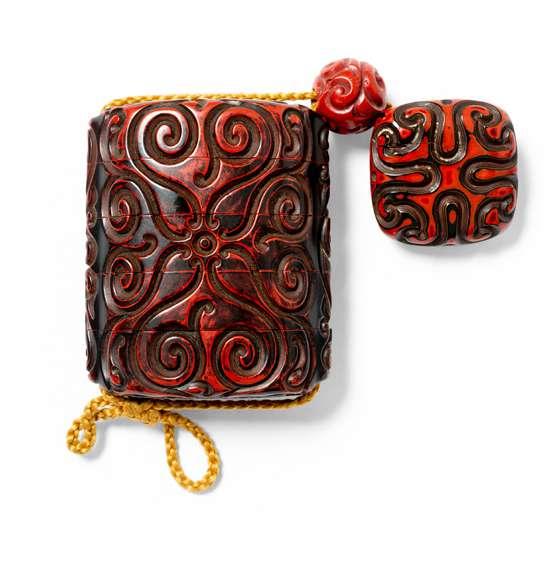

The body carved with formal designs on a dense diaper ground, with two scaly dragons stretching on the sides, the cord going through their bodies and emerging from their mouths; with a wood ojime and a netsuke in the shape of a drum, embellished with a large dragon writhing amongst scrolling clouds, its eyes inlaid in mother of pearl, the sides with mitsu-tomoe swirls rendered in metal and with a suspension ring, the inro 9.8cm.
PLEASE NOTE THIS LOT IS TO BE OFFERED WITHOUT RESERVE.
£400-600
Provenance: an Irish private collection, Dublin.
139
A JAPANESE TWO-CASE WOOD INRO EDO OR MEIJI, 18TH OR 19TH CENTURY
Possibly made of kurogaki (black persimmon), carved to one side with a lone figure walking on a bridge leading to a heavenly palace, the reverse with the Goddess Seiobo and two attendants standing beneath the fruiting branches of a peach tree, the base with a three-character signature, 7cm.
PLEASE NOTE THIS LOT IS TO BE OFFERED WITHOUT RESERVE.
£300-500
Provenance: an Irish private collection, Dublin.
The first a three-case inro in Somada style, decorated to one side with a leaping tiger under bamboo, the reverse with a pavilion by a waterfall in a mountainous landscape, with diaper designs to the sides; the other a four-case inro with a house to one side and a man riding an elephant to the reverse, with details in gold and silver lacquer and mother of pearl inlays, 7.9cm and 9cm respectively. (2)
PLEASE NOTE THIS LOT IS TO BE OFFERED WITHOUT RESERVE.
£400-600
Provenance: an Irish private collection, Dublin.
140

Of wide form, decorated to one side with a kubi furi tora (bobbing-head tiger toy) and a den-den daiko (double-ended drum), the reverse with a leafy branch of bamboo, the decoration rendered in gold takamakie and with raiden mother of pearl inlays on the black roiro ground, with remnants of a signature underneath, 7.7cm. (2)

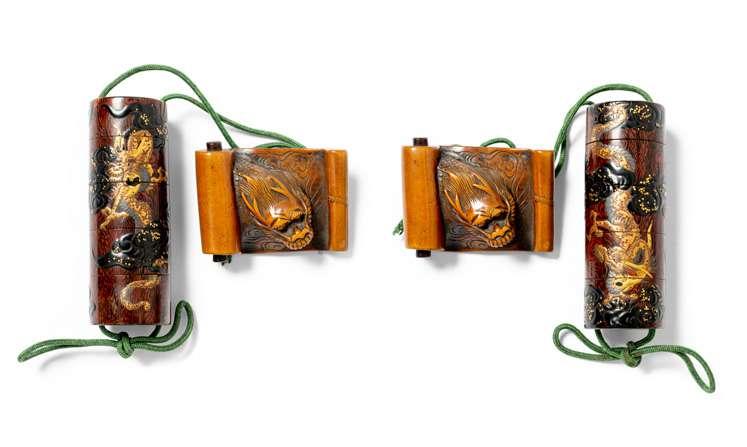
PLEASE NOTE THIS LOT IS TO BE OFFERED WITHOUT RESERVE.
£400-600
Provenance: an Irish private collection, Dublin.
views
Decorated with two scaly dragons writhing amongst scrolling clouds, the decoration rendered in gold, silver, black and red lacquer, the background painted en trompe l’oeil to simulate wood grain, with a wood netsuke carved as a dragon emerging from a makimono (handscroll painting), signed, the inro 7.5cm.
PLEASE NOTE THIS LOT IS TO BE OFFERED WITHOUT RESERVE.
£200-300
Provenance: an Irish private collection, Dublin.
MEIJI ERA, 19TH CENTURY
Decorated with Raijin to one side and Fujin to the reverse, the God of Lightening and the God of Thunder depicted walking by a pine tree, both carrying a large drum on its back, with details in gold and silver lacquer on the black roiro ground; together with a large wood netsuke carved as an oni slicing a cucumber on a drum, signed Gyokumin with kao, the inro 8.2cm.

PLEASE NOTE THIS LOT IS TO BE OFFERED WITHOUT RESERVE.
£600-800
Provenance: an Irish private collection, Dublin.

The wide rectangular body decorated with a traveller resting at the foot of Mount Fuji, the mountain towering above clouds rendered in gold and silver lacquer, the reverse with a forest of pines, a metal tube underneath for the cord and a ring above, 7.5cm.

£500-800
Provenance: an English private collection, Somerset, purchased in Japan.
143 two views
two views
145 A JAPANESE FOUR-CASE GOLD LACQUER INRO MEIJI ERA, 19TH CENTURY

Decorated to one side with a hawk perched on a leafy maple tree, the reverse with two chidori birds in flight, with details rendered in black and gold lacquer, together with a corozo nut netsuke carved as two chestnuts, the inro 8.7cm.

PLEASE NOTE THIS LOT IS TO BE OFFERED WITHOUT RESERVE.
£300-500
Provenance: an Irish private collection, Dublin.
146 A JAPANESE FIVE-CASE GOLD LACQUER INRO MEIJI ERA, 19TH CENTURY
The tall body decorated to one side with Jurojiin observing a minogame, the God of Longevity wearing ornate robes embellished with phoenix mon, the reverse with three cranes, the slender birds with details rendered in silver and red lacquer, the base with a four-character mark; together with a wood netsuke carved as Jurojin and a small boy, the inro 9.5cm.
PLEASE NOTE THIS LOT IS TO BE OFFERED WITHOUT RESERVE.
£400-600
Provenance: an Irish private collection, Dublin.
147
A JAPANESE FOUR-CASE GOLD LACQUER INRO MEIJI ERA, 19TH CENTURY

Decorated with three banners to one side, the reverse with a heavenly palace raised on a rainbow; with details rendered in silver, red and gold lacquer, and in aogai (mother of pearl) inlays, the base with a three-character signature; together with a wood netsuke carved as a pavilion underneath large pine trees, the inro 7cm.
PLEASE NOTE THIS LOT IS TO BE OFFERED WITHOUT RESERVE.
£400-600
Provenance: an Irish private collection, Dublin.

MEIJI ERA, 20TH CENTURY
Of rectangular form, containing an inner tray and two smaller boxes and covers; the lid, sides and tray decorated with a mountainous river landscape, the two smaller boxes with medallions of daisies and gardenia, all rendered in gold and silver hiramaki-e, takamaki-e and nashiji, together with a tomobako wood box, the lid with a paper label reading ‘Curios, H.Sato & Co, 58 Motokago-Machi, Nagasaki, Japan’, the box 3.7cm x 8.3cm x 5.9cm. (8)
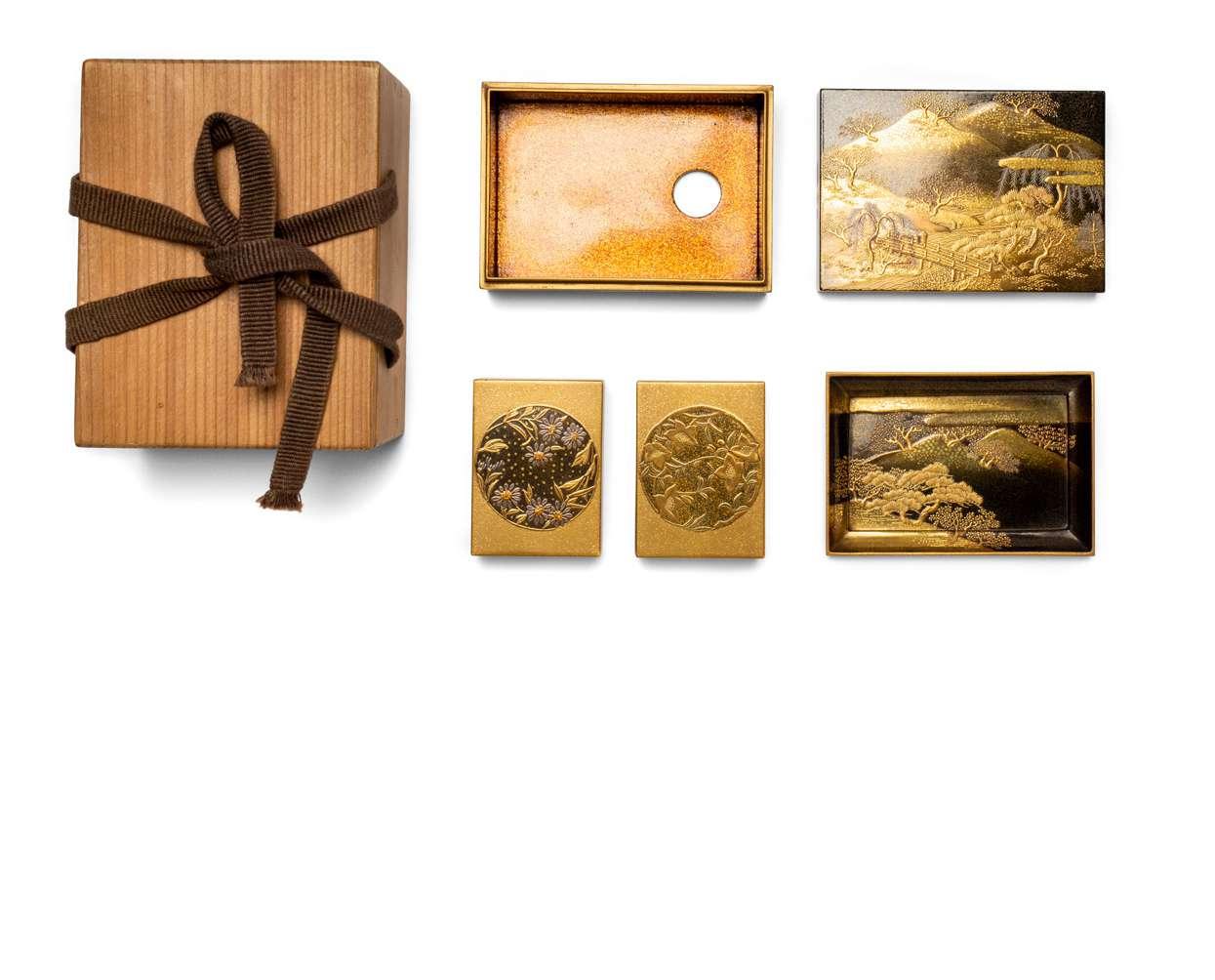
149
MEIJI ERA, 19TH/20TH CENTURY
The cover of the square box decorated with a pheasant, rendered in gold hiramakie with details in red on the black roiro lacquer ground, the inside with an ink stone and a circular suiteki; the rectangular box embellished with a large shishi seated underneath flowering branches of peony, with circular mon made of many pine trees above, in silver and gold lacquer hiramakie and takamakie, the sides with further flowers and mon, with green silk cords and tassels, 4.2cm x 19.6cm x 22.9cm and 8.5cm x 8.6cm x 25.8cm respectively. (8)

Provenance: an Irish private collection, Dublin.
NOTE THIS LOT IS TO BE OFFERED
RESERVE.
150

MEIJI ERA, 19TH CENTURY
Comprising: a rectangular gold lacquer kobako (small box and cover) decorated with cranes; a gold and red lacquer bowl and stand with Mitsuba-aoi mon, the three hollyhock leaves crest for the Tokugawa clan, and a small circular parcel-gilt metal box with pavilions in a landscape, 11.9cm max. (6)
£300-400

MEIJI ERA, 19TH CENTURY
Of tall rectangular shape with two drawers to the front, the top opening to reveal an inner tray with two ink stones, a brush, and a butterfly-shaped suiteki; the box decorated in red, gold and silver hiramakie, takamakie and nashiji, the top with a minogame underneath pines and two cranes flying above, the sides with flowering branches and auspicious symbols, the interior of the lid with a large sake jar, 16cm x 14cm x 24.3cm. (7)
£400-600
Provenance: from the collection of Dr E Lionel Pavlo (1906-89), and thence by descent. Dr Pavlo was an American civil engineer who designed and built many bridges and other structures around the world. His works include the Dwight D Eisenhower Tunnel in Colorado, the John F Kennedy Memorial Bridge in Nigeria, and the Commodore Barry Bridge across the Delaware River.

Of typical rectangular shape with rounded corners, decorated with hanawa (circular patterns of various flowers) in gold hiramakie and kirikane and the black roiro ground, the rims with silver mounts, together with an inscribed tomobako wood box, 12cm x 23.5cm x 32cm. (3)
£300-500
Provenance: an English private collection, Somerset, purchased in Japan.



MEIJI ERA, 19TH/20TH CENTURY
Of typical rectangular shape and raised on four scrolling feet, the top decorated with thirteen cranes, all rendered in gold takamakie, hiramakie and nashiji and with some details in red lacquer; the legs with a silver and gold diaper design enclosing four-petalled flower mon, the metal mounts decorated with scrolling tendrils, 13.8cm x 64.4cm x 36cm.
£300-500
Provenance: an Irish private collection, Dublin.
PLEASE NOTE THIS LOT IS TO BE OFFERED WITHOUT RESERVE.
MEIJI ERA, 19TH/20TH CENTURY
Of typical form with a rectangular top and splayed legs, embellished with gold lacquer decoration featuring the mitsuba-aoi mon (three hollyhock leaves crest) of the Tokugawa clan, the apron with further mon and green scrolling tendrils in relief, the metal mounts decorated with further crests and formal floral designs, 35cm x 60.7cm x 33.3cm.
£300-500

MEIJI ERA, 19TH CENTURY
The rectangular frame, the two trays, four-tier box and cover all decorated in takamakie and hiramakie with patterns of flower sprays and tendrils on paulownia mon, alternating with a gold shippo-tsunagi pattern against a roiro-nuri ground in a katamigawari design, together with a pair of quatrelobed lacquer vessels, the box 34.5cm x 36cm x 20cm. (a lot)
£200-300
Provenance: an Irish private collection, Dublin.
PLEASE NOTE THIS LOT IS TO BE OFFERED WITHOUT RESERVE.
Of rectangular shape, with a pair of hinged doors to the front and a single drawer below, the interior with seven further drawers of various sizes, the exterior richly decorated with large ships sailing on lakes, with cranes flying above and Mount Fuji towering in the distance, the panels framed by borders or geometric patterns; the reverse of the doors embellished with large depictions of birds of prey and the inner drawers decorated with many cranes in flight, 51cm x 54cm x 34.5cm.


Of rectangular shape, with a pair of hinged doors to the front and a drawer underneath, the inside with eight further drawers; the exterior richly decorated with depictions of carps amongst crashing waves and with border of peaches and seashells; each fish with its eyes inlaid in glass; the interior with smaller fish in meandering streams, with metal fittings and butterfly-shaped handles, 38cm x 39.5cm x 25.5cm.



MEIJI OR LATER, 19TH/20TH CENTURY
The front decorated with a large quantity of metal ornaments, some shaped as menuki and obidome, with many drawers of various sizes, two sliding doors and a larger rectangular door, 100cm x 82cm x 37cm.
£400-600
Of rectangular form and decorated in red lacquer Kamakura bori, with a pair of hinged doors to the front and a drawer below, the inside with six further drawers, raised on a four-legged stand; the surface decorated all-over with a dense pattern of prunus blossoms and inset with eight Satsuma porcelain plaques embellished with depictions of birds; the reverse of the doors carved with a kirin to one side and a dragon to the other, the metal mounts shaped as butterflies, 41cm x 32.5cm x 20.5cm overall. (2)
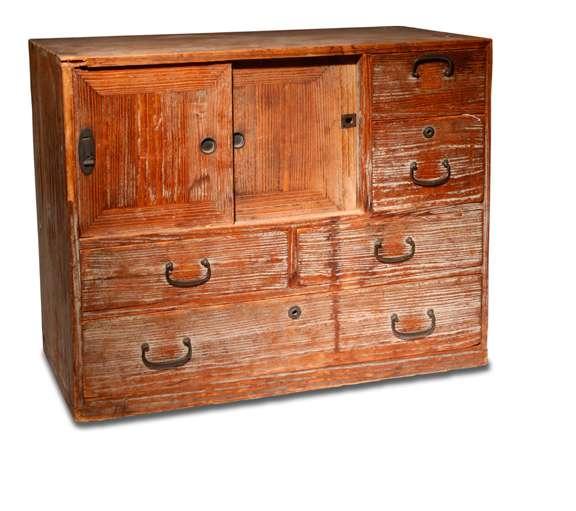

£400-600
MEIJI OR LATER, 20TH CENTURY
Both rectangular wood cabinets with pullout drawers and two sliding doors, fitted with metal bail handles, 57cm x 59cm x 29.5cm and 48cm x 60.5cm x 30cm respectively. (2)
£300-500


Of rectangular form with a flat top, the pictorial-style cabinet with two hinged doors to the front decorated with an extensive landscape, with temples and pavilions nestled in the hills; the right door painted with buildings reminiscent of Kiyomizudera and Kinkaku-ji in Kyoto; the sides with depictions of flowering peonies and bamboo; all rendered in gold and silver hiramaki-e on the black roiro lacquer ground; the front doors decorated to the inside with two pairs of cranes, and opening to reveal eight drawers of various sizes and two smaller doors with lockplates; the drawers embellished with further birds, flowers, and pavilions in landscapes; the back with a paper label for ‘Curtiss & Sons, Ltd. Depositories: Comdr A. E. Johnstone (?), no.112’; with a built-in stand and raised again on an associated European stand with chinoiserie decoration, 149cm high overall, the cabinet 88.5cm x 102cm x 53.5cm. (2)
£2,500-3,500
Cf. O Impey & C Jörg, Japanese Export Lacquer (1580-1850), pp.130-34 where comparable cabinets are illustrated and discussed.
The label at the back refers to Curtiss & Sons, a storehouse opened in the 1860s and first located in Portsmouth, UK, before expanding to the rest of the country. Portsmouth is home to the Royal Navy and the word ‘Comdr’ is a shortened version of Commander. Commander Johnstone may thus have been a member of the Royal Navy.
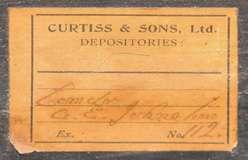
162

MEIJI ERA, 19TH/20TH CENTURY
Variously cast with birds, flowers, mythical creatures and calligraphy, one with the sixteen-petalled chrysanthemum kikumon and another with the paulownia go-san no kiri mon, each with an inscription, 40.8cm max. (6)

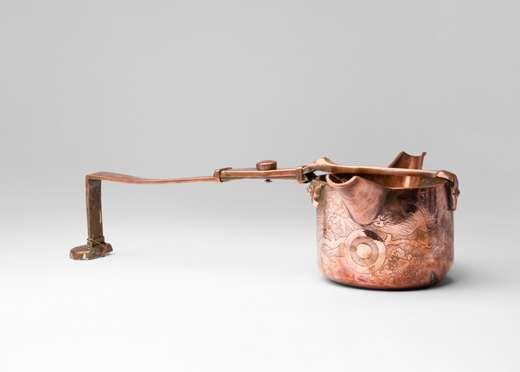
MEIJI OR LATER, 20TH CENTURY
The body with two side spouts and a long handle, the surface decorated with a dense pattern of cranes amongst pine trees, scrolling tendrils, and confronting cranes-shaped mon, a large flowerhead engraved underneath, 49cm.
These vessels are notably used at Kamigamo Shrine (Kyoto) to ritually pour sake during the Chrysanthemum Festival (Choyo no Sekku) on the ninth day of the ninth month.
MEIJI ERA, 19TH/20TH CENTURY
Cast with a baku in a luxuriant garden, the elephantine beast standing four-square and with its head turned to the side, a stylised character in a circular cartouche above and a line of calligraphy to the side, together with a fitted lacquer case and cover, 35cm. (3)
165
MEIJI ERA, 19TH/20TH CENTURY
Both decorated with a continuous river landscape in low relief, with figures enjoying daily pursuits in pavilions and others in boats, the silhouette of Mount Fuji towering above them, each with bands of cracked ice to the rims, both 12.5cm. (2)
PLEASE NOTE THIS LOT IS TO BE OFFERED WITHOUT RESERVE.

166

Carved in wood and painted in polychrome over gesso, the eyes rendered in gilt metal; the ferocious witch with pointy horns and baring her fangs, the reverse signed, with a paper label possibly reading ‘Au bon Marché’ after the Parisian department store, 26cm.
PLEASE NOTE THIS LOT IS TO BE OFFERED WITHOUT RESERVE. £80-120
Provenance: an Irish private collection, Dublin.

MEIJI ERA, 19TH/20TH CENTURY
The handle carved with bands of geometrics designs, the hair gathered at the base and affixed to the handle with woven cord, in an inscribed tomobako wood box, 62cm overall. (2)
PLEASE NOTE THIS LOT IS TO BE OFFERED WITHOUT RESERVE. £150-250
The Shinto God of Learning typically depicted seated, holding a tablet before him, wearing polychrome robes decorated with chrysanthemum and paulownia mon, his headdress with a metal ribbon at the top, raised on a rectangular plinth imitating rockwork, the base of the figure with lines of calligraphy, 46cm.

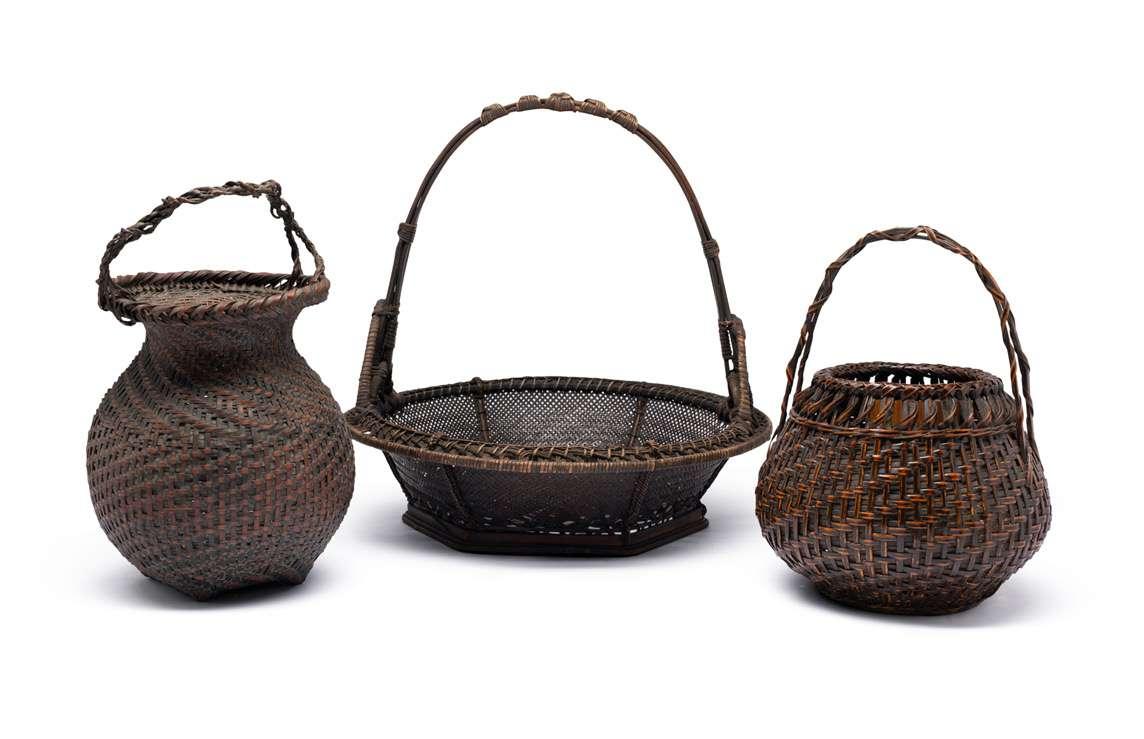
The largest vessel with a tall loop handle, raised on a hexagonal foot and with a wide circular rim, signed underneath; the other two of ovoid shape, one with a flared rim and a cylindrical lacquer container inside, 42.5cm max. (4)
£300-500
Provenance: an English private collection, Somerset, purchased in Japan.

MEIJI ERA, 19TH OR 20TH CENTURY
Of typical form and made of keyaki (zelkova wood), with pegs to the side for suspension, the surface a lustrous chocolate brown, 29.5cm.
£1,200-1,500
Provenance: formerly a private Japanese collection.
These large functional wood carvings were used for suspending kettles from a ceiling beam over the sunken hearth, irori. They were seen as a symbol of the family’s stability and prosperity.
Of rectangular form, the surface typically covered with red, black and ochre striations, the abstract patterns evoking fantastical landscapes; together with a tomobako wood box, 5.5cm x 41.7cm x 33.2cm. (2) £2,000-3,000
Provenance: formerly a private Japanese collection.


Realistically carved, with its head slightly turned to the left and with its long ears folded over its back, the underside with two lines of calligraphy which read Taisho juninen shunjitsu, Ryusen to (Carved by Ryusen, on a spring day in Taisho 12th), 22.5cm.

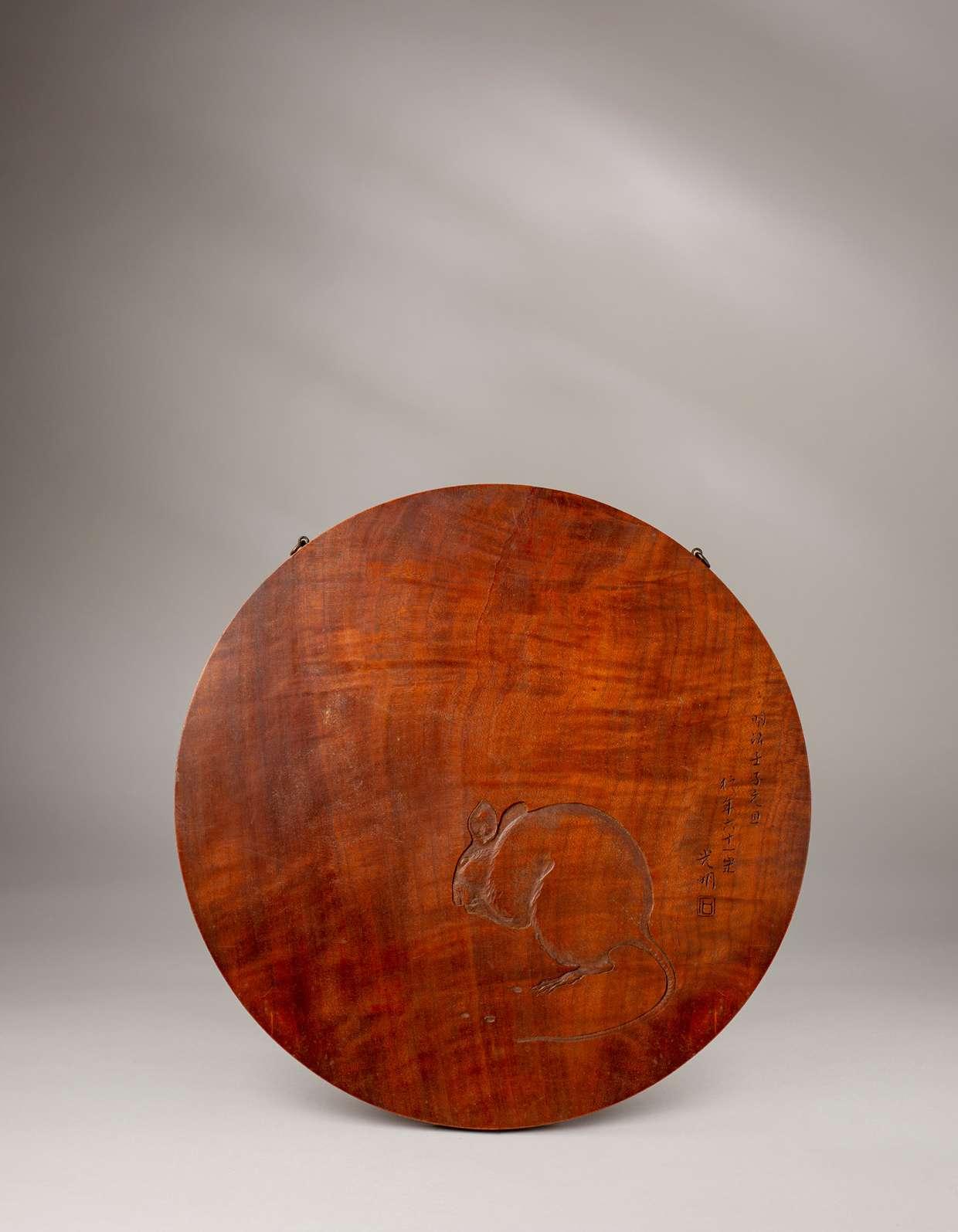
The disc decorated with a plump rat gnawing on small seeds, the charming rodent depicted in low relief, the surface of the wood grain featuring vertical striations in various shades of chocolate-brown; inscribed with three lines of calligraphy reading Meiji Mizunoe-ne Gantan, Gyonen Rokuju-ichi-sai (New Year’s Day, in the year 1912 of the Meiji Period), signed Komei underneath and with a seal reading Ishi (for Ishikawa); with two metal hooks to the top for suspension; together with a fitted tomobako wood box, 31.7cm. (2)
£8,000-10,000
Ishikawa Komei was recognised as one of the greatest artists of the Meiji Era. Born in Asakusa, Tokyo, he grew up in a family of miya-bori (sculptors of wood carvings for Shinto shrines). In 1891, he was appointed as Teishitsu Gigeiin (Imperial Craftsman), and then became Professor at the Tokyo School of Fine Art. His work was exhibited in Japan and overseas, and he received many awards for his works, both in his own country and internationally. His sculptures were admired at the Philadelphia Centennial Exposition (1876), the Paris Expositions Universelles (1889 and 1900), Chicago’s World’s Columbian Exposition (1893), and the Japan-British Exhibition (1910). Komei died on 30th July 1913, a year after he carved this plaque, when he was at the apotheosis of his career.
A massive
screen),
and colour
red-crowned Manchurian cranes,


outcrops
a
Sewn from smaller sections of silk brocade, richly decorated with the Shimazu mon of the Satsuma clan, waves, scrolling clouds, wisteria, peony and scrolling tendrils, all embroidered in gold and polychrome threads on the cream ground, 182cm x 110cm.

Provenance: formerly the collection of Ricardo Rivera Schreiber (1892-1969), Peruvian Ambassador to the United Kingdom (1954-63), to Italy (1944-46), to Spain (1943-1944) and Minister Plenipotentiary to China and Japan (1936-41), and thence by descent.


Richly decorated with patterns of phoenix mon and flowerheads on a dense geometric ground, with bands of shippo tsunagi (cash) and key fret borders, all rendered in gold thread on the deep navy-blue ground, 69cm x 493cm.
Provenance: from the collection of Admiral Robert Coote CB (1820-1898), and thence by descent. Admiral Coote enlisted in the Royal Navy in 1833. He was made Commander of HMS Volcano from 1845, HMS Victory from 1860, HMS Gibraltar from 1864 and HMS Arethusa from 1867. In 1874 he was appointed Commander-in-Chief of Queenstown and served as Commander-in-Chief of the China Station between 1878-1881.

MEIJI ERA, 19TH/20TH CENTURY
Of rectangular shape, depicting the Yomeimon Gate at the Tokugawa Tosho-gu shrine in Nikko, the panel intricately embroidered with various shades of silver, cream and gold-coloured threads, mounted on board with a silk backing, 73cm x 69.5cm.
£400-600
A COLLECTION OF TWELVE REFERENCE BOOKS ON SAGEMONO
Including G Lazarnick, The Signature Book of Netsuke, Inro and Ojime Artists in Photographs and Netsuke & Inro Artists, and How to Read Their Signatures, complete set of two volumes; V G Atchley, H Goodall and S Izzard, The Raymond and Frances Bushell Collection of Netsuke: A Legacy at the Los Angeles County Museum of Art; R Bushell, Netsuke: Familiar and Unfamiliar; H L Joly and T Kumasaku, Japanese Art & Handicraft; and others. (12)
PLEASE NOTE THIS LOT IS TO BE OFFERED WITHOUT RESERVE.
£500-1,000
181 LITERATURE
A LIBRARY OF REFERENCE BOOKS


Relating to Japanese art, and in particular to netsuke, inro and other sagemono. (222)
PLEASE NOTE THIS LOT IS TO BE OFFERED WITHOUT RESERVE.
£500-1,000
Provenance: an Irish private collection, Dublin.





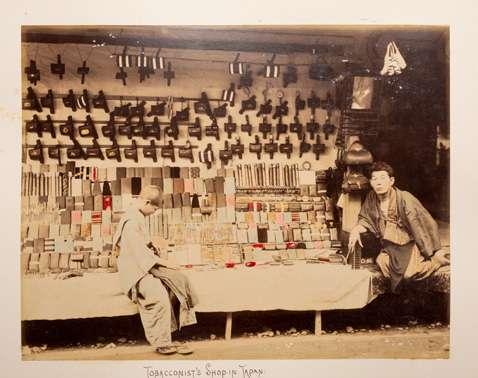
Comprising: two albums with black leather covers, one titled ‘The Straits, China & Japan’ and the other ‘Japan, Sandwich Islands and America’ and both inscribed ‘L. Lees, 1894’; the first with sixty-one views of Penang, Singapore, Canton (Guangzhou), Hong Kong, Japan and other locations, and portraits of figures enjoying daily pursuits; the second with further pictures of Japan, the Sandwich Islands (Hawaiian Islands), San Francisco, Chicago, and the Niagara Falls, each picture with a hand-written inscription underneath and some hand-tinted; together with a third album containing photographs of various places in Scotland. (3) £400-600
Provenance: an English private collection, acquired by L M Lees on his world tour in 1894, and thence by descent.

lot illustrated
183
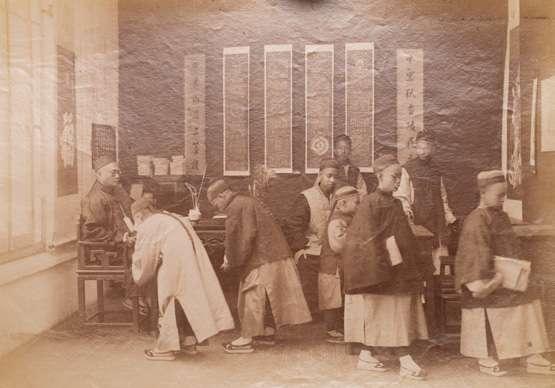
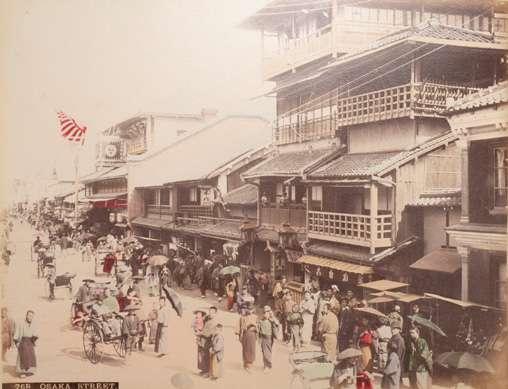

Comprising: four Japanese albums, two containing Yokohama shashin (early Japanese photographs), with staged studio images and views of Japan, some albumen silver hand-tinted pictures; and two containing Japanese postcards and other paper ephemera; one album of Chinese views; together with a collection of stereoviews of Japan, and a stereoscope. (a lot)

PLEASE NOTE THIS LOT IS TO BE OFFERED WITHOUT RESERVE. £500-1,000
Provenance: an Irish private collection, Dublin.


An album of Yokohama shashin (early Japanese photographs), albumen silver prints, some hand-tinted; opening on three portraits of the original owner dressed in Japanese robes; the album containing seventy-three further pictures including views of Mount Fuji, Yokohama, Nikko, Enoshima, the Daibutsu in Kamakura, and other locations, and portraits of beauties, craftsmen at work, and other figures enjoying daily pursuits, some portraits staged in studio settings, some pictures with titles; together with the remnants of the original box with textile cover featuring the name of T. Tamamura, the album 7.8cm x 39.5cm x 32cm. (2)
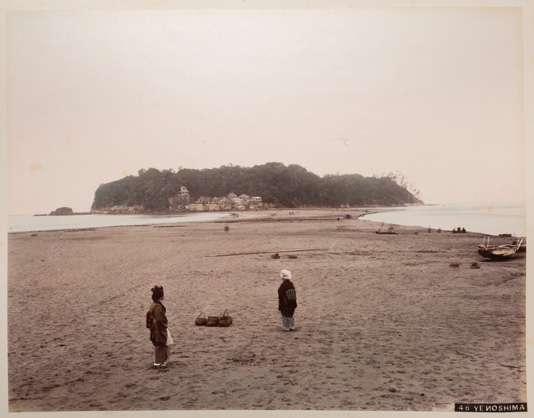



£200-300
Provenance: an English private collection, acquired by L M Lees on his world tour in 1894, and thence by descent.
19TH CENTURY, C.1887


An album of fifty early photographs of Japan, albumen silver prints, some hand-tinted; opening on a frontispiece titled ‘Japan, A. Farsari & Co., Yokohama’, before a collage of various images; the album containing forty-nine further pictures including views of Mount Fuji, Nagasaki, Kyoto, Enoshima, and other locations, and portraits of beauties, craftsmen at work, and other figures enjoying daily pursuits, some portraits staged in studio settings, some pictures with titles, the album 6cm x 29.4cm x 36cm.
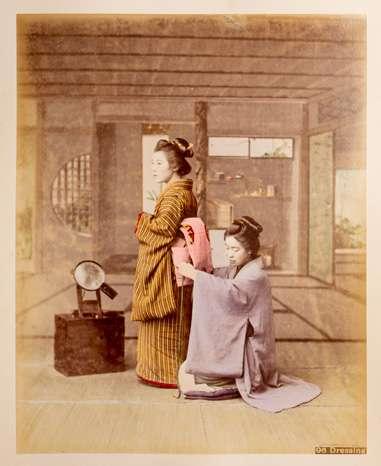

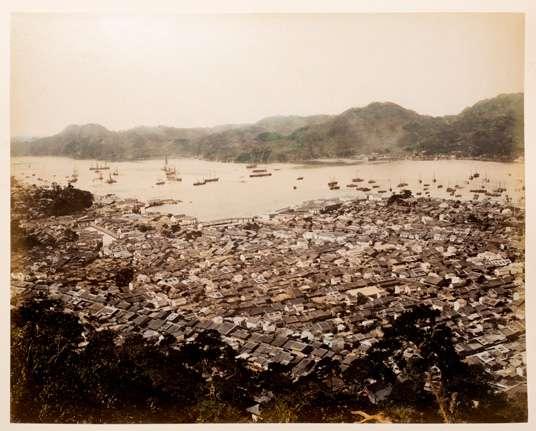


EDO PERIOD, 19TH CENTURY
Two Japanese surimono woodblock prints, the first depicting a kanjo (court lady) seated, with a tsurikoro (hanging incense burner) beside her, with slight embossing in her dress, four lines of calligraphy to her left and signed Hokkei; the other depicting Kintaro refereeing a match between a chicken and a tengu, with a poem above, from the series Yama ato Yama (Mountain after Mountain), signed Hokkei ga and with red seal Hokkei, both prints embellished with metallic pigments, both shikishiban, 19.7cm x 17.8cm and 20.7cm x 17.9cm respectively. (2)


£500-800
Provenance: from the collection of French sculptor Gaston de Luppé (1872-1939), and thence by descent.
187
UTAGAWA KUNINAO (1795-1854) YASHIMA GAKUTEI (1786-1868)

EDO PERIOD, 19TH CENTURY
Two Japanese surimono woodblock prints, the first depicting a Noh mask of Okane in a wrapping cloth, with a poem above and a red seal mark for Kuninao lower left corner; the other depicting a woman dressed as the Goddess Benten playing the biwa, a poem behind her, from the series Mitate Shichifukujin (Allusions to the Seven Lucky Gods), signed Gakutei; both prints embellished with metallic pigments and slight embossing, both shikishiban, 21.6cm x 18.9cm and 20.7cm x 19.2cm respectively. (2)
£400-600
Provenance: from the collection of French sculptor Gaston de Luppé (1872-1939), and thence by descent.
188
TOTOYA HOKKEI (1780-1850)
EDO PERIOD, 19TH CENTURY
A Japanese surimono woodblock print, after a design by Katsushika Hokusai (1760-1849), depicting a snake ensnaring two melons in a box, from the series Washo Kurabe (Comparison of Japanese Books), with slight embossing and a poem above, signed and with a red seal mark, shikishiban, 21.7cm x 18cm. £300-500
Provenance: from the collection of French sculptor Gaston de Luppé (1872-1939), and thence by descent.

189
KATSUSHIKA HOKUSAI (1760-1849) EDO PERIOD, C.1806
Three Japanese woodblock prints from the series Tokaido Gojusan-Tsugi (Fifty-three Stations of the Tokaido), including no.46, entitled Shono; no.14, Hara; and the third of no.20, Mariko; each inscribed with the name of the station and the title of the series, published by Iseya Rihei, all chuban tate-e, each approx. 22.9cm x 17.3cm. (3) £150-250


190



A collection of Japanese woodblock prints depicting landscapes, the first entitled Kameido ume yashiki no zu (Plum Garden at Kamido), from the series Toto Meisho (Famous Places in the Eastern Capital), signed Hiroshige ga, oban yoko-e, 25.2cm x 36.2cm; the second entitled Wada, from the series Kisokaido rokujukyu tsugi no uchi (The Sixty-nine Stations of the Kisokaido Road), signed Hiroshige ga, oban yoko-e, 35.8cm x 23.8cm; together with twenty other woodblock prints of landscapes. (22) £200-300
Provenance: from the collection of French sculptor Gaston de Luppé (1872-1939), and thence by descent.

191


EDO PERIOD, C.1840
A complete set of eight Japanese woodblock
- Autumn Moon at Ishiyama Temple (Ishiyama shugetsu)
- Returning Sails at Yabase (Yabase kihan)

- Descending Geese at Katada (Katada rakugan)
- Evening Bell at Mii-dera Temple (Mii bansho)
- Sunset Glow at Seta (Seta sekisho)
- Twilight Snow at Hira (Hira bosetsu)

- Clearing Weather at Awazu (Awazu seiran) - Night Rain at Karasaki (Karasaki yau) each signed Hiroshige ga, published by Arisei, all chuban





EDO PERIOD, 19TH CENTURY
A Japanese woodblock print entitled Namazu, tasogare zu (Namazu:Twilight), from the series Tokaido gojusan tsugi no uchi (Fifty-three Stations of the Tokkaido Road), signed Hiroshige ga and sealed, oban yoko-e, 24.3cm x 37cm.
UTAGAWA HIROSHIGE II (1826-69)
EDO PERIOD, 19TH CENTURY
A collection of five Japanese woodblock prints of landscapes, one entitled Kozuke, Harunasan setchu (Mount Haruna Under Snow), and another Noto Taki-no-Ura (The Bay of Waterfalls in Noto), both from the series Rokujûyoshû meisho zue (Famous Views of the Sitxty-odd Provinces), and Okitsu Okitsugawa Satta no mori (Okitsu River and Satta Wood), from Gojusan-tsugi meisho zue (Fifty-Three Stations of the Tokaido - vertical), signed Hiroshige hitsu, oban tate-e, all approx. 37.5cm x 25cm; together with a later reprint of Shirasuka from the series Fifty-Three Stations of the Tokaido, oban yoko-e, 24.1cm x 36.5cm; and another woodblock print entitled Mariko, from the series Tokaido meisho fukei (Scenes of Famous Places along the Tokaido Road), signed Hiroshige ga (for Hiroshige II), 35.2cm x 24.4cm. (5)

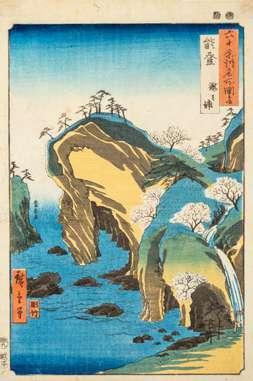

PLEASE NOTE THIS LOT IS TO BE OFFERED WITHOUT RESERVE.
£200-300

EDO PERIOD, C.1853-58
A Japanese woodblock print entitled Bingo Abumon Kannondo (The Temple of Kannon at Abumon in the Bingo Province), from the series Rokujuyoshu Meisho Zue (Famous Views of the Sixty-odd Provinces), inscribed with the name of the series and the title of the print, signed Hiroshige hitsu, with censor’s seal Aratame, date seal usha juni (year of the ox [1853], 12th month), the block carver’s seal of Yokogawa Takejiro, and the oval publisher’s seal of Koshimuraya Heisuke, oban tate-e, 35.9cm x 24.4cm. £200-300
Provenance: from the private collection of a British artist, formed in the 1990s.



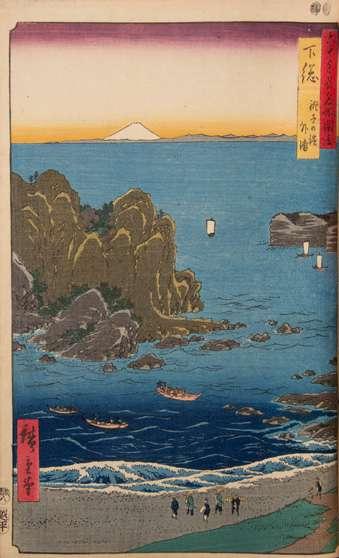

EDO PERIOD, C.1853-58
A rare Japanese album of woodblock prints, containing sixty-nine views from the series Rokujuyoshu Meisho Zue (Famous Views of the Sixty-odd Provinces), each signed Hiroshige ga, published by Koshimuraya Heisuke; the opening and last pages made of a vertical oban diptych, also by Hiroshige, depicting many cranes flying over crashing waves, signed on the lower sheet Hiroshige hitsu and sealed Ichiryusai, published by Izumiya Ichibei (Kansendo), 1858; the second page a woodblock print with calligraphy before a red sun, a bonsai tree on a table underneath it, the text mentioning the publisher Izumiya Ichibei (Kansendo), each sheet oban tate-e, 36.3cm x 24.8cm.
£30,000-50,000
Provenance: an English private collection, purchased in Ferndown in the 1980s, by repute.
Hiroshige was considered a master of ukiyo-e (‘pictures of the floating world’), and specialised in landscapes, at a time when travelling around Japan was becoming more popular. Many designs in this series are based on illustrations from old Japanese guidebooks, and on early volumes of the famous Hokusai Manga (‘Hokusai Sketches’). This was the first time that a vertical format was used for a major landscape series. Hiroshige probably chose it as the guidebooks illustrations also had vertical compositions, and this format allowed for better binding than horizontal prints. In this series, Hiroshige experimented with modern compositions, using Western perspective to create a sense of distance from an elevated viewpoint. His distinctive bokashi technique creates subtle colour graduation and shading which also add depth to the compositions.
The pictures depict a world on the brink of change, however: a few months later, the Black Ships that contributed to the opening of Japan arrived, and provincial boundaries that had existed since the 9th century would be rewritten by the Meiji administration a few years later.
Hiroshige’s prints inspired many Western artists in the late 19th century, in particular French Impressionists and other painters following the trend for Japonisme. James McNeill Whistler owned prints from this very series, and he included some in his painting entitled ‘Caprice in Purple and Gold: The Golden Screen’, where a European beauty is depicted studying them.
Bound albums containing series of prints such as this one are very rare as the pictures were often separated to be sold individually. According to the owner, the album was carefully protected from daylight and rarely opened in the last forty years, which probably explains the prints’ fantastic condition and bright colours.







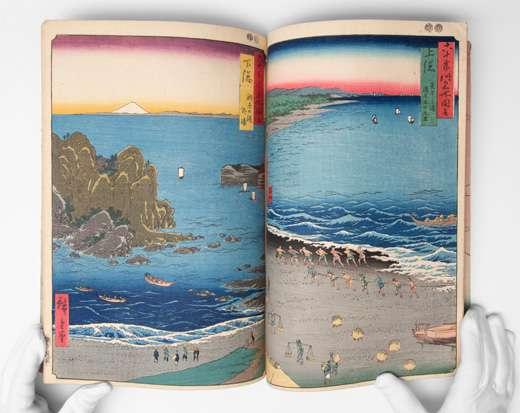







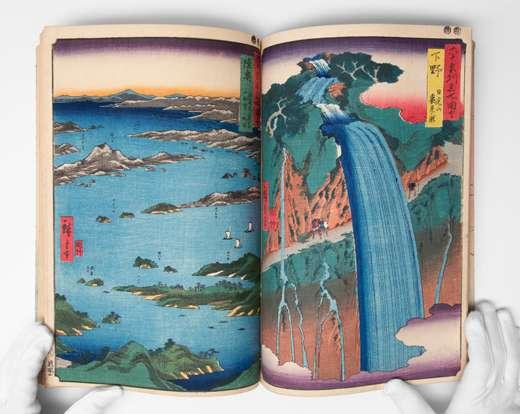
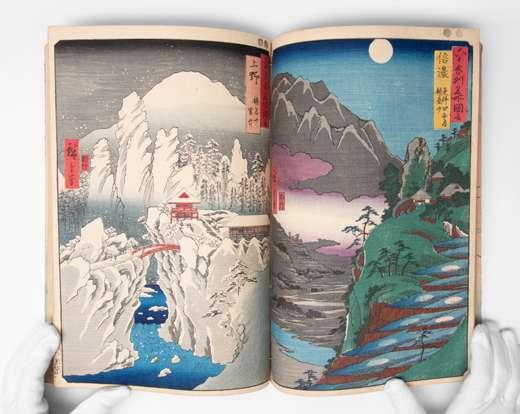






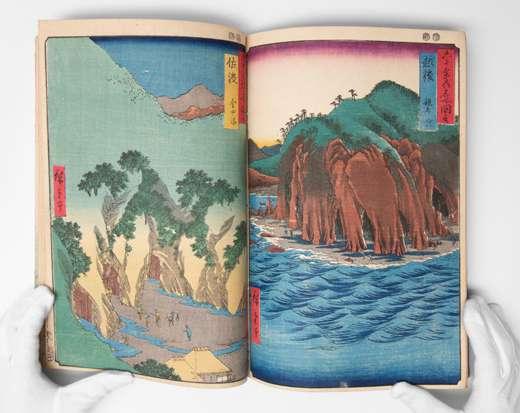












SHOWA ERA, C.1970
A folio of forty-six prints, including a set of the Thirty-six
a limited facsimile edition
box, 26.2cm x 38cm. (48)
THIS LOT
Provenance: an English
by Kyodo Tsushinsha,
BE OFFERED
SHOWA OR LATER, 20TH CENTURY
After the Japanese woodblock print entitled ‘Visit to the gardener’,
an edition of 150, framed and glazed, 19.5cm x 32cm.
THIS LOT IS
BE OFFERED WITHOUT RESERVE.
SHOWA ERA, C.1960

A Japanese woodblock print after the original entitled ‘Courtesan smoking’, from the series ‘Ten Examples of the Physiognomies of Women’, with a mica ground and light embossing, framed and glazed, oban yoko-e, 37.5cm x 24.5cm.

PLEASE NOTE THIS LOT IS TO BE OFFERED WITHOUT RESERVE.
Provenance: an Irish private collection, Dublin.
EDO PERIOD, C.1857
A Japanese woodblock print entitled ‘The Twilight Beauty (Chapter 4)’ from the series ‘Playing cards of Murasaki Shikibu’s Genji’, signed Baishoro Kunisada ga, framed and glazed, oban yoko-e, 33cm x 23cm.
PLEASE NOTE THIS LOT IS TO BE OFFERED WITHOUT RESERVE.
200


A large collection of Japanese woodblock prints, the first depicting a poem by Yozei-in entitled ‘Oniwakamaru’, from the series Ogura nazorae hyakunin issu (Imitations of One Hundred Poems by One Hundred Poets), signed Ichiryusai Kuniyoshi ga, oban tate-e, 35.5cm x 24.5cm; together with a quantity of woodblock prints by artists including Shibata Zeshin (1807-1891), Toyohara Kunichika (1835-1900), and others. (a lot)
Provenance: from the collection of French sculptor Gaston de Luppé (1872-1939), and thence by descent.
EDO PERIOD, C.1820

A Japanese woodblock print depicting a beauty in an interior playing the shamisen, an ornate black lacquer lectern before her and the sky visible through an open door behind her, signed and sealed, in a double-sided frame with glazing on both sides, 33.5cm x 24cm.
PLEASE NOTE THIS LOT IS TO BE OFFERED WITHOUT RESERVE.



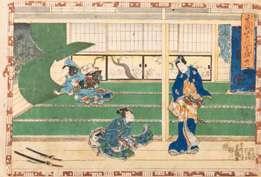



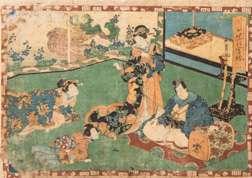
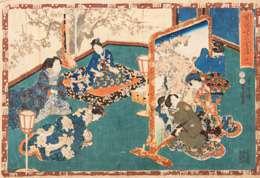






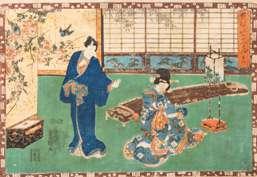








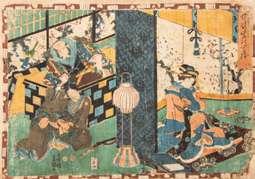










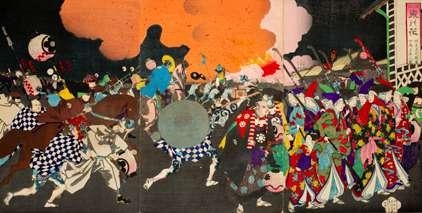

MEIJI OR TAISHO, 19TH OR 20TH CENTURY
Two Japanese woodblock prints entitled Toru and Michimori from the series ‘One Hundred Noh Dramas’, each inscribed, signed and sealed, both framed and glazed, 35.5cm x 24.5cm.
PLEASE NOTE THIS LOT IS TO BE OFFERED WITHOUT RESERVE.
£150-250
Provenance: an Irish private collection, Dublin.
206
part lot illustrated
205
EDO AND MEIJI, 18TH AND 19TH CENTURY
Eleven Japanese woodblock prints depicting beauties, the first entitled Hoki Noshi (Dried Abalone Strips from Hoki Province), from the series Sankai Medetai Zue (Auspicious Desires on Land and Sea), signed Ichiyusai Kuniyoshi ga and Tori-jo ga, 36.5cm x 25.5cm; the second entitled Nue taiji (Parody of the killing of the Nue), from the series E-kyodai (Picture Siblings), signed Utamaro hitsu, vertical oban, 37.3cm x 26.3cm; together with nine other woodblock prints including works by Kikugawa Eizan (1787-1867), Utagawa Kunisada (1786-1865), and others. (11)
£200-300
Provenance: from the collection of French sculptor Gaston de Luppé (1872-1939), and thence by descent.
206
UTAGAWA KUNISADA II (1823-80)
EDO PERIOD, 19TH CENTURY
Two Japanese woodblock print triptychs, the first depicting actors in the noh play Kanjincho, the other with figures on a balcony looking out towards beauties on a boat, signed and sealed, both framed and glazed, 75cm x 34.5cm and 72.5cm x 36.5cm respectively. (2)



PLEASE NOTE THIS LOT IS TO BE OFFERED WITHOUT RESERVE.
£150-250
Provenance: an English private collection, acquired in Japan in the 1960s-70s.
207
UTAGAWA KUNISADA / TOYOKUNI III (1786-1864)
UTAGAWA KUNIYOSHI (1797-1861), AND OTHERS
EDO AND MEIJI, 19TH CENTURY
A collection of Japanese woodblock prints mounted as a makimono (handscroll picture), including three portraits of famous sumo wrestlers by Toyokuni III; two portraits from Kuniyoshi’s series ‘Comparison of the Spirit of Able Men’, and two from ‘Mirror of Women of Wisdom and Courage’; and other various prints by different artists, the scroll 36cm x 980cm.
£200-300
illustrated
KITAGAWA UTAMARO (1753-1806) OHARA KOSON (1877-1945), AND OTHERS



EDO AND LATER, 18TH CENTURY AND LATER
A collection of Japanese woodblock prints, including a portrait of Kisegawa of the Matsubaya, from the series Gonin Bijin aikyo kurabe (Comparing the Charms of Five Beauties), signed Shomei Utamaro hitsu,; another of an eagle perched on a tree stump with a seal for Koson; a triptych by Utagawa Yoshitora (act.1830-87), and prints by other artists, including Kono Bairei (1844-95). (16)

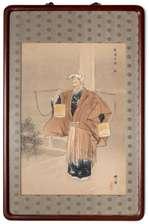

THIS LOT IS TO BE
WITHOUT RESERVE.
209 KONO BAIREI (1844-1895)
MEIJI ERA, 19TH CENTURY
A Japanese album of woodblock prints entitled Bairei hyakucho gafu (Bairei’s Drawing book of One Hundred Birds), volume 3, 24.9cm x 16.5cm.
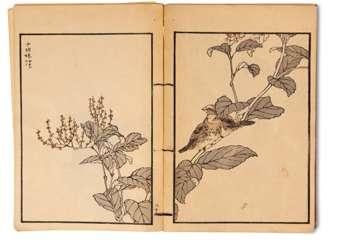
NOTE THIS LOT IS TO BE OFFERED WITHOUT RESERVE.
£100-200
Provenance: an English private collection, and thence by descent.

MEIJI ERA, 19TH/20TH CENTURY
Two Japanese woodblock prints, the first entitled ‘Crow on a Branch of Willow’, the black bird perched before a graduated orange ground; the other ‘Two Water-hens amongst Reeds’, both signed and with a red seal mark for Seiko, both shikishiban, approx. 24cm x 25cm. (2)



£250-350
Provenance: from the private collection of a British artist, formed in the 1990s.
MEIJI ERA, C.1900
A Japanese woodblock print entitled ‘Crow and Cherry Blossoms’, with a red seal mark and published by Daikokuya, framed and glazed, the reverse with a hand-written label dated July 1924, otanzaku ban, 34.5cm x 19cm.

£300-500
Provenance: from the private collection of a British artist, formed in the 1990s.
211
TAISHO ERA, C.1925
A Japanese woodblock print entitled ‘Two Crows and Half-Moon’, the two birds perched on a leafless tree and with the celestial body behind them, signed and with two red seals, otanzaku ban, 38cm x 17cm.
PLEASE NOTE THIS LOT IS TO BE OFFERED WITHOUT RESERVE.
£100-200
Provenance: from the private collection of a British artist, formed in the 1990s.
Okuhara Seiko was a bunjin (literati female artist) living in Japan in the late 1800s. She was born into a family of samurai, and later became a successful artist, founding an art school and exhibiting around the country. Her works are now to be found in important collections around the world, including in the Tokyo National Museum, the British Museum, the Philadelphia Museum of Art, the Honolulu Museum of Art, and many others.
MEIJI ERA, C.1910
A Japanese woodblock print entitled ‘Scoop Owl in Flight’, with a branch of cherry blossoms and a full moon above; signed and sealed Shoson; published by Kokkeido (Akiyama Buemon), naga oban, approx. 50cm x 21.5cm.

£1,000-1,500
Provenance: from the private collection of a British artist, formed in the 1990s.
A Japanese woodblock print entitled ‘Long-eared Owl on a Bare Tree Branch’, the plump bird perched on a leafless branch and with the crescent moon below, signed Koson and with an artist’s seal, otanzaku ban, 34.5cm x 18.8cm.


£200-300
Provenance: from the private collection of a British artist, formed in the 1990s.
KONO BAIREI (1844-95)
MEIJI ERA, 19TH/20TH CENTURY
A Japanese watercolour painting of a large owl perched on a flowering prunus tree, with the full moon behind and a small sparrow flying below, signed and with a red seal mark for Seiho, 32.4cm x 17cm; and a Japanese woodblock print depicting two small owls, a stream meandering below and with a crescent moon behind, a panel of calligraphy lower left, signed and sealed, 36.9cm x 24.2cm. (2)

£150-250
Provenance: from the private collection of a British artist, formed in the 1990s.

MEIJI ERA, 19TH OR 20TH CENTURY
A Japanese woodblock print entitled ‘Northern Goshawk with Rainbow’, the bird perched on a branch of pine and with the silhouettes of other trees in the distance, a rainbow above, signed Koson and with a red artist’s seal, otanzaku ban, 34.5cm x 18.8cm.

£200-300
Provenance: from the private collection of a British artist, formed in the 1990s.

MEIJI AND TAISHO, 20TH CENTURY
Two Japanese woodblock prints, one entitled ‘Bull-headed Shrike and Spider’, the bird perched on a dark branch with dead leaves, one falling, signed Koson and with a red artist’s mark; the other print depicting a kingfisher on a lotus leaf, a square seal mark for Sozan lower right, mounted on board; otanzaku ban, 34.8cm x 18.9cm and 36.4cm x 16.2cm respectively. (2)

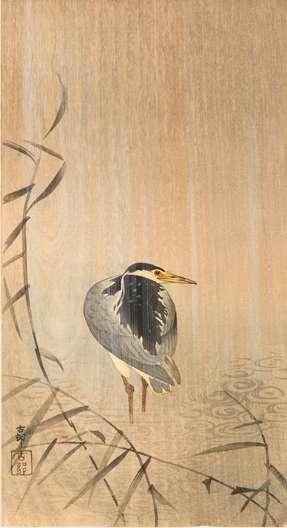
£200-300
Provenance: from the private collection of a British artist, formed in the 1990s.
Two Japanese woodblock prints, one entitled ‘Night heron in the Rain’, the other with two small sparrows in flight, both prints with white gofun paint, signed and with a red seal mark, both otanzaku ban, approx. 36.5cm x 19cm. (2)
£500-800
Provenance: from the private collection of a British artist, formed in the 1990s.

MEIJI ERA, C.1910
A Japanese woodblock print entitled ‘Eagle with spread Wings on a Tree Trunk’, the colourful bird of prey caught in a storm, the background depicted en grisaille, signed and with a red seal mark, otanzaku ban, 34.5cm x 19cm.



PLEASE NOTE THIS LOT IS TO BE OFFERED WITHOUT RESERVE.
£150-250
Provenance: from the private collection of a British artist, formed in the 1990s.
Four Japanese woodblock prints of birds, two with the same composition depicting an eagle perched on a branch in a rainstorm, another of a heron on a pine branch before a full moon, and the fourth with a flock of geese in flight above crashing waves, three signed and with a red seal mark, all approx. 14cm x 9cm. (4)

PLEASE NOTE THIS LOT IS TO BE OFFERED WITHOUT RESERVE.
£100-150
Provenance: from the private collection of a British artist, formed in the 1990s.
MEIJI ERA, c.1910
Two Japanese woodblock prints, one entitled ‘Seagulls over the Waves’, the three birds depicted flying above crashing waves; the other ‘White Fronted Goose and Full Moon’, both prints signed and with a red seal mark, both oban tate-e, both otanzaku ban, approx. 34.7cm x 18.9cm. (2)


£300-500
Provenance: from the private collection of a British artist, formed in the 1990s.
222 OHARA KOSON (1877-1945)

SHOWA ERA, C.1927
A Japanese woodblock print entitled ‘Cockatoo and Pomegranate’, signed and sealed Shoson, with the publisher’s rectangular seal in the left margin reading Hanken shoyu Watanabe Shozaburo (Copyright ownership Watanabe Shozaburo), oban tate-e, 36.3cm x 24cm.

£300-500
Provenance: from the private collection of a British artist, formed in the 1990s.
223
GAKUSUI IDE (1899-1978)
SHOWA ERA, C.1950
A Japanese woodblock print entitled ‘Snowy heron in the rain’, signed and with a red seal mark, inscribed in the right margin, framed and glazed, the reverse with a label for the Japanese Gallery, Kensington, oban tate-e, 37.5cm x 24cm.

£200-300
Provenance: from the private collection of a British artist, formed in the 1990s.
222
224 OHARA KOSON (1877-1945)
MEIJI OR TAISHO, 20TH CENTURY
A Japanese woodblock print entitled ‘Dragonfly and Lotus’, the insect depicted on a large lotus leaf and with yellow buds beside it, signed and with a red seal mark, otanzaku ban, 34.3cm x 18.4cm.

PLEASE NOTE THIS LOT IS TO BE OFFERED WITHOUT RESERVE.
£150-250
Provenance: from the private collection of a British artist, formed in the 1990s.
225 OHARA KOSON (1877-1945)
TAISHO ERA, 20TH CENTURY
Two Japanese woodblock prints depicting birds, the first of sandpipers by reeds on a shoreline, a crescent moon above, the other of two pigeons on a branch of ginkgo tree; both published by Akiyama Buemon (Kokkeido) c.1912, both naga oban, approx. 50cm x 21.8cm. (2)

£200-300
Provenance: from the private collection of a British artist, formed in the 1990s.
MEIJI OR TAISHO, 20TH CENTURY
A Japanese woodblock print entitled ‘Chicken, Hen and Chick’, the three birds standing together and looking down at a small insect, signed Shoson and with a red artist’s seal mark, 37.5cm x 16.5cm.

PLEASE NOTE THIS LOT IS TO BE OFFERED WITHOUT RESERVE.
Provenance: from the private collection of a British artist, formed in the 1990s.
MEIJI OR TAISHO, 20TH CENTURY
A Japanese woodblock print entitled ‘Magpie on a branch’, the elegant bird with a long tail and perched on a leafy branch, its head turned to the left; signed Koson, with the artist’s seal mark and with the Akiyama Buemon (Kokkeido) publisher’s seal, otanzaku ban, 35cm x 18.5cm.

Provenance: from the private collection of a British artist, formed in the 1990s.
228 OHARA KOSON (1877-1945)
MEIJI OR TAISHO, 20TH CENTURY
Two Japanese woodblock prints, one entitled ‘Roaring Tiger over the Crescent Moon’, signed Koson and with a red seal mark; the other entitled ‘Wild Boar’, the wild swine lying in the snow before leafless trees, the sky behind a graduated orange colour, signed; both o-tanzaku, both approx. 34cm x 19cm. (2)


Provenance: from the private collection of a British artist, formed in the 1990s.
MEIJI OR TAISHO, 20TH CENTURY
Two Japanese woodblock prints depicting monkeys, the first with one suspended from a tree holding its young, the smaller primate reaching toward the reflection of the moon in a pool of water below; the other with two monkeys and a butterfly, the first signed Koson, the second Shoson, and with a red seal mark, both otanzaku ban, 34.5cm x 18.5cm and 37.5cm x 16.5cm respectively. (2)

Provenance: from the private collection of a British artist, formed in the 1990s.


231 AFTER LEONARD TSUGUHARU FOUJITA (1886-1968)
MODERN, 20TH CENTURY
After Fouijta’s design entitled ‘Normandie’, the image later used for an SNCF poster (Société Nationale des Chemins de Fer) to promote travelling around France by train, framed and glazed, 79cm x 55cm.
PLEASE NOTE THIS LOT IS TO BE OFFERED WITHOUT RESERVE.
£80-120
230 KAORU KAWANO (1916-65)
SHOWA ERA, 20TH CENTURY
A Japanese woodblock print entitled ‘Dusk Landscape’, with the silhouette of a pagoda rising above treetops, a red seal mark for the artist in the lower right corner, 28.2cm x 42cm.

PLEASE NOTE THIS LOT IS TO BE OFFERED WITHOUT RESERVE.
£80-120
Provenance: an Irish private collection, Dublin.
232 KASAMATSU SHIRO (1898-1991)
IMAO KEINEN (1845-1924)
OROVIDA CAMILLE PISSARRO (1893-1968), AND OTHERS
19TH AND 20TH CENTURY
A Japanese woodblock print entitled ‘Pine Tree in the Rain’, signed Shiro Kasamatsu and with a red seal mark; two prints by Imao Keinen depicting birds, one entitled ‘Camellia, Hill Myna’ and the other ‘Farfugium japonicum, Meadow bunting’; another an etching by British artist Orovida Pissarro, signed, inscribed ‘Strategy’, dated 1929 and numbered 27/100 in pencil in the lower margin, framed and glazed; together with ten other various prints. (14)

PLEASE NOTE THIS LOT IS TO BE OFFERED WITHOUT RESERVE.
£200-300
part lot illustrated
233 AFTER KAWASE HASUI (1883-1957)
MODERN, 20TH CENTURY
A Japanese woodblock print after the original entitled ‘Lake Matsubara on a Morning, Shinshu’, signed Hasui and with a seal reading Kawase, a red seal mark in the lower right margin for Watanabe, oban yoko-e, 39.5cm x 27cm.


PLEASE NOTE THIS LOT IS TO BE OFFERED WITHOUT RESERVE.
£100-200
234
YOSHIIKU UTAGAWA (1833-1904)
AFTER KATSUKAWA SHUNSHO (1726-92), AND OTHERS
MEIJI AND LATER, 19TH AND 20TH CENTURY
Three Japanese woodblock prints, the first from the ‘Brave Samurai Series’ by Yoshiiku, the second after a design by Shunsho depicting Actor Ichimura Kichigoro in an unidentified role, and the third a small view of Mount Fuji, together with two Chinese paintings of flowers on rice paper, and a scroll painting with goldfish. (6)

PLEASE NOTE THIS LOT IS TO BE OFFERED WITHOUT RESERVE.
£100-200
Provenance: an English private collection, and thence by descent.
235 KAWASE HASUI (1883-1957) SHOWA ERA, 1930s/40s

Three Japanese woodblock prints, the first entitled

Nara); the third
seal,
with the seal
£500-800
Provenance: from the private collection of a
Utagahama
Lake, Utagahama); the second titled along the bottom margin Nara Kasuga taisha (Kasuga Shrine
all three signed Hasui
artist,
236 KAWASE HASUI (1883-1957)
SHOWA ERA, 1930s-40s
Three Japanese woodblock prints, the first a chuban yoko-e entitled ‘Dawn over Mount Fuji and Lake Shoji’, 18cm x 21cm; the second a small tate-e entitled ‘A walk in the Snow’, 14.5cm x 9.3cm; the third an oban tate-e depicting ‘Dusk at Tagonoura Beach’, 36.5cm x 24.5cm; all three signed Hasui with Kawase seal and with the seal for the publisher Watanabe Shozaburo (1885-1962). (3)

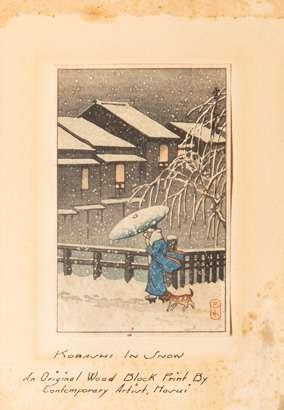
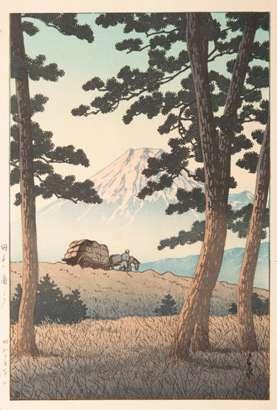
£300-500
Provenance: from the private collection of a British artist, formed in the 1990s.
237
TOSHI YOSHIDA (1911-95)
SHIRO KASAMATSU (1898-1991)
TAISHO OR SHOWA, 20TH CENTURY
Two Japanese woodblock prints, one entitled ‘Ishiyama Temple’, with worshippers standing underneath large paper lanterns, signed in Japanese with a red seal mark within the image and in English in the margin, with Jikoku seal in the upper left margin, titled and dated 1946, 37.5cm x 24.3cm; the other entitled ‘Great Lantern of the Kannon Temple, Asakusa’, signed Shiro and with publisher’s mark for Watanabe Shozaburo, 36.2cm x 24cm. (2)


PLEASE NOTE THIS LOT IS TO BE OFFERED WITHOUT RESERVE.
£200-300
Provenance: from the private collection of a British artist, formed in the 1990s.
238 YOSHIDA HIROSHI (1876-1950)
SHOWA ERA, C.1935
A Japanese woodblock print entitled Romon (Chion-in Temple Gate), from the series Sakura Hachidai (Eight Scenes of Cherry Blossoms), signed Hiroshi Yoshida in pencil underneath, Yoshida in sumi ink and with the red seal for Hiroshi bottom right, oban yoko-e, 26cm x 39cm.
£200-300

239 TERUHIDE KATO (1936-2015)
HEISEI ERA, 21ST CENTURY
Two Japanese woodblock prints, the first entitled ‘Kinkaku-ji in Autumn scene’, the other ‘Purple Wind’, both signed in pencil, 44.7cm x 21.8cm and 43.7cm x 22.5cm. (2)

240
SHIN’ICHI NAKAZAWA (1956-)
HEISEI ERA, 21ST CENTURY
A Japanese print entitled ‘Reunion XVIII’, with a fan-shaped panel enclosing abstract designs in various metallic shades, with lines of calligraphy-like symbols, numbered 20/25, titled and signed in pencil underneath and with a red seal mark, 57.2cm x 19.4cm.

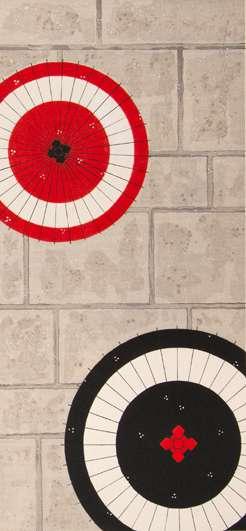

241
SHIN’ICHI NAKAZAWA (1956-)
HEISEI ERA, 21ST CENTURY
Two Japanese prints entitled ‘Ratio XXXI’ and ‘Ratio XXVIII’, each with a tall rectangular panel enclosing abstract designs in silver and gold, one numbered 3/35, the other 2/35, each titled and signed in pencil underneath, each with a stamped mark, both 51.5cm x 11.5cm. (2)


242
TERUHIDE KATO (1936-2015)
HEISEI ERA, 21ST CENTURY
Two Japanese woodblock prints, the first entitled ‘Meeting Parasols’, the other ‘Umbrella Through Window’, both signed in pencil, 44.7cm x 21.8cm and 45cm x 22cm. (2)

HEISEI ERA, 21ST CENTURY
Three Japanese prints, entitled ‘Ratio XXXIII’, ‘Reunion XX’, and ‘Gravity IV’, each with a tall rectangular panel enclosing abstract designs in silver, gold, and blue, one numbered 1/35, the other 2/35, the third 17/35, each titled and signed in pencil underneath, each with a stamped mark, two measuring 59.5cm x 14.5cm, the third 51.5cm x 11.5cm. (3)
TERUHIDE KATO (1936-2015)
HEISEI ERA, 21ST CENTURY
Two Japanese woodblock prints, the first entitled ‘Purple Wind’, the other ‘Kyoto Alley’, both signed in pencil, 44.7cm x 21.8cm and 45.5cm x 25cm. (2)
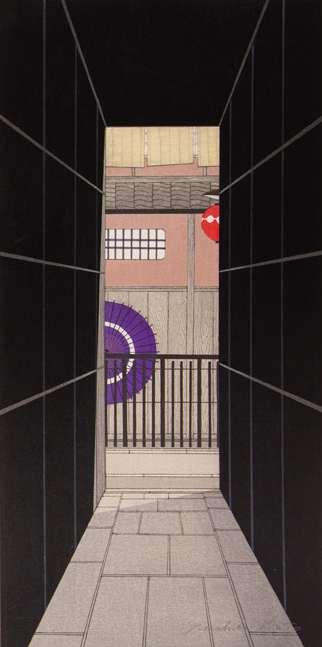

245

HEISEI ERA, 21ST CENTURY
Two Japanese prints entitled ‘Ratio XXIX’ and ‘Ratio XXVIII’, each with a tall rectangular panel enclosing abstract designs in silver and gold, both numbered 3/35, each titled and signed in pencil underneath with a stamped mark, both 51.5cm x 11.5cm. (2)




HEISEI ERA, 21ST CENTURY
A Japanese print entitled ‘Gravity II’, with a tall rectangular panel enclosing abstract designs in silver, white and blue, with lines of calligraphy-like symbols, numbered 6/25, titled and signed in pencil underneath, a stamped mark, 59.5cm x 24.5cm.

247
SHOWA ERA, DATED 1952
A Japanese woodblock print entitled ‘Love’, with a vertical abstract design reminiscent of two bodies; the lower margin with the title, date and signature inscribed in pencil, framed and glazed, 37.5cm x 24cm.



Provenance: an English private collection, acquired in Japan in the 1960s-70s.
Two Japanese woodblock prints of horses, the largest with the animal depicted frontally, dated 1968 and numbered 83/85, signed in pencil; the other with the animal in profile, dated 1969 and numbered 15/85, also signed in pencil; both framed and glazed, 25.9cm x 13cm and 13cm x 10.5cm respectively.
£200-300
Provenance: an English private collection, acquired in Japan in the 1960s-70s.

HEISEI ERA, 21ST CENTURY
Two Japanese prints entitled ‘Ratio XXX’ and ‘Ratio XXXI’, each with a tall rectangular panel enclosing abstract designs in silver and gold, both numbered 2/35, each titled and signed in pencil underneath, each with a stamped mark, both 51.5cm x 11.5cm.

MURAKAMI (1962-)

ERA,
A Japanese offset lithograph entitled
Universe’, in colour on smooth wove paper, signed and numbered 63/100 in black pen, published by Kaikai Kiki Ltd., Tokyo, in the original Kaikai Kiki
box, 68cm x 68cm.
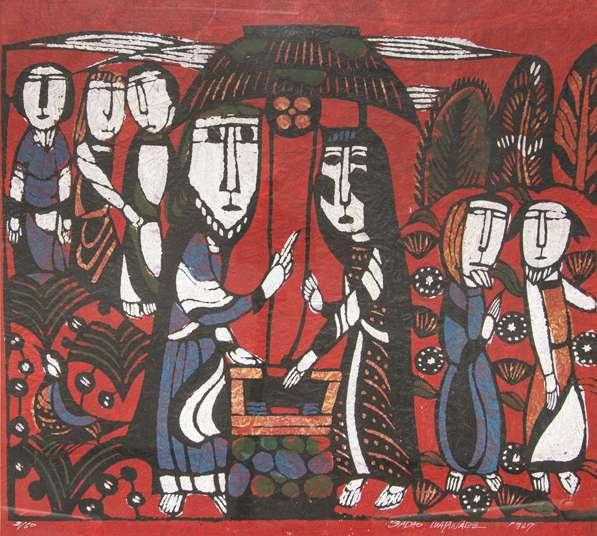
A Japanese print, brushed pigments and stencil on monigami kozo (crumpled paper), depicting Christ preaching to women standing around a well, signed, dated and numbered 3/50 in white ink, framed and glazed, 48.5cm x 54cm.
an English private collection, acquired in Japan in the 1960s-70s.
Sadao Watanabe was a Japanese artist renowned for his prints featuring biblical scenes in traditional mingei folk art style. His prints are often made on crumpled wet paper mixed with mineral pigments suspended in soy milk (katazome). His work is now internationally recognized, and it can be found in collections around the world including The Museum of Modern Art in New York, the Art Institute of Chicago, and the National Museum of Art in Tokyo.

252 UTAGAWA KUNISADA I / TOYOKUNI III (1786-1864) UTAGAWA YOSHIKAZU (ACT.1850-70)
EDO PERIOD, 19TH CENTURY
Two Japanese woodblock print triptychs, the first depicting a Kabuki play with the ghost Kasane holding her child and frightening a beauty in the central panel, with two male characters depicted in the other sheets, each signed and sealed, each approx. 36.5cm x 23.5cm; the other entitled ‘Minamoto Yorimitsu on Mount Oe’, signed Ichijusai Yoshikazu ga on each sheet, each approx. 37cm x 25.5cm. (6) £100-200


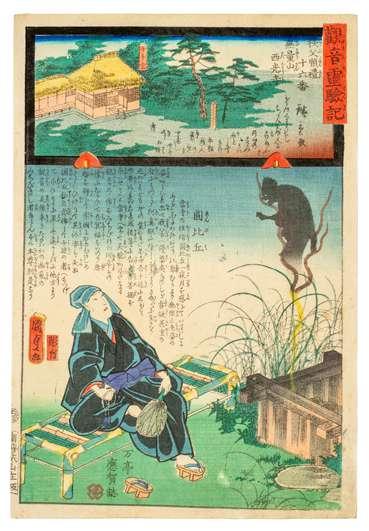
253 UTAGAWA KUNIYOSHI (1798-1861)
KUNISADA II UTAGAWA (1823-1880) AND HIROSHIGE II UTAGAWA (1826-69)
EDO PERIOD, 19TH CENTURY
Two Japanese woodblock prints with spectres, the first entitled ‘Anchu’ from the series ‘Sixty-Nine Stations of the Kisokaido’ (1852), signed; the other entitled ‘Saikoji Temple’ from the series ‘The Miracles of Kannon Chichibu, route no.16’, 35.5cm x 24.5cm and 34.5cm x 22.5cm respectively. (2) £100-200
254 UEMURA SHOEN (1875-1949)
TAISHO ERA, 1922
A Japanese woodblock print entitled Yuki Onna (The Snow Woman) from the play Yuki Onna Gomai Hagoita, adapted from the book Dai Chikamatsu Zenshu (Woodblock Prints depicting Chikamatsu Monyaemon’s collected Works) in ink, white paint and gold on paper, signed top right Shôen with artist’s seal, oban tate-e, 38.5cm x 26.5cm.

Provenance: from the private collection of a British artist, formed in the 1990s.

A Japanese yurei-zu kakemono (hanging scroll painting), ink and colour on paper, depicting a procession of skeletons, possibly a parody of an oiran dochu (courtesan processions advertising pleasure houses), one with the hair ornaments of a high-ranking courtesan, another holding a colourful canopy, 52cm x 58.3cm.

£200-300
Two Japanese yurei-zu kakemono (hanging scroll paintings), both in ink on paper, the first painted with a company of skeletal friends enjoying lively socialising, a long poem above about the ephemerality of the human condition, one skeleton holding a painting inscribed Yume wa maboroshi awa no kei (Dreams are an illusion, a scene of bubbles), signed Uyu Sanjin and with two artist’s seals, 108cm x 26cm; the other with a skeleton presenting a scroll painting of a prunus tree to his bony acolytes, a poem above about sharing the true meaning of life with old friends, turning into ashes and returning to earth after life; signed Kaiseki and with two seals, the one reading as ‘flourish like the pine and cypress’, 123.5cm x 29.3cm; one with a tomobako wood box. (3)


A Japanese makimono (handscroll painting), painted in ink and colour on paper with scenes from the story ‘The Land of the Giants’, 948cm x 28.5cm, in a tomobako wood box. (2)

part lot illustrated
Two Japanese bakemono makimono (handscroll paintings of monsters), both ink and colour on paper and depicting many supernatural creatures; the first after Hiroharu Itaya’s Hyakki yagyo (Night Procession of the Hundred Demons), with similar-looking monsters and other possessed household objects frolicking, together with a tomobako wood box; the other scroll painted with further demonic creatures, 679cm x 26.5cm max. (3)
£500-1,000
A set of four bakemono makimono (handscroll paintings of monsters) forming an illustrated index of supernatural creatures; on thin, lightweight paper, each painted with a large number of ghosts, monsters, and other mythical creatures, each otherwordly creature identified by an inscription handwritten above it, 633cm x 27cm. (4) £500-1,000




See Sotheby’s London, Fine Japanese Works of Art, 29th September 2022, lot 3, for comparable paintings of supernatural creatures.
part lot illustrated

Two Japanese yurei-zu kakemono (hanging scroll paintings of ghosts), both ink and colour on paper, each a gruesome depiction of a female ghost, the first a nearly-headless figure with a sickle dug deep in her neck, a red seal mark lower right, 54.5cm x 23cm; the other grimacing whilst holding a severed head, with lines of calligraphy, signed and with two red seal marks, 98cm x 29.5cm, one with a tomobako wood box.
Two Japanese yurei-zu kakemono (hanging scroll paintings of ghosts), both ink and colour on paper, both depicting female spectres, the first floating amongst bushes in a rainstorm, signed Cho Seiko / Saiko and with two red seal marks reading Cho in Seiko and Kyochu rogyo, 131.5cm x 49cm; the other with a ghoul rising from hitodama (flaming wisps), signed Ryoka / Reika and with a red artist’s seal, 125cm x 19.5cm, one with a tomobako wood box.


A Japanese yurei-zu kakemono (hanging scroll painting of a ghost), ink and colour on paper, depicting the haunting figure of a mother cradling her child, the ghost with deformed features, biting her lower lip whilst looking at the viewer, her head with red blotches, signed and with a red seal mark, 47.5cm x 26cm, with a tomobako wood box. (2)





Painted in ink and colour on paper with portraits of the thirty Shinto kami representing the thirty days of the month, the gods depicted sitting on dais and wearing rich garments, each portrait with an inscription identifying the day and deity represented; the upper part of the painting with drawn curtains, an illegible inscription following the drapery to the right; the sun and moon amongst scrolling clouds below, and an inscribed panel reading Namu Myoho Renge kyo (Glory to the Dharma of the Lotus Sutra); the lower section with a pair of shishi and two divine archers, the lion dogs and guards on either sides of a flight of stairs, the lower left corner with a four-character signature reading Hoin (Seal of the Law - the highest rank awarded to Buddhist artists) and possibly Nichihisa with kao, the painting with a silk mount on board and framed, the painting 98.5cm x 47cm.
£2,000-3,000
Provenance: from the collection of an aristocratic Spanish family, purchased from Shreve, Crump & Low of Boston in the late 1970s or early 1980s.
See Chishaku-in Temple, Kyoto, for a comparable scroll painting of the Sanjubanjin dated 1580. Also, see Daihoji Temple, Takaoka City, for another similar depiction of the thirty gods by Hasegawa Tohaku (1539-1610) dated 1566.



The thirty kami are said to protect the peace and happiness of the nation during the thirty days of the lunar month. Legends says that the abbot Ennin (794-864) invited the gods to Mount Hiei to protect a copy of the Lotus Sutra that he had enshrined in the mountain. The earliest records of the Sanjubanjin however date from the late 11th century and they became particularly popular in the Muromachi period (1333-1573). Paintings like this one were used during Buddhist rituals of the Tendai Lotus School and the Nichiren sect.

A Japanese kakemono (hanging scroll painting), painted in gold on a dark navy-blue ground, depicting the Goddess Kannon standing on scrolling clouds, with the Kannon sutra above her, signed and with a red seal mark, 124cm x 41cm, with a tomobako wood box. (2)

£200-300
Three Japanese paintings depicting scenes from the Genji Monogatari (Tale of Genji), one illustrating an episode from ‘Butterflies’, Chapter 24; in ink, colour and gold on paper, all framed and glazed, all approx. 22cm x 18cm. (3)
£400-600
265
Three Japanese kakemono (hanging scroll paintings), one in ink and colour on paper with the depiction of a Kabuki actor dressed in red costume, with calligraphy above; the two other paintings in ink on paper, the first depicting Fukurokuju and a minogame, signed Tangeisai hitsu and with a red seal mark for Moriyoshi; and the other a scene depicting many craftsmen building a giant kotobuki (longevity) character, with a red seal mark, 40.5cm x 56cm max, one with box. (4)
£200-300
Tsurusawa Tangei was a Kano School painter working in the Edo period. He was the son of Tanzan (1655-1729) and a pupil of Kano Tan’yu. He became official painter to the Imperial Court in the Genroku era (1688-1703), and he was given the honorary title of Hogen
266
KEISETSU (PROBABLY 19TH/20TH CENTURY), AND OTHERS
MEIJI AND LATER, 19TH AND 20TH CENTURY
Four Japanese kakemono (hanging scroll paintings), all in ink and colour on paper, one with men enjoying daily pursuits, signed and with two seals, inscribed ‘Painted and inscribed in amusement by Taiha’, and with a poem inspired by a famous Chinese verse by Zhang Ji, mentioning spending money growing on trees, and merry-makers raising their ‘halberds’ (an erotic reference); another illustrating humorous manners and customs, signed and sealed Keisetsu; the two others from the same hand depicting gatherings of many Chinese scholars engaged in conversation, two in tomobako wood boxes,142cm x 24.5cm max. (6)

£200-300
267
Three Japanese kakemono (hanging scroll paintings), two depicting Daruma, one in ink on paper with lines of calligraphy above, signed Daruma O (Old Man Daruma) with kao and dedicated to Edward S. Stevenson (written in katakana); the other in ink and colour on silk with the Father of Zen Buddhism and his pet shishi, anonymous; the third kakemono depicting Kanzan and Jittoku, with calligraphy above reading ‘Painted by Chikunen, in the year of Mizunotou’; one with a tomobako box, 158cm x 86cm max. (4) £200-300



Four Japanese humorous kakemono (hanging scroll paintings), all in ink and colour on paper, one with many depictions of Daruma dolls, some with limbs and dancing, signed Shuho, 113cm x 40.5cm; another an otsu-e style painting of an oni no nenbutsu, the small demon collecting donations, signed Rosetsu with a seal reading Gyo, 54cm x 27cm; the third a kakemono painted with a kappa frightening a farmer, 140cm x 35.3cm; and the fourth with a bearded figure holding a hossu whisk, possibly Jurojin, with an attendant behind him, 140cm x 35.3cm, all signed and with red seal marks, two with tomobako wood boxes. (6) £200-400


ANONYMOUS
MEIJI ERA, 19TH CENTURY
A Japanese kakemono (scroll painting), ink and colour on silk, depicting one bird flying towards colourful chrysanthemum, another bird standing by a stream and looking up; framed and glazed, 91cm x 37.5cm.

PLEASE NOTE THIS LOT IS TO BE OFFERED WITHOUT RESERVE.
271
MEIJI AND LATER, 19TH AND 20TH CENTURY
Two Japanese kakemono (hanging scroll paintings), one in watercolour on silk with a chicken under fruiting branches, unsigned; the other in ink on paper and depicting many horses, signed Nariyuki and with a red seal mark; together with a makimono (handscroll painting) painted with a rabbit dancing with a fan; one with a tomobako box, 1094cm x 38cm. (4)


£200-300
UNIDENTIFIED ARTISTS
MEIJI ERA, 19TH CENTURY
Two Japanese makimono (handscroll paintings), one painted and the other printed; each with a large number of pictures by different hands, variously including depictions of animals, flowers, figures, gods and mythical creatures, 1771cm x 27cm and 2282cm x 28.5cm respectively. (2)



A Japanese kakemono (hanging scroll painting), ink and colour on paper, depicting a monkey falling off a branch of wisteria, probably frightened by the wasp flying above, signed tiki toshi nanaju issai hitsu, Reimyo Sosen (Painted by Sosen at the age of 71, at the Reimyosan Studio) and sealed Sosen, 66cm x 39cm.

£200-300
273
MEIJI AND LATER, 19TH AND 20TH CENTURY
Five Japanese makimono (handscroll pictures), three printed copies of the Choju jinbutsu giga (Scrolls of Frolicking Animals) by Toba Sojo, with humorous depictions of rabbits, frogs, monkeys and mythical beasts; together with two other scroll paintings, two with tomobako wood boxes, 1144cm x 29.5cm max. (7)
A Japanese kakemono (hanging scroll painting), ink and colour on paper, depicting two mandarin ducks by a stream, with further birds perched amongst flowering branches of peony and prunus above; inscribed Mizunoe-uma sangatsu gekan, chakei ganjo nite sa shunro chu nit utsusu, Katei shujin (At the Spring Pavilion, by the Tea Valley Ravine in the last ten days of the third month of Meiji 15, painted by Master Katei), and with three seals reading Katei Shujin, Kokokan shu and Ikko shugetsu, in a tomobako wood box inscribed Katei o hitsu, gokumitsu chakushoku, kacho zu (Painting of bird and flower, painted in rich and detailed pigments, by the brush of Master Katei), 128cm x 66cm. (2)

£500-1,000
Taki Katei was an artist specialising in kacho-ga (bird and flower) paintings. He exhibited in many International Exhibitions including the one in Vienna (1873), Philadelphia (1876), Chicago (1893) and Paris (1900), as well as in the Japanese Industrial Expositions (1877, 1881 and 1890). In 1893, he was appointed Imperial Household Artist and he was the highest-paid craftsman to take part in the decoration of the Imperial Palace. The World Museum in Liverpool staged the first exhibition dedicated to Taki Katei outside Japan in 2019.
A Japanese painting, ink and colour on paper, depicting two kasago fish in a stream, signed Seitei in black ink and with a red seal mark, mounted on silk, 43.2cm x 53cm.
£400-600
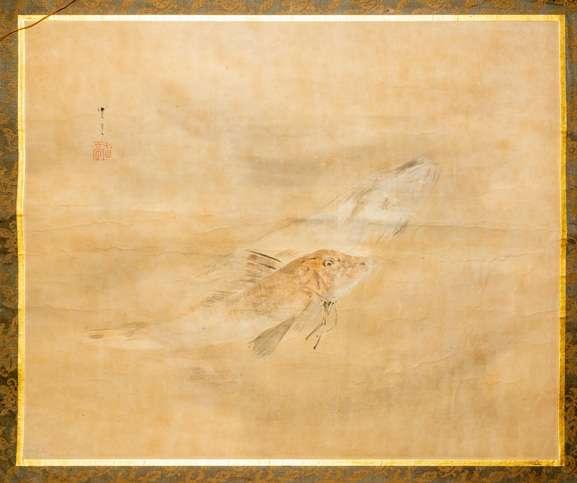
Including nineteen watercolours and sketches, variously depicting birds, flowers, figures and other subjects, one featuring Fukurokuju, Ebisu and Daikoku examining a handscroll with the character hyakufuku (a hundred years of happiness), inscribed Rokujukyu go, Itcho zu (No. 69, painted by Itcho, possibly for Hanabusa Itcho); and five katagami stencils. (24)




PLEASE NOTE THIS LOT IS TO BE OFFERED WITHOUT RESERVE. £200-300
Provenance: from the collection of French sculptor Gaston de Luppé (1872-1939), and thence by descent.
A Japanese painting, ink and colour on paper, depicting the Yomeimon Gate of Tokugawa Ieyasu’s Toshogu Shrine in Nikko, with two figures walking up the steps, signed Shisen e lower right and with a red seal mark for Shisen, framed, 61.5cm x 42.3cm. £200-300



278
UNIDENTIFIED ARTISTS
MEIJI AND LATER, 19TH AND 20TH CENTURY
Five Japanese makimono (handscroll paintings), variously painted with figures in interiors, some with calligraphy, with six tomobako wood boxes, some with signatures, 1312cm x 26cm max. (11) £200-300
279
UNIDENTIFIED ARTISTS
MEIJI AND LATER, 19TH AND 20TH CENTURY
Four Japanese makimono (handscroll paintings), three with printed outlines, the first after the scroll painting Kasuga Gongen Genki E (Legends of the Kasuga Shrine) by Takashina Takakane (1309-30), the two other scrolls with court scenes alternating with panels of calligraphy; the fourth handscroll painted with figures in landscapes, some military camps, also with calligraphy; together with four tomobako wood boxes, 980cm x 41.5cm max. (8)
A rare Japanese makimono (handscroll picture) in naive style, the title slip reading Shukke shobo no zu, chu (Pictures of Fire and Firefighting, part 2), the outlines possiby printed and hand-coloured with a continuous scene of fire brigades from different neighbourhoods across the city of Edo (Tokyo), starting with Fukagawa and ending with Sugamo, many carrying banners displaying their crests and with their names and addresses inscribed above, the many figures marching between fires, some firemen fighting the blazes and townspeople running in fear, 26.5cm x 580cm.




Provenance: an Irish private collection, Dublin.
copy of a letter from Alfred Haft, Project Curator of the Japanese Section at the British Museum, discussing the scroll is available. It mentions comparable 19th century scroll paintings in the collections of the Edo-Tokyo Museum, and at the British Museum.

A series of eight Japanese makimono (handscroll paintings), all painted in the same hand, in ink and colour on paper, each scroll depicting a large number of various objects including whole set of headdresses, carts, robes and other garments, possibly to be used at the court, all in a large tomobako wood box, 1484cm x 29.5cm max. (9)
Three Japanese makimono (handscroll paintings), two a pair painted in ink and colour on paper with many depictions of Chinese scholar’s items; together with a scroll made up of rubbings of archaeological finds, many architectural fragments, in a tomobako wood box, 288cm x 29.5cm max. (4)






MEIJI AND LATER, 19TH AND 20TH CENTURY
Two Japanese paintings, the first in ink on silk and depicting a mountainous river landscape, with trees hanging from rockwork and the moon above, a red seal mark, 33.5cm x 28cm; the other a watercolour on paper depicting a colourful meadow of flowers, a red seal mark, 45cm x 60cm; one with a tomobako wood box. (3)
LOT

285 ANDO KOSAI (1862-1939)

YANAGIDA TOBOKU (ACT. 1910-20), AND ANOTHER MEIJI AND LATER, 20TH CENTURY
Three Japanese kakemono (hanging scroll paintings) of figures in mountainous river landscapes, the extensive views depicted in nanga style, all in ink and colour on paper, each with a poem above, one signed Kosai rojin (Old man Kosai), and with two seals reading Shinkosai and Unsho yoji (to engage in bucolic activities); another inscribed Toboku ga narabi ni shirusu (Painted and inscribed by Toboku); two with a tomobako wood boxe, 138cm x 53.8cm max. (5)
£200-300
286 TOMOE MATSUKAWA (ACT. 1990s) MODERN, 20TH CENTURY
A Japanese kakemono (hanging scroll painting) entitled Tenbai (plum-blossom viewing), ink and colour on paper, depicting a lone figure in a mountainous river landscape, with lines of calligraphy above, signed and with four red seal marks, together with an inscribed tomobako box and a sleeve with an exhibition label for the 97 Artnet Europe Exhibition, 134cm x 133cm. (3)
PLEASE NOTE THIS LOT IS TO BE OFFERED WITHOUT RESERVE.
£200-300
287 KODOJIN GAKUSHIN (PROBABLY 19TH CENTURY), AND ANOTHER MEIJI ERA, 19TH CENTURY AND LATER
Two Japanese kakemono (hanging scroll paintings), both in ink on paper, the first depicting bamboo by rockwork, unsigned but with two seals reading Gakushin no in and Kodojin; the other with long grasses issuing from a hanging rock, a seal reading Gyoun; together with a Chinese painting by Dayuan Huang Lian, inscribed Shaojue xiansheng zheng, Huan Lian and depicting gnarly branches of prunus; two with tomobako wood boxes, 135.5cm x 44.5cm max. (5)




£200-300
A collection of eight Japanese paintings, including four kakemono (hanging scroll paintings) and four makimono (handscroll paintings), three printed and the fourth painted, all with calligraphy; one on a silk mount decorated with mitsu-tomoe designs, inscribed Shizukanaru, yomiwa sakarimo, hisakatano, hikarizo hana no, kokoro o miru, signed Yoshio; another inscribed with kotobuki (happy long life), signed Naganari sho and with three seals; a panel of calligraphy possibly signed Tokugyo / Noriyuki, with seals reading Kakimoto Shigefuji no in and Go Osen, inscribed ‘The river and the sea do not choose the smallest streams. Therefore they can become deep’, the verse taken from a Chinese original; another signed Goho koji kan sho and with a poem about a large pine forest and mountain peaks set against a valley with streams; and others, six in tomobako wood boxes, 423cm x 16.5cm max. (14)

part lot illustrated
289 HIROSE RYUSEN (1855-1928)


KANO EISHIN (ACT. C.1860) KITO DOKYO (1840-1904) OKAJIMA TOSEN (DATES UNKOWN) TANOMURA HOKUDEN (1777-1835) SUZUKI KASON (1860-1919) NAKABAYASHI SEISHUKU (1829-1912)
NISHIYAMA KAN’EI (1834-97), AND OTHERS
EDO AND MEIJI ERA, 19TH CENTURY

An accordion album of Japanese paintings, ink and colour on paper, opening with seven pages of calligraphy followed by fifty-two double-page paintings variously depicting birds, flowers, animals, figures, and further calligraphy, one depicting Fukurokuju, the God of Longevity resting on a pile of books after drinking sake, with his pet crane by his side, signed Ryusen saku, Gin’in Seitei and Ryusen; another depicting a tortoise, signed and sealed Kan’ei; each picture by a different artist and with a signature, together with a fitted tomobako wood box, each page 16cm x 9cm. (2)


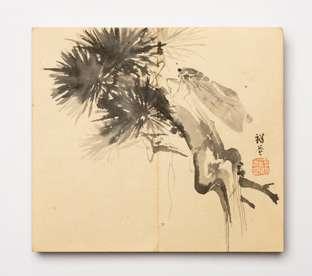
£500-1,000
Provenance: formerly in the collection of Dr Oliver Impey (1936-2005).

Comprising: thirty-six Chinese silk purses and Japanese kinchaku bags, of various colours and patterns; together with a model of Christ on the Cross inscribed to the reverse ‘Crucifix by Oliver Impey, 23 Nov. 1951’, 25cm max. (37)
PLEASE NOTE THIS LOT IS TO BE OFFERED WITHOUT RESERVE. £150-250
Provenance: formerly in the collection of Dr Oliver Impey (1936-2005).
Of slender shape, decorated in underglaze blue with a flowering branch of prunus on the grey crackled ground, the body with a network of kintsugi gold lacquer repairs, 30cm.

£150-250
Provenance: formerly in the collection of Dr Oliver Impey (1936-2005).

Dr Oliver Richard Impey was a Senior Curator at the Ashmolean Museum, and a leading authority on Japanese Art. Together with his wife, the renowned British neuroscientist Dr Jane Mellanby, they assembled a fascinating Asian Art collection which we are delighted to offer in this sale.
Oliver first studied Zoology at the University of Oxford where he met Jane, whilst drawing an aspidistra in a botany practical. They married in 1961, and Oliver embarked on a doctorate exploring the anatomy of lizards’ jaws. His career changed dramatically when he later took a position in the Furniture and Textile Department at Sotheby’s. While working in London, he learnt about applied arts and developed an enthusiastic interest for Asian Art. He built a wide network including collectors, scholars, and like-minded friends, whilst learning to navigate the art trade. His interest for oriental art led him to become Assistant Keeper of the Japanese Collections at the Ashmolean Museum in 1967, something that a colleague at the time described as moving ‘straight from the whorehouse to the nunnery’.

Over the next thirty-six years, Oliver used his discerning eye and unrivalled scholarship to acquire fine objects for the Museum, especially dating from the Edo and Meiji periods. Gerald Reitlinger’s collection of 2,500 oriental pieces came to the Museum thanks to him, as after his house had been destroyed by fire, Oliver had camped in the ruins to salvage most of the artworks. Oliver also designed and helped fund a new Japanese Decorative Art Gallery to house these treasures.
His publications are now considered references and include works on oriental exports to the West, early Japanese painting, the furnishings at Burghley House, and many others. His book entitled ‘Early Porcelain Kilns of Japan’ (1996) was the first work in a European language dedicated to pre-export porcelain, and it confirmed him as a leading authority in the field of ceramic studies.
He and Jane amassed their own collection of lacquerwares, ceramics, and other oriental artworks at the house they shared with their four children in Cumnor, Oxfordshire. The collection included innumerable shards and other kiln wasters, which undoubtedly helped them understand the evolution of early Japanese ceramics.
Both Oliver and Jane were extremely busy, in their professional lives and as connoisseurs with many-sided interests. Oliver was an active member of the Oriental Ceramic Society, serving as President from 1997 to 2000. He also helped organise the Royal Academy’s Great Japan Exhibition (1981); he became chairman of the International Committee for Museums of Applied Art; he founded and became a council member of the Friends of the Ashmolean; he served for many years as a curator of Oxford University Botanic Garden – the list is endless, and he received many prizes and medals recognising his achievements, including the prestigious Koyama Fujio Memorial Prize and Medal in 1997 and later, the OCS Hills Gold Medal for Outstanding Contribution to the Study of Oriental Art. Jane, on the other hand, taught several generations of Oxford medical students in an idiosyncratic manner, organising seminars and garden parties at Cumnor Place, and supporting the cause of women in medicine and science. From 1971, she had a Tutorial fellowship at St Hilda’s College (Oxford University), later becoming Vice-Principal and Tutor for Admissions. In 2016, she received an Honorary Fellowship of the Royal College of Physicians in recognition for her work. Until the end of her life, Jane would spend her days swimming every morning, painting, gardening, and seeing her friends and supervising students, who she felt, were her most important legacy.
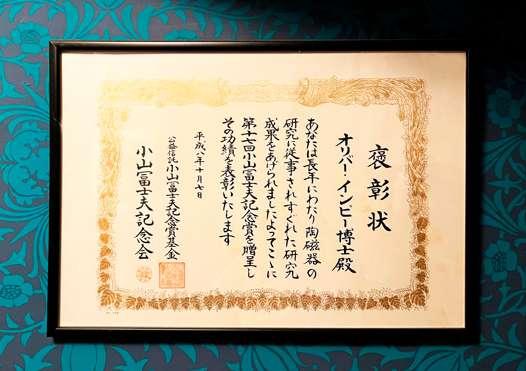

Oliver always maintained that an Oxford graduate should be able to master any subject, a talent that he and Jane demonstrated through their multi-faceted activities and scholarship. Jane once declared that ‘there are just so many things that need doing’. One might argue that both she and Oliver managed to do most of them.

EDO PERIOD, 17TH CENTURY
Comprising: a small dish moulded with floral design and with polychrome decoration; a fan-shaped dish; an ingot-shaped one moulded with saya-gata key fret; two shoki Imari moulded circular dishes, one with karakusa scrolls; and the shards of three blue and white miniature vases; 11cm max. (8) £300-500
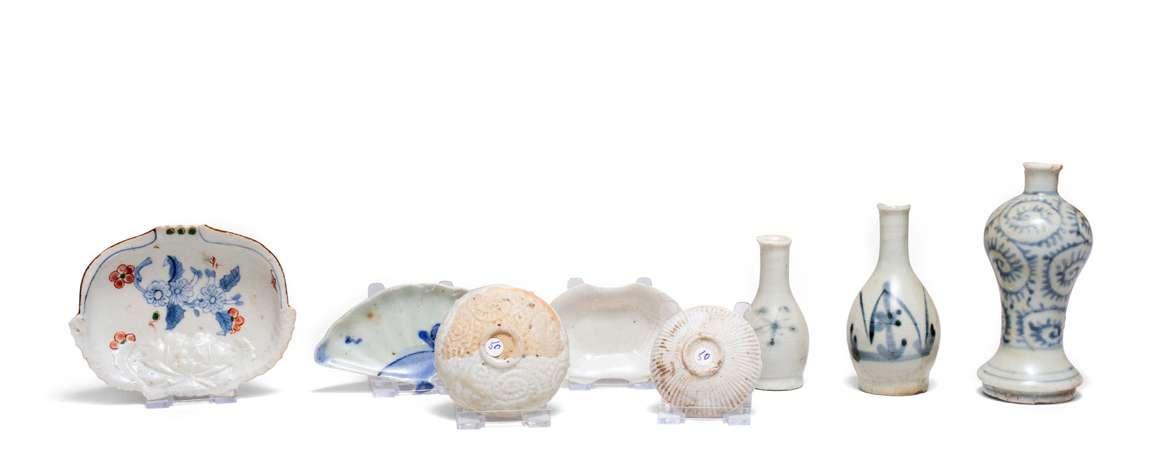
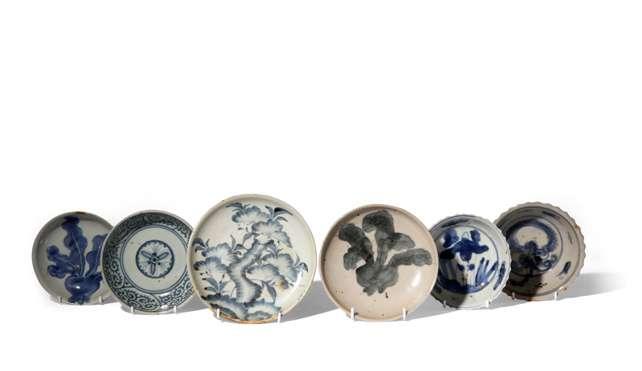
EDO PERIOD, 17TH CENTURY AND LATER
Comprising: two shoki Imari dishes, each painted with a large daikon to the well, one with a kintsugi gold lacquer repair; two shoki Imari bowls with barbed rims, one with lotus leaves and the other with a floral design; another dish with karakusa scrolls and the last painted with a pine tree with fan-shaped leaves, 17.5cm max. (6)

£400-600
See Christie’s Amsterdam, 20th May 2003, lot 391, for a similar shoki Imari bowl with lotus decoration.
EDO PERIOD, 17TH AND 18TH CENTURY
Comprising: a large bulbous potiche and cover decorated with stylised maple leaves; two small shoki Imari jars, one with vines and the other with a stylised prunus; together with a small jar with a flat cover decorated with formal floral patterns, the lid with gintsugi silver lacquer repairs, 19cm max. (6)
£300-500
17TH CENTURY
The small foliate dish painted with a plump hare on a bed of
and with lingzhi above, the spiky grass blades reminiscent of a chestnut burr; with minute kintsugi gold lacquer repairs to the
12cm.

296
EDO PERIOD, C.1650
Both of rectangular form, one moulded with two chrysanthemum flowerheads amongst leaves, the other with a crane in flight above mountains; both with underglaze blue decoration and gauze marks to the back, 3.4cm x 10cm x 6cm and 2.8cm x 7.9cm x 6cm respectively. (2) £200-300
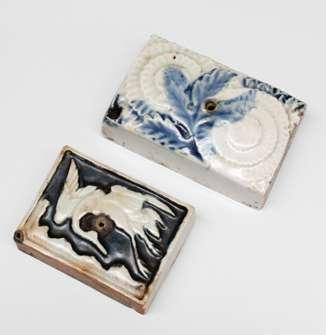
19TH CENTURY
All three of egg shape and similarly decorated with seraphins and crosses in polychrome on the white ground, each drilled at both ends and with brass suspension rings; together with a square-section pottery flask decorated with flower sprays and arabesques, the neck with a white metal mount and cover, a pseudo-Chinese mark underneath, possibly 17th century Safavid, 17cm max. (2) £200-300



17TH CENTURY
Each decorated with a stylised pavilion and crenelated walls by the water’s edge, in a tomobako wood box inscribed with gilt characters ‘five bowls of archaistic design’, 15.4cm. (6) £300-500
17TH CENTURY AND LATER
Comprising: two Chinese ko-sometsuke pieces for the Japanese market, one a shallow bowl with birds and floral designs to the well, a paper label for S. Marchant & Son underneath; the other a blue and white dish with a hawk and the moon above; together with a Japanese foliate bowl with a bird amongst dense foliage and flowers, and the other a dish with a plump quail, some details painted in polychrome enamels; 15.4cm max. (4) £200-300
RARE JAPANESE BLUE AND WHITE VASE EDO PERIOD, C.1670

The bulbous body with a tall neck rising from a flared foot, with two scroll-shaped handles applied to the neck; decorated with a band of moulded leaves with underglaze blue, the base with gauze marks, 15.1cm. £300-500
According to the Oliver Impey archive, he purchased this piece in Kyoto.
The moulded body painted in underglaze blue and polychrome with three leaves and two long pods, with a kintsugi gold lacquer repair to the rim; the reverse with two leafy branches and flowers, raised on a shaped foot with comb design, 19.3cm.
£200-300

The first of trilobe shape and raised on a short foot, decorated to the well with three herons in low relief, with tall grasses and a stream beside them painted in underglaze blue; the other a Nabeshima dish, with a foliate rim and moulded with swirling waves, the well with two three-clawed dragons, raised on a circular foot with comb design, 16.2cm and 16cm respectively. (2)
£200-300

Cf. Ko-Imari: A Catalogue of Hizen Porcelain from the Nezu Museum’s Yamamoto Collection, p.154, no.600 for a related dragon dish. Also, see the Kyushu Ceramic Museum, Complete Catalogue of Shibata Collection, p.76, no.597, for another similar crane dish.
EDO AND LATER, 17TH CENTURY AND LATER
Comprising: two rectangular dishes, one in Kakiemon style with two dragons, peonies, pine and prunus, the other with floral sprays and formal patterns; the third dish in the shape of two leaves, with a band of cash and kintsugi gold lacquer repairs; the fourth in the shape of a partially-opened fan, with cherry blossoms and geometric patterns, a six-character Chenghua mark underneath; all decorated with polychrome enamels, 17.1cm max. (4)

£300-500
Cf. The Kyushu Ceramic Museum, Complete Catalogue of Shibata Collection, p.109, no.0858, and p.35, o.270 for a dish related to the one moulded with two leaves. Also, see the Gardiner Museum, access. no.T15.2.44 for another example in the Macdonald collection.
Painted in underglaze blue and polychrome enamels, the well decorated with a large leaf, its veins crisply moulded; with small prunus blossoms and tendrils on a cash diaper ground to the side; the reverse with scrolling foliage and stylised flowers; raised on a short foot decorated with comb pattern, 16.5cm. £800-1,200
Cf. Ko-Imari: A Catalogue of Hizen Porcelain from the Nezu Museum’s Yamamoto Collection, p.74, no.281, for a related dish with the same decoration. Also, see the Kyushu Ceramic Museum, Complete Catalogue of Shibata Collection, p.27, no.0201, for another example without the overglaze decoration.


painted in underglaze blue with a delicate design of grasses and foliage
the front, each with three flower sprays and leafy tendrils to the
foliate rims and both raised on a foot painted with comb design, 15cm each.

With an everted rim, decorated with a bamboo basket containing chrysanthemum, leafy sprays and fruits, the cover falling to one side, the reverse painted with three beribboned clusters of shippo-tsunagi (cash), with a combed foot, 20cm. £500-1,000
According to Oliver Impey’s archive, this is a ‘v.good’ example, and ‘shards of this pattern have been found at the O Kawashi kiln site’.
two views
EDO PERIOD, 17TH CENTURY
The moulded body decorated with a laurel-green and brown glaze, the mottling resembling turtle shell patterns; raised on a short oval foot; with a kintsugi gold lacquer repair to the rim and another to the footrim, 15.7cm.


£300-500
See Ko-Imari: A Catalogue of Hizen Porcelain from the Nezu Museum’s Yamamoto Collection, p.145, no.554, for a related dish with the same irregular shape.
The bowl with typical hare’s fur decoration, the surface covered with a lustrous brown glaze with black streaks dripping on the sides and pooling in the well; the foot left unglazed and with kintsugi gold lacquer repairs, 9.4cm


Possibly Seto ware, the bulbous body raised on three legs moulded as small boys, the body and cover embellished with geese in flight above snow-covered branches, the decoration in low relief and with details rendered in underglaze blue on the deep chocolate-brown ground, the knop modelled as three uchiha fans, 15.8cm. (2)
£1,000-2,000
According to Oliver Impey’s archive, this piece was formerly in the collection of Richard de la Mare, and was bought at Sotheby’s, 30th September-1st October 1980, Much Hadham Hall, the Contents of the House sale.
EDO OR MEIJI, 19TH CENTURY
The first with a flattened circular body and a long spout, decorated in underglaze blue with cherry blossoms and cash patterns, with a lacquer lid and metal handle; the other of octagonal shape and moulded with Chinese scholars in gardens, the brown glaze with white mottling, 28cm and 18.5cm respectively. (3)

PLEASE NOTE THIS LOT IS TO BE OFFERED WITHOUT RESERVE.
£150-250
According to the Oliver Impey archive, the blue and white kettle was originally in the Richard de la Mare Collection.
POSSIBLY EDO, 17TH CENTURY
Irregularly-shaped, the well decorated with a fish surrounded by a border of triangular lappets, the cavetto with a band of running ducks, with details highlighted in white slip, in a silk box, 16.5cm. (2)
PLEASE NOTE THIS LOT IS TO BE OFFERED WITHOUT RESERVE.
£150-250
Purchased from Graham Gemmell, Grays Mews, London, 15th December 1982. A copy of the receipt is available.
310
312
EDO PERIOD, 18TH AND 19TH CENTURY
One an aote Ko Kutani-style charger decorated in thick purple, green, yellow and aubergine enamels, the well painted with a spray of peony issuing from rockwork, the cavetto with lappets of crosshatchings and diaper designs, the reverse inscribed Kutani and with karakusa scrolls; the three others Seto ware, one of ‘horse-eye’ type, another with a blue willow tree and gold kintsugi repairs, and the last ishizara plate left undecorated, 35.8cm max. (4)
£400-600
EDO AND MEIJI, 18TH AND 19TH CENTURY
Comprising: two Nabeshima dishes moulded as abalone shells, a soba cup with an underglaze blue fuku mark to the base, and a small footed cup, 16cm max. (4)


£300-500
According to Oliver Impey’s archive, he purchased the dishes in Kyoto.
See the Suntory Museum of Art, Tokyo, access. no.202/2646, for a comparable shell-shaped dish with overglaze decoration dated to circa 1730-70.

The square-section body with indented corners, the exterior decorated with a large peony flowerhead and scrolling tendrils painted in thick blue enamel on the unctuous chocolate-brown ground, the rim with a kintsugi gold lacquer repair, 9.6cm.
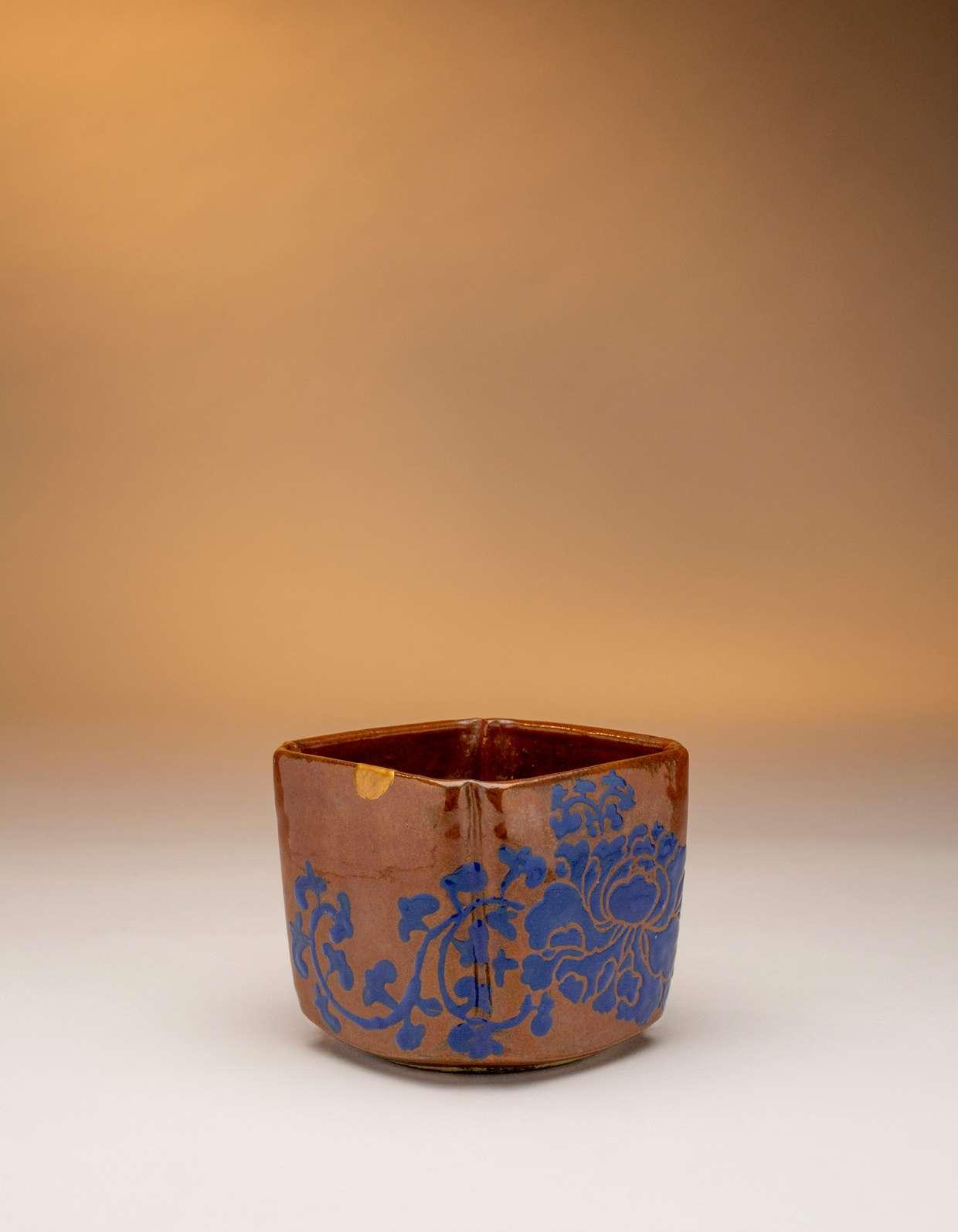
£200-300
Cf. Nihon no Toji (Ceramics of Japan), vol.13, Kyoto Wares, p.164, no.48, for a double-gourd wine bottle with comparable brown and blue enamel decoration.
EDO AND MEIJI, 18TH AND 19TH CENTURY
All with a bulbous body and a tall neck, the largest painted with butterflies fluttering next to peony; another with leafy sprays and rockwork; the third with stylised floral designs and incised with a collector’s mark to the side; the fourth with an undecorated white glaze; 36.5cm max. (4)
PLEASE NOTE THIS LOT IS TO BE OFFERED WITHOUT RESERVE.
316


EDO AND MEIJI, 18TH AND 19TH CENTURY
Two made for the Dutch market and with inscriptions to the side; two similarly painted with a pavilion and a boat sailing on a lake, the fifth with a pine tree and inscribed Hanayama, one with kintsugi gold lacquer repairs, 20cm max. (5)
PLEASE NOTE THIS LOT IS TO BE OFFERED WITHOUT RESERVE.


Comprising: a Chinese foliate dish decorated with figures in a garden after a Japanese original; three Japanese bowls painted with landscapes; a Japanese cylindrical box and cover with Chinese scholars in a mountainous river landscape, and two Japanese dishes, one with many boys at play, 21.4cm max. (8)
£300-500
All with underglaze blue decoration, variously painted with birds, flowers, auspicious symbols and geometric designs, one with polychrome enamels; together with a blue and white chawan, 9.7cm max. (20)
Comprising: three Chinese pieces, including a large fan-shaped dish painted in the Imari palette after a Japanese model; an incised dish with a café-au-lait back, a Kangxi lingzhi mark to the base and enamelled in Europe; a small double-gourd vase with an underglaze blue bird perched on a branch and polychrome enamels; together with three Japanese pieces, a small early-enamelled bulbous jar, a Europe-decorated cup and a polychrome dish with mon and brocade patterns, 29.2cm max.

EDO AND MEIJI, 18TH AND 19TH CENTURY
Comprising: a Kyo-yaki hibachi, the rectangular Kyoto ware brazier with an inner metal liner and decorated with branches of bamboo in thick blue and green enamels; another a porcelain box modelled as a thatched hut, the cover shaped as the roof; a porcelain box in the shape of a shell, and a third with blue and white decoration, both without lid; 15cm max. (6)


Comprising: three bowls, five small dishes
Imari palette,
underglaze
plate,
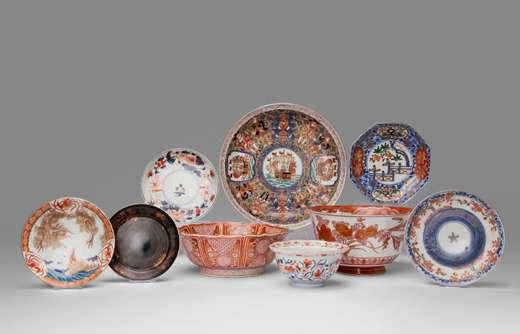
Comprising:
scalloped dishes, both with birds and flowering prunus,
323
THREE JAPANESE NABESHIMA-STYLE DISHES
EDO AND LATER, 18TH/19TH CENTURY AND LATER
The smaller octagonal dish decorated with red cherry blossoms on an underglaze-blue ground of spider webs, the underside with a signature for Imaizumi Imaemon; another dish with three mitsu tomoe swirls on a ground of further prunus blossoms; the third with three panels enclosing formal designs of lotus leaves and sacred pearls, on a diaper ground, with details in polychrome enamels; all three raised on tall feet and with three flower sprays to the underside, 20.7cm max. (3) £300-500
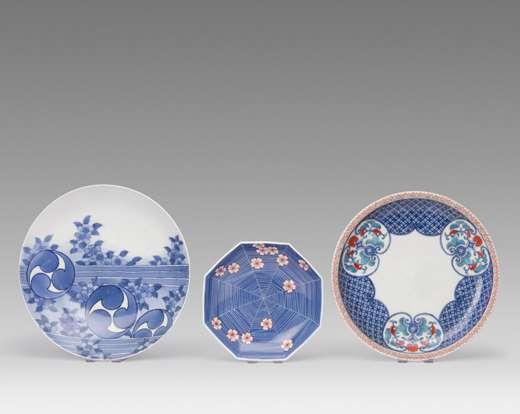

According to Oliver Impey’s archive, the octagonal dish was made by Imaizumi Imaemon after an Edo period original, and was directly gifted by the artist to him and Jane.
324
THREE JAPANESE NABESHIMA-STYLE DISHES
MODERN, 20TH CENTURY
All three with designs taken from earlier examples; the smallest with three egrets standing by a large lotus leaf on a pale blue ground; another with three jars with polychrome decoration on a ground of seigaiha waves, a kao mark underneath; the third with colourful maple leaves amongst crashing waves; together with a large white glazed dish incised with a peony to the well, signed; each with an inscribed tomobako wood box, 24cm max. (8) £300-500

Comprising: a small bulbous vase with an elongated neck painted with flowers on a turquoise ground, with an inscribed tomobako box; a rectangular tray with peonies and chopsticks rest, also with an inscribed box, and a small dish wih flowering prunus, all marked Imaemon; together with a footed dish decorated with butterflies, a seal mark underneath, 23.7cm max. (7) £200-300
The first modelled on an early Nabeshima design, decorated with a curled up hare beside a moon crescent, the details of the fur finely painted in underglaze blue; with crashing waves underneath and raised on a foot with comb design, an incised mark to the base for Imaizumi Imaemon; the other in shoki Imari style and depicting two rabbits prancing amongst foliage, a scrolling cloud above them, on a crackled-glaze ground, 15.5cm and 16.5cm respectively. (2)


PLEASE NOTE THIS LOT IS TO BE OFFERED WITHOUT RESERVE. £150-250
According to Oliver Impey’s archive, the hare and moon dish was personally given to him by Imaizumi Imaemon.
The baluster body with a wide flared rim, decorated in underglaze blue with a large pine tree with a gnarly trunk; together with a dish decorated with irises, painted in underglaze blue and with details highlighted in yellow enamels, a two-character signature to the front with a red seal mark underneath, and a four-character mark to the reverse, 38cm and 24.2cm respectively. (2) £200-400
Comprising: a boxed blue and white cup and saucer with VOC monogram; a blue and white sake cup with diaper design; and a set including five blue and white sake cups, an irregularly-shaped bowl, a pourer and lid, and five small lacquer dishes, in an inscribed tomobako box, 13.8cm max. (17)
PLEASE NOTE THIS LOT IS TO BE OFFERED WITHOUT RESERVE. £100-200


MODERN, 20TH CENTURY
Each with its original tomobako wood box, one a creamy-pink colour, another with iron brushwork on the grey speckled ground, and the third with a lustrous creamy tenmoku glaze with blue and black streaks, 13.9cm max. (6)

330
MODERN, 20TH CENTURY
The first a dish decorated with a stylised wisteria tree rendered in slip on the lustrous black ground; the other a small jar of flattened bulbous shape, decorated with three stylised sprays of bamboo, a seal mark impressed underneath; each with an inscribed tomobako wood box and a leaflet about Masami, 21.5cm and 9.5cm respectively. (4)


THIS LOT
BE
RESERVE.
MODERN, 20TH CENTURY
Comprising: a boxed Fukagawa tray with phoenix, marked; a porcelain egg painted with a praying mantis and a small fly, a seal mark underneath, possibly for Ikuta Susumu; a blue and white box and cover shaped as a purse, a stamped mark underneath, boxed; and a circular kogo, the incense box and cover in lacquer with gilt decoration, with an inscribed box, 11cm max. (9)

MEIJI AND LATER, 19TH AND 20TH CENTURY
Two brightly enamelled with details in gilt, the tallest depicting a beauty dancing and the other an armour-clad samurai; the third a courtier holding a fan, with remnants of lacquer decoration to the back, 32.7cm max. (3)
EDO OR MEIJI, 19TH CENTURY
The kiseruzutsu (pipe case) with an en suite tonkotsu (tobacco box), both carved with crabs and flowers and with details in stag antler; together with a Japanese circular gold lacquer box and cover decorated with a river landscape, and a large wood seal shaped as the head of a lion dog, possibly South-East Asian, 20.8cm max. (4)
334
EDO PERIOD, 18TH CENTURY
The bow-fronted pictorial-style box decorated in mother of pearl and gold hiramaki-e with flowers and birds in flight, the lid with a rectangular panel enclosing a European scene, the image depicting a man in prayer leaning against a sarcophagus, with a skull and putti crying to the side, the compartmentalised interior lined in green velvet, 36.7cm X 22.5cm x 31.5cm; together with a rectangular chest with a single drawer, painted with many figures in mountainous river landscapes, 23.5cm x 43cm x 24.7cm. (3)
£300-500
335

EDO PERIOD, 18TH CENTURY
Both with hinged lids and decorated in gold hiramaki-e, the smaller one decorated to the top with two shishi and butterflies above, the other with a river landscape and flowers emerging from rockwork, 12.5cm x 36.2cm x 27cm and 19.5cm x 53.5cm x 33cm respectively. (5)
£200-300
The box with lion dogs was purchased from Sotheby’s London, The Toms Collection, 8th June 1995, lot 177. A copy of the original invoice is available.
336 A JAPANESE LACQUERED WOOD SHOJI-BAN (GAME BOARD) MEIJI ERA, 19TH CENTURY

Of typical rectangular form and raised on four shaped feet, the sides decorated with gold cranes and paulownia mon amongst leafy tendrils, together with a small rectangular box and cover with similar decoration containing thirty-one wood game counters, the board 7.9cm x 15.4cm x 14cm. (34)
£200-300
337 A JAPANESE IMPERIAL SILVER BONBONNIERE HEISEI ERA, DATED 1993
Of circular form, the lid decorated with two mandarin ducks underneath a gilt kikumon (Imperial chrysanthemum crest), boxed and with a card indicating that this was a present for guests who couldn’t attend the party for the marriage of the Crown Prince; together with a cloisonné vase decorated with irises, and another circular box with cherry blossoms and leafy tendrils in mixed metals, the base with an inlaid mark, 13.5cm max. (6)

£200-300

Modelled as a peach, the lid decorated with two small birds flying towards a temple, the scene rendered in red, gold and black lacquer; together with a pair of long rectangular lacquer batons, possibly scroll weights, embellished with flowerheads and karakusa scrolls, the box 10.8cm. (4)

EDO AND MEIJI, 18TH AND 19TH CENTURY
Comprising: two tsuba, one with a dragon writhing amongst scrolling clouds, the other with a small rabbit and flowering tendrils, both with inlays and a signature; a fuchi and kashira set embellished with a cast of crabs, and an ojime modelled as a small kettle on a warmer; together with a mixed metal box and cover, the top of the lid with a tiger, and the reverse with a dragon, 8.5cm max. (7)

£400-600
According to Oliver Impey’s archive, the crab set was formerly in the collection of George Herbert Naunton (1859-1925); and then the R G McNair Scott collection.

EDO AND MEIJI, 18TH AND 19TH CENTURY
The mounts decorated with various animals including a turtle, a boar, birds, horses, and insects, one kozuka with Mount Fuji and another with paulownia mon amongst waves; some embellished with mixed metal inlays, some signed, the handles with red velvet presentation sleeves, 22.8cm max. (9)
£500-800
According to Oliver Impey’s archive, the handle with prancing horses has a signature for Hinano Tsuneyuki of Mito and was formerly in the Lee Collection, and then the R G McNair Scott collection.

The faceted octagonal body decorated to one side with a scholar by a pavilion in
the reverse with a boat sailing on a lake, a band
finial and signed Ryubundo

EDO PERIOD, 19TH CENTURY
A
of
Japanese
kakemono
a large tiger, four signed Echizen
Impey’s
A
OR MEIJI ERA, 19TH CENTURY
byobu
suke Gantai
as a six-fold byobu (screen),
Gantai
each sealed Gantai and Kunchin

March
prunus


344
OKADA BEISANJIN (1744-1818)
EDO PERIOD, 18TH/19TH CENTURY
A Japanese makimono (handscroll painting), ink on paper, depicting an extensive mountainous river landscape in Nanga style, signed ‘Beisanjin at the age of seventy’ and sealed, 25cm x 191cm.
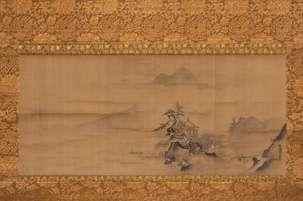

£200-300
According to Oliver Impey’s archive, this painting was purchased from Kegan Paul on 27th January 1967 and was originally from Dr Richard Lane (1926-2002).
Lane was a famous American scholar and collector of Japanese Art based in Kyoto, whose collection of nearly 20,000 paintings is now housed at Honolulu Museum of Art.
345 KANO CHIKANOBU (1660-1728)
EDO PERIOD, 17TH/18TH CENTURY
A Japanese kakemono (hanging scroll painting), ink and light colour on silk, depicting a shishi leaping beside rockwork, the lion dog holding a white peony in its mouth, signed Chikanobu and with a faint red seal mark, 39cm x 64cm.

£200-300
According to Oliver Impey’s archive, this painting was purchased from Christie’s via Douglas Wright.
346
part lot illustrated
TSUBAKI CHINZAN (1801-54)
KONO SHUSEKI (1875-1950)
MEIJI AND LATER, 19TH AND 20TH CENTURY
A Japanese album of paintings, ink and colour on paper, including twenty-five pictures variously depicting animals and flowers, with paper slip inscribed Chinzan, 28cm x 33cm; and a concertina album of paintings by an unidentified artist, ink on paper, depicting mountainous landscapes, the title slip inscribed Gafu Shuseki saku, 27cm x 504cm. (2)


£200-300
347
KANO NAONOBU (1607-1650)
AND KISHI GANKU (1749-1838)
EDO PERIOD, 17TH AND 18TH/19TH CENTURY
Two Japanese kakemono (hanging scroll paintings), both ink on silk, the first depicting pavilions in a mountainous river landscape, with a fisherman on a boat and a lone traveller on a bridge, signed Jitekisai hitsu and sealed Zen Ka, with a paper label for Spink & Son; the other with a boat sailing past tree-covered shores, the silhouette of Mount Fuji in the distance, signed and sealed; 31cm x 70cm and 35cm x 48cm respectively. (2)

£300-500
According to Oliver Impey’s archive, he purchased the Naonobu painting from Spink in March 1966, and the other in Kyoto in 1960.
URAGAMI GYOKUDO (1745-1820)
PERIOD, 18TH/19TH CENTURY
A Japanese kakemono (hanging scroll painting), ink on paper, depicting a mountainous river landscape, with three boats sailing in the distance, with an inscription translating as ‘a painting of a bay in the spring’, signed Gyokudo utsusu and sealed Takeuchi Kaijin no mago, 26cm x 21cm. £3,000-5,000

According to Oliver Impey’s archive, this painting was bought from Kegan Paul in July 1967.
See Christie’s, New York, Japanese and Korean Art, 22nd September 2055, lot 159, for another painting by Gyokudo with a comparable composition.
Uragami Gyokudo was a fascinating Edo period artist. He was a qin (Chinese zither) player, and an amateur painter. He specialised in landscapes rendered in large brush strokes and with abstract shapes, in a style reminiscent of Chinese literati painting.
350349
349 KANO CHIKANOBU (1660-1728)

YOKOYAMA KAZAN (1786-1837)
EDO PERIOD, 17TH/18TH AND 19TH CENTURY
Two Japanese kakemono (hanging scroll paintings), both in ink on paper and depicting mountainous landscapes, the first signed Chikanobu hitsu and sealed Josen, the second with a line of calligraphy, signed Kazan sha and with two red seals, 113cm x 18cm and 100cm x 14cm respectively. (2)
£300-500
According to Oliver Impey’s archive, the Chikanobu painting was purchased from Kegan Paul in February 1967, and was formerly in the Dr Richard Lane collection. The Kazan painting was purchased from Christie’s, December 1965.
350 YOKOI KINKOKU (1761-1832)
MARUYAMA OSHIN (1790-1838)
EDO PERIOD, 18TH/19TH CENTURY
Two Japanese kakemono (hanging scroll paintings), both ink on paper, the first with a thatched pavilion, signed Oshin and sealed, with a tomobako wood box; the other with a scholar in a hut nestled amongst trees in a mountainous landscape, signed and sealed; 100cm x 30cm and 134cm x 41cm respectively. (3)





£200-300
According to Oliver Impey’s archive, the Kinkoku painting was purchased from Kegan Paul in March 1967, and was formerly in the Dr Richard Lane collection. The Oshin painting was bought at Glendining.
351 SUZUKI HYAKUNEN (1825-90), TAKI TOZAN (DATES UNKNOWN) FUNAYAMA MICHIZANE (DATES UNKNOWN) SEISETSU (DATES UNKNOWN), AND OTHERS EDO AND MEIJI, 19TH CENTURY
A Japanese kakemono (hanging scroll painting), ink and colour on paper, depicting a bird in flight above pines, signed Shiko and sealed Hyakunen, with tomobako wood box, 107cm x 28cm; another kakemono depicting a kingfisher and a heron under large lotus flowers, inscribed ‘After the shower, a fresh breeze; the fragrance of lotus flowers is carried for a long distance; painted on a day in winter in the year of Mizunoto-tora’, signed Seisetsu shi ga, 130cm x 30cm; another bird and flower painting signed Tozan Taki sei and with two seals for Taki shi gain and Tozan, inscribed ‘Painted in the early third month of the year of Mizunoto-u’; and a fourth painting with pine tree and chrysanthemum, signed Funayama rosho (Old Man Funayama) and inscribed ‘These are pine, chrysanthemum and oak, painted in the second month of the year of Kinoto-u’. (5)


£200-300
According to Oliver Impey’s archive, the Hyakunen painting was bought from Kegan Paul in February 1967, and was previously in the collection of American collector Dr Richard Lane (1926-2002).

A Japanese kakemono (hanging scroll painting), ink and colour on paper, depicting huts in a mountainous landscape, with woods spreading at the foot of vertiginous cliffs, three lines of calligraphy above, signed Sha Shunsei and with three seal marks, 130cm x 27cm. £1,000-2,000
According to Oliver Impey’s archive, this painting was bought from the art historian Jack Hillier (1912-95) in March 1967. Hillier dedicated a section of his book ‘The Art of the Japanese Book’, vol. 2, to Yosa Buson. Impey added in his notes that this painting was sent from Japan by Dr Richard Lane (1926-2002), the American scholar and collector of Japanese Art based in Kyoto, whose collection of nearly 20,000 paintings is now housed at Honolulu Museum of Art.
353
353
KONO BAIREI (1844-95)
WATANABE NANGAKU (1767-1813) SEKI CHONEN (1813-77)

EDO AND MEIJI, 18TH AND 19TH CENTURY
A Japanese kakemono (hanging scroll painting), ink and colour on paper, depicting a minogame on a rocky outcrop, signed Bairei and with a red seal mark, 120cm x 33cm; another painting depicting three tortoises in a stream, signed and with two red seal marks for Watanabe Nangaku; and another kakemono, ink and colour on silk, with turtles, pines and cranes, inscribed ‘Painted in the spring, in the year of Tsuchinoto-tori’ (1849), signed and sealed Chonen, 167cm x 40cm. (4)
£200-300
According to Oliver Impey’s archive, the first painting was purchased at Glendining.
EDO OR MEIJI, 19TH CENTURY
A Japanese kakemono (hanging scroll painting), ink on paper, depicting two gibbons on a rocky outcrop, one pointing towards the sky and the other looking down at the reflection of the moon in a pool of water, inscribed ‘monkey and moon’, signed Kano Soeki hitsu and sealed Kano, 110cm x 17cm.



£200-300
This painting depicts a common story in Zen Buddhism: five hundred monkeys held onto each other’s tails to catch the reflection of the moon in a well. They failed and as the branch from which they were hanging suddenly broke, they understood their mistake. This story symbolises the unenlightened people who cannot distinguish between reality and illusion.

Three Japanese kakemono (hanging scroll paintings), ink and colour on paper, all mounted on board as panels of a byobu (screen); one depicting a Shinto procession with two men carrying a tree on a float; another with three children playing, a banner painted with a samurai above them; the third with a man cursing a seagull flying away with his fish supper; each signed with a red seal mark reading Beiju-o in (Seal of the old man of rice juice), one signed Seisei Kyosai, the other two Kyosai, each approx. 173cm x 63cm. (3) £800-1,200


Cf. S Koto, Kyosai: The Israel Goldman Collection, pp.74-75 no.26, for another Kyosai painting with the same Seisei Kyosai signature and seal.

356
WATANABE SHOKA (1835-87)
RENZAN GANTOKU (1805-59) KOKUSEN (ACT. C.1800), AND OTHERS MEIJI ERA, 19TH/20TH CENTURY
A Japanese kakemono (hanging scroll painting), ink on paper, depicting Mount Fuji towering above wooded hills, signed and with two red seal marks for Gantoku, 133cm x 56cm; another kakemono in ink and colour on paper of a mountainous river landscape, with a scholar in a pavilion by a bridge in the foreground, signed Kokusen and sealed Ryu cho, 114cm x 27cm; a third depicting a landscape with pine trees, signed Shoka dojin and sealed Watanabe kai in and Watanabe shokyo, dated 1874; the fourth a depiction of an extensive snowy landscape, inscribed ‘A painting of auspicious snow anticipating the spring’, signed Tian Xiong and possibly Chinese, together with another landscape painting. (5) £250-350

According to Oliver Impey’s archive, both the Fuji painting and the Kokusen one were purchased at Glendining.

357
TAIGAN / UNGE (1773-1850)
KANO TANYU (1602-74)
SUGA KISUI (ACT.1850-80) EDO AND MEIJI, 17TH CENTURY AND LATER
A Japanese kakemono (hanging scroll painting), ink on paper, depicting orchids growing from a rock, signed and with a red seal mark for Unge, with a tomobako wood box, 134cm x 35cm; another kakemono in ink on paper depicting an orchid, signed and sealed, with inscribed tomobako wood box, 64cm x 18cm; and another ink and colour painting on paper depicting irises, inscribed, signed Kisui and with a red seal mark, 133cm x 28cm. (5)


£150-250
According to Oliver Impey’s archive, the Taigan painting was bought from Kegan Paul and was formerly in the Tomkinson Collection. The Tanyu scroll was purchased by Impey in Kyoto in 1960.

358 KUSUMI MORIKAGE (1620-90)
TOMITA KEISEN (1879-1935), AND ANOTHER EDO AND LATER, 17TH CENTURY AND LATER
A Japanese kakemono (hanging scroll painting), ink on paper, depicting three small sparrows perched on a branch of bamboo, signed Morikage and sealed, with paper collection labels including one referring to the Tomkinson Collection, with tomobako wood box, 105cm x 43cm; and two other kakemono, both ink on paper paintings of bamboo, the first signed Keisen and sealed, 135cm x 47cm; the other with long lines of calligraphy and three red seal marks, 132cm x 32cm. (4)





£400-600
The painting with sparrows was formerly in the collection of Michael Tomkinson (1841-1921), and is listed in M Tomkinson, A Japanese Collection, p.120, no.101.
According to Oliver Impey’s archive, it was bought from Kegan Paul in 1963. The Keisen painting was also purchased from Kegan Paul and was previously in the collection of American collector Dr Richard Lane (1926-2002).
359
ITO JAKUCHU (1716-1800)
EDO PERIOD, 18TH CENTURY
A Japanese kakemono (hanging scroll painting), ink on paper, depicting two large bamboo branches and further vegetation growing below, sealed To Jokin in and Jakuchu koji, with tomobako wood box labelled ‘Jakuchu, Bamboo’ and inscribed both on the cover and to the reverse, 112cm x 30cm. (2)

£800-1,200
See Yale University Art Gallery, access no.2006.210.8a-b for a kakemono painting of lotus by Ito Jakuchu with the same seal marks.
360
360 KANO TSUNENOBU (1636-1713)
MATSUMURA KEIBUN (1779-1843)
FUKADA GOJI (ACT. C.1910-40)
EDO AND LATER, 17TH/18TH CENTURY AND LATER
A Japanese kakemono (hanging scroll painting), ink on paper, depicting a dove perched on a stack of hay, signed and with a seal for Tsunenobu, with inscription to the outside referring to Baron Kuki (possibly Baron Kuki Ryuichi, director of the Imperial Museum in Tokyo), 40cm x 31cm; another a kakemono of sparrows in flight beside a prunus tree, ink and colour on silk, signed and with a seal for Keibun, a Spink & Son label, 76cm x 26cm; and a kakemono painted with a bird by a peony flower with hay cover, signed Gojo and with a red seal for Saiin, 115cm x 35cm. (3)



£200-300
According to Oliver Impey’s archive, the sparrow and prunus painting was purchased from Spink & Son on 29th April 1966. The sparrow painting has a title slip reading ‘To Professor Mellanby From T Toyoshima’.

361 KATO BUNREI (1706-82)
EDO PERIOD, 18TH CENTURY
A Japanese kakemono (hanging scroll painting), ink and colour on silk, depicting a pheasant pounced on by a hawk, signed and sealed, with a tomobako wood box inscribed in French ‘Bunrei, Faucon enlevant un faisan’, 81cm x 27cm. (2)
£200-300
See the British Museum, access. no.1913,0501,0.125 for a related painting of a hawk by Kato Bunrei.
362
363 OLIVER IMPEY (1936-2005)
AIZAWA SHUSON (1875-1941), AND OTHERS
MEIJI AND LATER, 19TH AND 20TH CENTURY
Three kakemono (hanging scroll paintings), including an ink on paper painting depicting the single kanji character kokoro (heart) and signed Oliver Impey, 53cm x 34cm; and two Japanese kakemono, one of a double gourd under lines of calligraphy reading ‘To the first flower of the year, may it be a good year’, signed Shuson abd sealed Shishin’an, signed and with a red seal mark, 127cm x 29cm, the other a panel of calligraphy, also with a red seal mark, together with a tomobako wood box, 35cm x 24cm. (4)


PLEASE NOTE THIS LOT IS TO BE OFFERED WTHOUT RESERVE.
£200-300
363 part lot illustrated
364 RENZAN GANTOKU (1805-1859)
KOICHI AWAKAWA (1902-76), AND ANOTHER EDO AND LATER, 19TH CENTURY AND LATER
A Japanese kakemono (hanging scroll painting), ink on paper, depicting a nobleman in court dress seated cross-legged on a dai, signed and with two red seal marks, 97cm x 29cm; another kakemono depicting Hotei, ink on paper, the God of Good Fortune carrying his large sack of treasures and pointing at the moon, inscribed and with a red seal mark for Koichi Awakawa, 33cm x 43cm; and another scroll painting of Ebisu riding on a mule, ink and colour on paper, unsigned, 85cm x 31cm. (3)
PLEASE NOTE THIS LOT IS TO BE OFFERED WITHOUT RESERVE.
£150-250
According to Oliver Impey’s archive, the picture of the nobleman was purchased at Glendining.
364 part lot illustrated
365 MATSUMURA KEIBUN (1779-1843)
NAKAJIMA RAISHO (1796-1871) MARUYAMA OKYO (1733-95), AND OTHERS
EDO AND MEIJI ERA, 19TH AND 20TH CENTURY
A Japanese kakemono (hanging scroll painting), ink on paper, depicting reishi fungi by rockwork, signed and sealed both by Matsumura Keibun and Nakajima Raisho, 34cm x 48cm, with an inscribed tomobako wood box; together with a makimono (handscroll painting), ink on paper, depicting forty-seven fish in a stream, signed and sealed by Okyo, 31cm x 573cm; and two kakemono, ink and colour on paper, one depicting a red sun above waves and the other a recumbent deer, 83cm x 35cm and 105cm x 28cm respectively. (5)

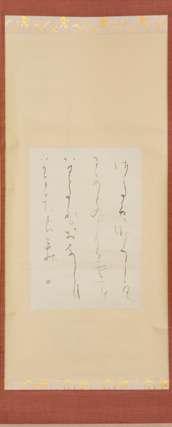


PLEASE NOTE THIS LOT IS TO BE OFFERED WITHOUT RESERVE.
£200-300
According to Oliver Impey’s archive, the fungi painting was purchased at Glendining on 11th December 1963, lot 182. The fish painting was also bought at Glendining.
365 part lot illustrated
366
LITERATURE
A LIBRARY OF AUCTION CATALOGUES
Relating to Japanese art, mostly from Sotheby’s and Christie’s. (a lot) £2,000-3,000
367
LITERATURE
A REFERENCE LIBRARY
Mostly relating to Japanese art. (a lot) £1,000-2,000
368
LITERATURE
A COLLECTION OF REFERENCE BOOKS
And other publications relating to Chinese, Asian and other decorative arts. (a lot) £300-500
369
LITERATURE
A COLLECTION OF AUCTION CATALOGUES
Relating to Chinese and other decorative arts. (a lot) £300-500
370
UTAGAWA HIROSHIGE (1797-1858), YASHIKA GAKUTEI (C.1786-1868), AND OTHERS
EDO AND MEIJI ERA, 19TH CENTURY
A Japanese woodblock print entitled Susaki hatsu hinode (New Year’s Day at Susaki) from the series Edo Meisho (Famous Places in Edo); another a surimono entitled Taira no Tadatori from the series Buke rokkasen (Six Immortal Poets of the Warrior Class), signed Gakutei hitsu; together with other various woodblock prints, a painting of fish signed Tanaka, and two panels from a small byobu screen, 60.5cm x 36cm max. (14)
PLEASE NOTE THIS LOT IS TO BE OFFERED WITHOUT RESERVE. £150-250
371 LITERATURE
A NUMBER OF BOUNDED THESES AND OTHER LITERATURE
Relating to Asian art. (a lot)
PLEASE NOTE THIS LOT IS TO BE OFFERED WITHOUT RESERVE. £200-300
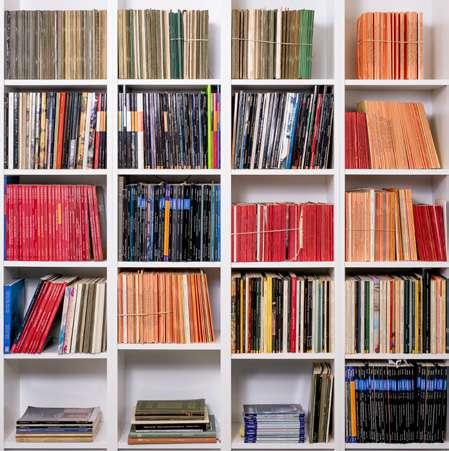





you wish to bid at this auction
need to register and provide proof of identity and of your address
provide photographic ID. You may be asked to pay a deposit of £5,000. Any deposit must be paid by debit card or bank transfer. Woolley and Wallis must have cleared funds no later than 12 noon on Monday 14th November. If you are not successful
will be refunded (without interest) within seven working days.
BIDDERS
BE REQUIRED TO PAY A DEPOSIT
£5,000.
Monday 14th November.
Please note that the condition of lots is not stated in the catalogue descriptions. Reports on condition may be available on request. The absence of condition reports in the catalogue does not imply that the lot is free from imperfections or faults.
品相報告 競買人應於拍賣之前的預展中視察拍品。純為方便買家威立士可以在拍賣開始前提供品相報告,但未記載的


SIX CHARACTER KANGXI MARK AND OF THE PERIOD 1662-1722
The sides rising from a flat base to a broad everted rim, the interior painted with a ferocious three-clawed dragon emerging from turbulent waves above two carps and a smaller fish, the base unglazed, 42.7cm.
£1,000-2,000
清康熙
(1936-2005)
(1938-2021)

SIX CHARACTER KANGXI MARK AND OF THE PERIOD 1662-1722


The square-section tapering body inscribed on two sides with the two ‘Odes to the Red Cliff’ by the Song dynasty poet Su Dongpo (1037-96), the other two sides finely painted with scenes illustrating the poet making the trip to the famous site with his friends, the reduced neck with sprays of bamboo, 42cm.
£2,000-3,000
A number of ‘Red Cliff’ vases were produced in the Jingdezhen kilns around the 1690s and painted with images deriving from woodblock prints.
See Transactions of the Oriental Ceramic Society, vol.49, Sir M Butler, Chinese Porcelain at the Beginning of Qing, pp.34-35, nos.38-40 for similar ‘Red Cliff’ vases.
清康熙 青花山水詩文方瓶
《大清康熙年製》青花楷書年製
來源:牛津Oliver Impey (1936-2005) 及Jane
(Mellanby) Impey (1938-2021) 收藏。


The blue and white dish painted with two writhing dragons amidst flames, with a Jiajing mark to the base; the washer and the bowl similarly decorated with green enamelled dragons in pursuit of flaming pearls, both with a Kangxi mark to the base, 21cm max. (3)
£1,000-2,000
明嘉靖及清康熙 青花趕珠龍紋碟、黃地綠龍罐及撇口碗 一組三件 來源:牛津Oliver Impey (1936-2005) 及Jane (Mellanby) Impey (1938-2021) 收藏。
376 A PAIR OF CHINESE IMPERIAL IRON-RED ‘DRAGON’ WINE CUPS
SIX CHARACTER GUANGXU MARKS AND OF THE PERIOD 1875-1908
Each painted with two ferocious scaly dragons chasing sacred pearls, surrounded by stylised flames, one beast looking back in fury at his pursuer, all above crashing waves, 4.8cm. (2) £500-1,000
Cf. S Marchant and Son, Exhibition of Nineteenth Century Mark and Period Porcelain, 1991, p.63, no.68 for a pair of Guangxu mark and period cups with a similar design; see also the British Museum, access. no.PDF B711 for a Tongzhi mark and period example on loan from the Sir Percival David Foundation of Chinese Art; and see the Victoria and Albert Museum, access. no.803-1883 for another Tongzhi example.

清光緒 御製礬紅趕珠龍紋盃 一對 《大清光緒年製》青花楷書款 來源:牛津Oliver Impey (1936-2005) 及 Jane (Mellanby) Impey (1938-2021) 收藏。

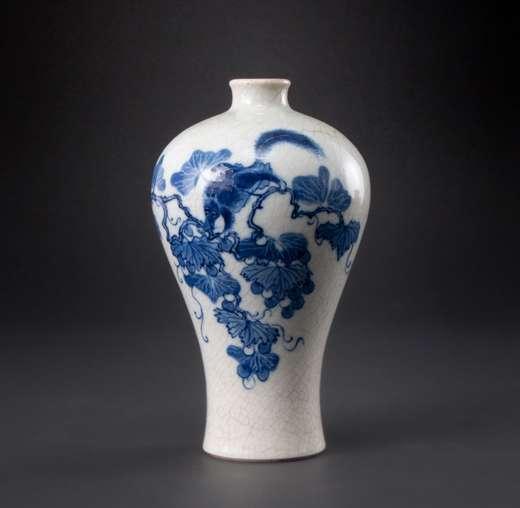
Painted with squirrels clambering on fruiting grape vines, covered overall with a cream crackled glaze,16.8cm. £300-500
十八/十九世紀 青花松鼠葡萄梅瓶 來源:牛津Oliver Impey (1936-2005) 及Jane (Mellanby) Impey (1938-2021) 收藏。

379 TWO CHINESE TEAPOTS AND COVERS KANGXI 1662-1722 AND 19TH CENTURY

Each with an upright handle, the famille verte teapot painted with cartouches containing blossoming flowers, the Canton enamel teapot decorated with floral panels and lotus scrolls reserved on a yellow ground, the Canton teapot 184g, 19cm and 13.5cm. (4)
£300-500
清康熙及十九世紀 五彩花卉提樑壺及銅胎畫琺瑯提樑壺 來源:牛津Oliver Impey (1936-2005) 及Jane (Mellanby) Impey (1938-2021) 收藏。
A CHINESE GILT AND LACQUERED BRONZE FIGURE AND THREE OTHER ITEMS QING DYNASTY AND LATER

One a cinnabar lacquer circular box and cover, another a celadon jade belt hook, the third a lacquered wood paperweight with dragon decorations, the figure 1.05kg, 25cm max. (5)
來源:牛津Oliver Impey (1936-2005) 及Jane (Mellanby) Impey (1938-2021) 收藏。
After
Meissen
woman
by Eberlein, modelled as two figures with their
in a long flowing skirt, together with a saucer
with overlapping petals
5177, 14cm and 14.4cm.
Anniversary Exhibition,
from the
Export Porcelain, p.56, no.36

also Minneapolis Institute of Art, access. no.
(Mellanby)
382
FIVE CHINESE MONOCHROME ITEMS QING DYNASTY
Comprising: a red glazed tripod incense burner, two-twin handled incense burners, a celadon-glazed vase applied with chilong to the shoulder, and a green crackled glazed bottle vase, 23cm wide max. (5)
£500-1,000
Impey (1936-2005)
(1938-2021)
383
THREE CHINESE BLUE AND WHITE VASES AND A CRACKLED GLAZE VASE

17TH CENTURY AND EARLIER
Painted with floral designs and birds, three with later metal mounts, 32cm max. (4)
£500-1,000
(Mellanby)
a junyao-type narcissus bowl, with a mottled
small meiping vase with

and oxen, a six-character Qianlong
glaze;
blue and white bowl with dragons and waves, with a Yongzheng mark, a paper label with monogram ‘HV’; a peach bloom waterpot with a Kangxi mark; and a small stem cup with a dragon,


max. (5)
£300-500
(Mellanby) Impey (1938-2021) 收藏。
Oliver Impey (1936-2005)
Impey (1936-2005)
Jane (Mellanby) Impey (1938-2021)
The body carved and painted with four medallions of leaping carp, surrounded by four writhing scaly dragons, with two further dragons to the flared neck, 37.2cm.
£200-300
十八世紀
Jane (Mellanby) Impey (1938-2021)
Impey (1936-2005)


QING DYNASTY

The exterior painted with the Baxian with their attributes, under a band of ruyi-heads and tendrils, the base with a four-character mark which reads cheng yi zhang le, two paper collection labels, one with monogram ‘HV’, 5.4cm wide.

£400-600
清 五彩八仙圖八棱杯
《昌宜長樂》青花款
來源:牛津Oliver Impey (1936-2005) 及
Jane (Mellanby) Impey (1938-2021) 收藏。
388 A LARGE CHINESE IRON-RED ‘DRAGON’ DISH SIX CHARACTER GUANGXU MARK AND OF THE PERIOD
1875-1908
Painted to the interior with two ferocious scaly dragons in pursuit of a flaming pearl amidst wispy clouds and stylised flames, the underside decorated with two further striding dragons, 34.3cm.
£1,000-2,000
清光緒 礬紅趕珠龍紋碟
《大清光緒年製》礬紅楷書款
來源:牛津Oliver Impey (1936-2005) 及
Jane (Mellanby) Impey (1938-2021) 收藏。
MING DYNASTY
The deep rounded sides rising to a slightly everted rim, carved to the exterior with stylised peony sprays beneath a continuous scroll, covered overall with a rich greyish-green crackled glaze, 33.3cm.

£500-1,000
明 龍泉青釉三足爐
來源:牛津Oliver Impey (1936-2005) 及Jane (Mellanby) Impey (1938-2021) 收藏。

391
A CHINESE HARDWOOD SCROLL TABLE LATE QING DYNASTY
The long rectangular top above a frieze, carved in relief with lotus foliage and flowers, all raised on straight rectangular legs joined by stretchers on rectangular plinths, together with a glass top, 85cm x 41cm x 189cm. (2) £800-1,200
清 硬木雕卷桌
來源:牛津Oliver Impey (1936-2005) 及Jane (Mellanby) Impey (1938-2021) 收藏。
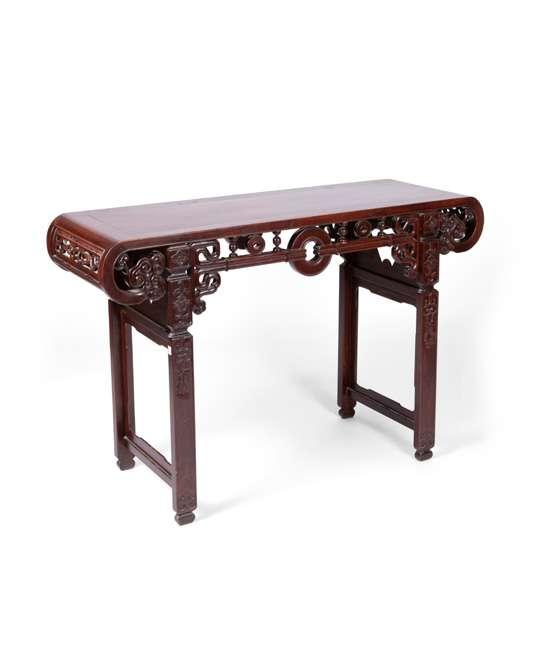


The rectangular top with curved lingzhi scroll ends, the frieze with turned and cash-shaped support, the straight legs joined by stretchers, 83cm x 45cm x 170cm.
£500-800
清晚期 硬木雕供桌
來源:牛津Oliver Impey (1936-2005) 及Jane (Mellanby) Impey (1938-2021) 收藏。
The long rectangular top above a pierced frieze of formal scrolls and tied cash designs, all raised on rectangular-section end supports, 86cm x 43cm x 209cm.
£800-1,200
清晚期 硬木雕卷桌
來源:牛津Oliver Impey (1936-2005) 及Jane (Mellanby) Impey (1938-2021) 收藏。


Two Chinese hanging scroll paintings, ink and colour on paper, both signed and with artists’ seals, and inscribed by Qi Baishi (1864-1957) and signed with his seals, 96cm x 29cm max.


According
Oliver Impey’s
purchased in Oxford
the flower

A Chinese scroll painting, ink and colour on paper, inscribed and signed Jianfu, with two artist’s seals, one reads Gao Lun zhi xi, the other reads Guangzhou Fanyu xian, 66cm x 32cm.

According to Oliver Impey’s archive, the scroll was bought in Cambridge on 28 July 1965.
Exhibited: Ashmolean Museum, Oxford, 23rd August, 2005.
高劍父 (1879-1951) 銀杏仙鹟
立軸
398
REN YI (1840-1895) PARROT AND PEACH BLOSSOM


A Chinese scroll painting, ink and colour on paper, the title-slip reads Ren Bonian bitao yingwu tuce gua, by Shiyuan jushi, Zhang Kehe, with an artist’s seal, signed Ren Yi, with an artist’s seal, which reads Yi yin, with a collector’s seal, which reads Qian Jingtang jianding Ren Bonian zhenji zhiyin, 25cm x 32cm.
£800-1,000
According to Oliver Impey’s archive, the scroll was purchased from Mrs Fang Zhaolin (1914-2006, Zhang Daqian’s student, also a famous painter) in October 1966.
Qian Jingtang (1907-83), also known as Qian Dexin was a renowned Shanghai collector and connoisseur of Chinese painting. He was a good friend of Zhang Daqian and Wu Hufan.
任頤 (1840-1895) 碧桃鸚鵡
設色紙本 立軸
署簽:任伯年碧桃鸚鵡圖冊掛,約四十歲作,石園居士題。
鈐印:張克龢印
款識:任頤
鈐印:頤印
藏印:錢鏡堂鑒定任伯年真跡之印。
來源:牛津Oliver Impey (1936-2005) 及Jane (Mellanby) Impey (1938-2021) 收 藏。據Oliver Impey檔案記載此畫於1966年10月購自方召麐。
399 CHEN WENXI (CHEN WENHSI, SINGAPORE 1906-1991) HERONS
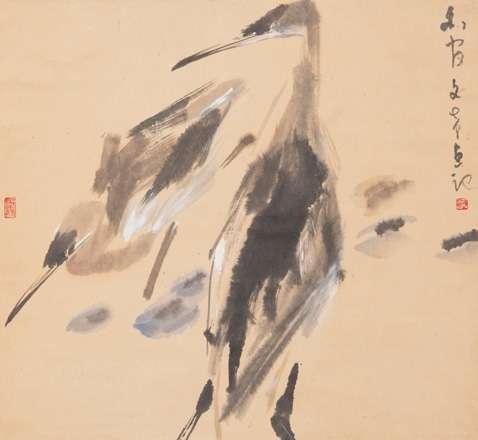
A Chinese hanging scroll, ink and colour on paper, inscribed and signed with two artist’s seals, 86cm x 47cm.
£800-1,200
According to Oliver Impey’s archive, the painting was bought by Oliver Impey in Singapore in 1960s.
陈文希 (1906-1991) 蒼鷺圖 設色紙本 立軸
款識:白宮文希畫記。
鈐印:墨緣、陳文希 來源:牛津Oliver Impey (1936-2005) 及Jane (Mellanby) Impey (1938-2021) 收藏。據Oliver Impey檔案記載此畫購於1960年代購 自新加坡。
A Chinese painting, ink on silk, with three illegible seals, 26cm x 30cm. £500-800
佚名 桃花與鳥
來源:牛津Oliver Impey (1936-2005) 及Jane (Mellanby) Impey (1938-2021) 收 藏。



A Chinese scroll painting, ink and colour on paper, inscribed with a signature which reads Yuan, bearing three artist’s seals; together with a landscape by Wang Weibao; a landscape by Pan Gongshou; a pine tree by Sun Song; grapes by Qi Liangchi; and crabs in a river by Li Gongheng, on silk, together withn a stone rubbing, 58cm x 51cm max. (7)
According to Oliver Impey’s archive, the painting by Pan Gongshou was formerly in the collection of W W Winkworth, and was bought in November 1966; the painting by Qi Liangchi was bought at PS & N in October 1966; and the painting by Wang Wenbao was bought at Christie’s London on 23rd November 1995.
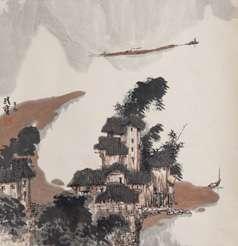


A Chinese scroll painting, ink and colour on paper, inscribed and with the signature of Wu Changshuo, with two artist’s seals, one reads Wu Changshi, the other reads Wu Jun zhiyin, 136cm x 44.5cm. £800-1,000

According to Oliver Impey’s archive, the scroll was bought in December 1965.
Exhibited: Ashmolean Museum, Oxford, 23rd August, 2005.
吳昌碩 (傳) 鐘馗
設色紙本 立軸 題識:鐘南進士真忙碌,移家嫁妹事斬新, 重疊今朝猶見喜,當空一發系千鈞。丙辰仲春之月客 滬上去駐隨緣室時病目未痊,七十三叟吳昌碩。 鈐印:吳昌石、吳俊之印、大寫
來源:來源:牛津Oliver Impey (1936-2005) 及Jane (Mellanby) Impey (1938-2021) 收藏。據
Oliver Impey檔案記載此畫於1965年12月。
展覽:2005年8月23日於牛津阿什莫林博物館。
405
A Malaysian painting, ink and colour on paper, signed Chanhong, together with another Malaysian painting of huts on a beach, 80cm x 25cm. (2) £100-200

According to Oliver Impey’s archive, Punts on the lake was purchased from the artist November 1966.
Exhibited: Ashmolean Museum, Oxford,

406
A Chinese handscroll painting, ink on paper, inscribed and dated winter of yiyou year, with a signature and an artist’s seal, together with another painting by Ren Bonian (Ren Yi), Grasshopper and Plantain Leaves, 35cm x 80cm max. (2)


According to Oliver Impey’s archive, the Prunus and Rock scroll was bought at PS & N in October 1966.
梅石及花卉
Impey
Oliver Impey (1936-2005)
Jane (Mellanby) Impey (1938-2021) 收藏。據
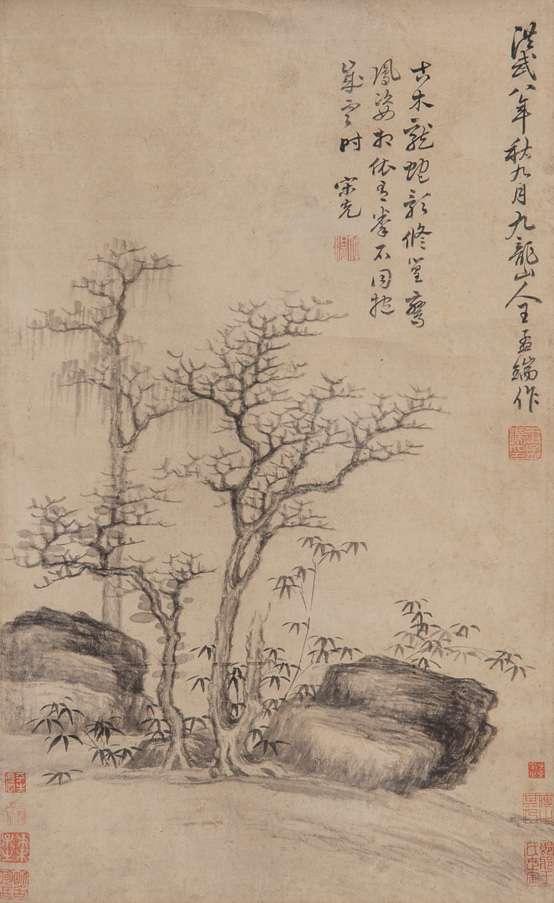

409

A large Chinese hanging scroll painting, ink and colour on paper, inscribed and dated the summer of wuwu year (1918), with the signature of Wu Changshuo, with two artist’s seals, one reads Wu Changshi, the other reads Wu Jun zhiyin, 148cm x 80cm.
£2,000-3,000
According to Oliver Impey’s archive, the scroll was purchased by Oliver Impey in Singapore in 1960s.
Exhibited: Ashmolean Museum, Oxford, 23rd August, 2005.
吳昌碩 (傳) 國色國香
設色紙本 立軸
款識:國色國香,嫣紅姹紫佐於 他,慚愧人稱老畫師。富貴源從
塗抹出,旁觀莫惜費燕支。戊午
夏仲,吳昌碩。
鈐印:吳昌石、吳俊之印
來源:牛津Oliver Impey (1936 2005) 及Jane (Mellanby) Impey (1938 2021) 收藏。據Oliver Impey
檔案記載梅石畫於1960年代購於
新加坡。
展覽:2005年8月23日於牛津阿 什莫林博物館。





































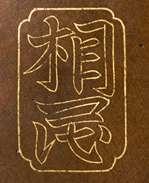






































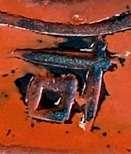




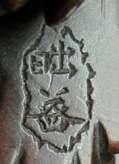
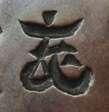













































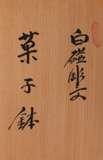




















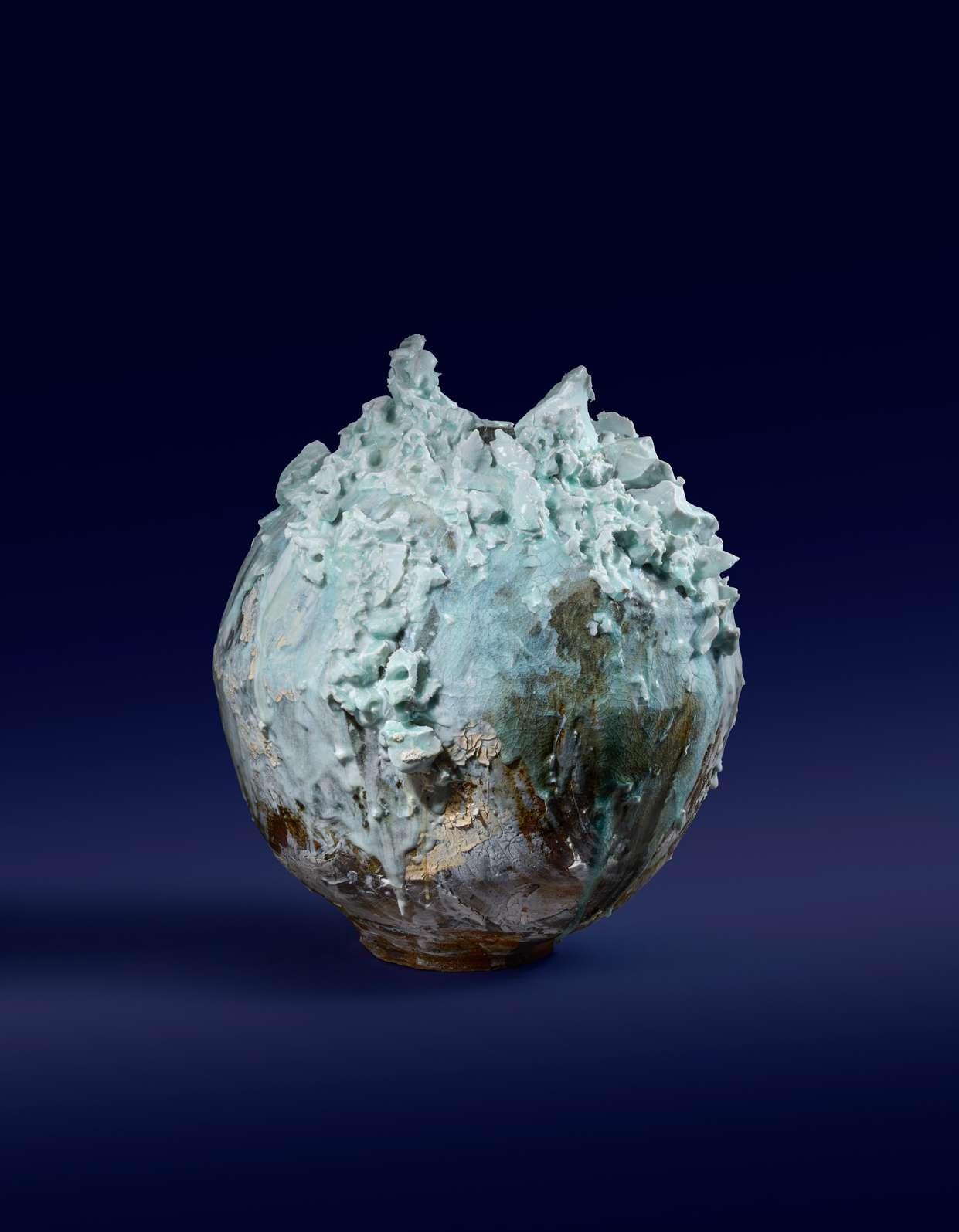


Castle Street Salerooms
Monday to Friday 9am – 5.30pm
Castle Gate Offices
Monday to Friday 9am – 5.30pm
All our auctions are on view at least two days prior to the sale and details will be found in the relevant catalogues.
All first time buyers need to register with us. Once registration is complete you will be provided with a permanent paddle number which can be used in all future sales.
To register, you will need to provide two forms of identification:
1. a passport or photographic driving licence
2. a utility bill or document showing your name and address
You can register in person or by contacting the office on +44 (0)1722 424500 or emailing enquiries@woolleyandwallis.co.uk
You will be asked to show your documents, or fax or email copies.
PLEASE NOTE: Registering with thesaleroom.com or through our website does not automatically register you with us.
See below for the different options for bidding. Please note that you may be asked to provide two forms of identification, even if you have bid with us before, in order that we are compliant with Money Laundering Regulations.
To bid at auction you will need a paddle number. This can be obtained from the office either during the view or on the day of the sale. We now provide permanent paddle numbers which can be used for any future sale, once registered.
If you are unable to attend the sale you can leave a commission bid. This will be executed on your behalf by the auctioneer who will purchase the lot as cheaply as possible bearing in mind any reserve price and other bids.
It is usually possible to bid on the telephone by prior arrangement with the office.
Live online bidding is now available free of charge for most of our auctions via bid.woolleyandwallis.co.uk, enabling you to take part in the bidding from anywhere in the world live as it happens.
The Buyer shall pay the hammer price together with a premium thereon of 25% plus VAT @20% (totalling 30% inclusive) on the first £500,000 and 12% plus VAT @20% (14.4% inclusive) thereafter.
The relevant department will be pleased to give condition reports on any lot, where practical. All weights and measures given in the catalogue should be regarded as approximate.
The colours printed in the catalogue are not necessarily true.
These will be posted on our website shortly after the sale.
PACKING AND SHIPPING
Woolley & Wallis do not offer a packing and despatch service but the following are carriers in our area.
Alban Shipping +44 (0)1582 493099 info@albanshipping.co.uk www.albanshipping.co.uk
Kimdan Ltd +44 (0)7973 389436 andy@kimdan.co.uk
Mailboxes +44 (0)1962 622133 mbewinchester@btconnect.com www.mbe.co.uk/winchester
Pack & Send +44 (0)1635 887237 newbury@packsend.co.uk www.packsend.co.uk/newbury
Please note that we cannot be held responsible for any damage or loss to items once they are in the hands of a carrier.
If you are exporting your property, import taxes, customs duties and other fees may apply at the country of destination. It is also your responsibility to ensure that your shipment can be lawfully imported to the destination country.
Please note that due to the withdrawal of the Retail Export Scheme by HMRC, we are unable to provide VAT refund documentation (C88) for hand-carried exports.
In order to qualify for a VAT refund, your lots must be exported by a shipper and valid export documentation must be provided.
Payment is due immediately after the auction in pounds sterling. If you are a first time buyer we will need your name, address and bank details and will require funds to be cleared before purchases can be released.
The following methods of payment may be made: Bankers draft, cashiers cheque, personal cheque, travellers cheques, debit and credit cards and cash up to a sterling equivalent of €10,000. We are no longer able to accept card payments of over £1,000 where the card-holder is not present.
Wire transfers should be sent to: Lloyds Bank plc, Blue Boar Row, Salisbury SP1 1DB.
Account no. 00957707
Sort code 30-97-41
IBAN no. GB20LOYD30974100957707
BIC code LOYDGB21063
Credit cards: Visa, Mastercard or American Express
Debit cards: Delta, Switch, Connect or Union Pay
Where practical, payment can be made and purchases collected during the auction.
We reserve the right to add storage charges to all lots not collected within 30 calendar days of the sale. This will include a handling fee of £20 (+ VAT) per consignment and a storage charge of £2 (+ VAT) per lot per day. No goods will be allowed to be collected until these charges have been paid.
Lots marked with a dagger (†) are subject to VAT on the hammer price. Lots marked with an omega (Ω) have been temporarily imported from outside the EU and are subject to VAT at 5% on the hammer price and the buyer’s premium. In online catalogues, the Sales Tax % column indicates the rate of VAT on hammer price.
Please note that lots marked λ may be subject to CITES Regulations when exported.
The CITES Regulations may be found at www.defra.gov.uk/ahvla-en/imports-exports/cites/
Lots marked with a ‡ symbol are potentially subject to a levy.
Droit de Suite is a royalty payable to a qualifying artist or the artist’s heirs each time a work is resold during the artist’s lifetime and up to a period of 70 years after the artist’s death.
Royalties are calculated on a sliding percentage scale based on the hammer price excluding the buyer’s premium. The royalty does not apply to lots selling below the sterling equivalent of €1,000 and the maximum royalty payable on any single lot is the sterling equivalent of €10,000.
Droit de Suite, which is not subject to VAT, will be added to the buyer’s purchase price and then passed on to the relevant collecting agency.
Please enquire for the accepted exchange rate on the day of the sale.
Royalties for Droit de Suite are as follows:
4% Up to €50,000
3% €50,000.01 - 200,000
1% €200,000.01 - 350,000
0.5% €350,000.01 - 500,000
0.25% In excess of €500,000
Up to a maximum levy of €10,000
Lots marked Ƒ in the catalogue, or by any other means identified as controlled firearms, are subject to the UK firearms/shotgun licencing regime, and should only be viewed/ purchased by individuals with appropriate licences. It is the responsibility of the bidders to ensure that they are legally authorised to acquire the lot that they are bidding for. In the event that such a lot is successfully bid for by an individual who is not authorised to possess it, that individual will be required to pay for it, but are not allowed to take physical possession of it. The auctioneers will reoffer the lot on behalf of the buyer in a future auction; or may accept instructions to dispose of it by some other legal means, at their discretion.
1. Introduction. The following informative notes are intended to assist Buyers, particularly those inexperienced or new to our salerooms. All sales are conducted on our printed Conditions of Sale which are readily available for inspection and normally accompany catalogues. Our staff will be happy to help you if there is anything you do not fully understand.
2. Agency. As auctioneers we usually contract as agents for the seller whose identity, for reasons of confidentiality, is not normally disclosed. Accordingly if you buy your primary contract is with the seller.
3. Estimates. Estimates are designed to help buyers gauge what sort of sum might be involved for the purchase of a particular lot. The lower estimate may represent the reserve price and certainly will not be below it. Estimates do not include the Buyer’s Premium or VAT (where chargeable). Estimates are prepared some time before the sale and may be altered by announcement before the sale. They are in no sense definitive.
4. The purchase price. The Buyer shall pay the hammer price together with a premium thereon of 25% plus VAT @20% (totalling 30% inclusive) on the first £500,000 and 12% plus VAT @20% (14.4%) inclusive thereafter.
5. VAT. (†) indicates that VAT at the current standard rate is payable by the purchaser on the hammer price as well as being an element in the buyer’s premium. This imposition of VAT is likely to be because the seller is registered for VAT within the European Union and is not operating the Dealers Margin Scheme or because VAT is due at 20% on importation into the UK. The symbol (Ω) indicates that the lot has been imported from outside the European Union and the present position is that these lots are liable to a reduced rate of VAT (5%) on the gross lot price (i.e. both the hammer price and the buyer’s premium). Lots which appear without either of the above symbols indicate that no VAT is payable on the hammer price. This is because such lots are sold using the Auctioneers’ Margin Scheme and it should be noted that the VAT included within the Premium is not recoverable as input tax. (As at 31st December 2020. Please refer to SOFAA website for updates to the Terms and Conditions).
6. We are, primarily, agents for the seller. We are dependent on information provided by the seller and whilst we may inspect lots and act reasonably in taking a general view about them we are normally unable to carry out a detailed or any examination of lots in order to ascertain their condition in the way in which it would be wise for a buyer to do. Intending buyers have ample opportunity for inspection of goods and, therefore, accept responsibility for inspecting and investigating lots in which they may be interested. Please note carefully the exclusion of liability for the condition of lots contained in the Conditions of Sale. Neither the seller nor we, as the auctioneers, accept any responsibility for their condition. In particular, mechanical objects of any age are not guaranteed to be in working order. However, in so far as we have examined the goods and make a representation about their condition, we shall be liable for any defect which that examination ought to have revealed to the auctioneer but which would not have been revealed to the buyer had the buyer examined the goods. Additionally, in specified circumstances lots misdescribed because they are ‘deliberate forgeries’ may be returned and repayment made. There is a 3 week time limit. (The expression ‘deliberate forgery’ is defined in our Conditions of Sale).
7. Electrical goods. These are sold as ‘antiques’ only and if bought for use must be checked over for compliance with safety regulations by a qualified electrician first.
8. Export of goods. Buyers intending to export goods should ascertain (a) whether an export licence is required for the goods to leave the U.K. and (b) whether there is any specific prohibition on importing the goods in question into the destination country because, e.g. they may contain prohibited materials such as ivory. Charges may be applicable for export licences. Ask us if you need help. The denial of any permit or licence shall not justify cancellation or rescission of the sale contract or any delay in payment.
9. Bidding. Bidders will be required to register before the sale commences and lots will be invoiced to the name and address on the registration form. Some form of identification will be required if you are unknown to us. Please enquire in advance about our arrangements for telephone bidding.
10. Commission bidding. Commission bids may be left with the auctioneers indicating the maximum amount to be bid excluding buyers’ premium. They will be executed as cheaply as possible having regard to the reserve (if any) and competing bids. If two buyers submit identical commission bids the auctioneers may prefer the first bid received. Please enquire in advance about our arrangements for the leaving of commission bids by telephone or fax.
11. Methods of Payment. As a general rule any cheques tendered will need to be cleared before removal of the goods is permitted. Please discuss with our Office in advance of the sale if other methods of payment are envisaged (except cash).
12. Collection and storage. Please note what the Conditions of Sale state about collection and storage. It is important that goods are paid for and collected promptly. Any delay may involve the buyer in paying storage charges.
1. Interpretation. In these Terms the words ‘you’, ‘yours’, etc. refer to the Seller and if the consignment of goods to us is made by an agent we assume that the Seller has authorised the consignment and that the consignor has the Seller’s authority to contract. Similarly the words ‘we’, ‘us’, etc. refer to the Auctioneers.
2. Commission is charged to sellers at the following rates: 15% + VAT on each lot sold for up to £999, 10% + VAT on each lot realising £1,000 and above.
3. Removal costs. Items for sale must be consigned to the sale room by any stated deadline and at your expense. We may be able to assist you with this process but any liability incurred to a carrier for haulage charges is solely your responsibility.
4. Loss and damage waiver. We are not regulated by the FSA for the provision of insurance to clients. However, we for our own protection assume liability for property consigned to us at lower pre-sale estimate. To justify accepting liability, we make a charge of 1.5% of the hammer price plus VAT or, if unsold, our mid estimate of the hammer price. If the owner of goods consigned instructs us in writing not to take such action, they then remain at owner’s risk unless and until the property in them passes to the Buyer or they are collected by or on behalf of the owner, and clause 4 is inapplicable.
5. Illustrations. The cost of any illustrations is borne by you. If we consider that the lot should be illustrated your permission will usually be asked first. The copyright in respect of such illustrations shall be the property of us, the auctioneers, as is the text of the catalogue.
6. Minimum bids and our discretion. Goods may be offered subject to a reserve agreed between us before the sale in accordance with clause 7.
7. We may sell lots below the reserve provided we account to you for the same sale proceeds as you would have received had the reserve been the hammer price. If you specifically give us ‘discretion’ we may accept a bid of up to 10% below the formal reserve.
(a) You are entitled to place prior to the auction a reserve on any lot consigned, being the minimum hammer price at which that lot may be sold. Reserves must be reasonable and we may decline to offer goods which in our opinion would be subject to an unreasonably high reserve (in which case goods carry the storage and insurance charges stipulated in these Terms of Consignment).
(b) A reserve once set cannot be changed except with our consent.
(c) Where a reserve has been placed only we may bid on your behalf and only up to the reserve (if any) and you may in no circumstances bid personally.
8. Electrical items. These are subject to detailed statutory safety controls. Where such items are accepted for sale you accept responsibility for the cost of testing by external contractors. Goods not certified as safe by an electrician (unless antiques) will not be accepted for sale. They must be removed at your expense on your being notified. We reserve the right to dispose of unsafe goods as refuse, at your expense.
9. Soft furnishings. The sale of soft furnishings is strictly regulated by statute law in the interests of fire safety. Goods found to infringe safety regulations will not be offered and must be removed at your expense. We reserve the right to dispose of unsafe goods as refuse, at your expense. The rights of disposal referred to in clause 8 and 9 are subject to the provisions of The Torts (Interference with Goods) Act 1977, Schedule 1, a copy of which is available for inspection on request.
10. Descriptions. Please assist us with accurate information as to the provenance etc. of goods where this is relevant. There is strict liability for the accuracy of descriptions under modern consumer legislation and in some circumstances responsibility lies with sellers if inaccuracies occur. We will assume that you have approved the catalogue description of your lots unless informed to the contrary. Where we are obliged to return the price to the buyer when the lot is a deliberate forgery under Condition 15 of the Conditions of Sale and we have accounted to you for the proceeds of sale you agree to reimburse us the sale proceeds. The liability to reimburse the sale proceeds shall not arise where you are acting reasonably and honestly and are unaware of the forgery but we are or ought to have been aware of it.
11. Unsold and withdrawn items. If an item is unsold it may with your consent be re-offered at a future sale. Where in our opinion an item is unsaleable you must collect such items from the saleroom promptly on being so informed. Otherwise, storage charges may be incurred. We reserve the right to charge for storage in these circumstances at a reasonable daily rate.
12. Withdrawn and bought in items. These are liable to incur a charge of up to 10% plus VAT of the reserve or low estimate on being bought in or withdrawn after being catalogued.
13. Conditions of Sale. You agree that all goods will be sold on our Conditions of Sale. In particular you undertake that you have the right to sell the goods either as owner or agent for the owner. You undertake to compensate us and any buyer or third party for all losses liabilities and expenses incurred in respect of and as a result of any breach of this undertaking.
14. Authority to deduct commission and expenses and retain premium and interest.
(a) You authorise us to deduct commission at the stated rate and all expenses incurred for your account from the hammer price and consent to our right to retain beneficially the premium paid by the buyer in accordance with our Conditions of Sale and any interest earned on the sale proceeds until the date of settlement.
(b) You authorise us in our discretion to negotiate a sale by private treaty not later than the close of business on the day of the sale in the case of lots unsold at auction, in which case the same charges will be payable as if such lots had been sold at auction and so far as appropriate these terms apply.
15. Warehousing. We disclaim all liability for goods delivered to our saleroom without sufficient sale instructions and reserve the right to make minimum warehousing charge of £2 per lot per day. Unsold lots are subject to the same charges if you do not remove them within a reasonable time of notification. If not removed within three weeks we reserve the right to sell them and defray charges from any net proceeds of sale or at your expense to consign them to the local authority for disposal.
16. Settlement. Subject to our normal trading conditions, payment will be made by BACS or cheque five weeks after the sale unless the buyer has not paid for the goods. In this case no settlement will then be made but we will take your instructions in the light of our Conditions of Sale. You authorise any sums owed by you to us on other transactions to be deducted from the sale proceeds. You must note the liability to reimburse the proceeds of sale to us as under the circumstances provided for in Condition 10 above. You should therefore bear this potential liability in mind before parting with the proceeds of sale until the expiry of 28 days from the date of sale.
Woolley & Wallis Salisbury Salerooms Ltd carries on business with bidders, buyers and all those present in the auction room prior to or in connection with a sale on the following General Conditions and on such other terms, conditions and notices as may be referred to herein.
In these Conditions:
(a) ‘auctioneer’ means Woolley & Wallis Salisbury Salerooms Ltd or its authorised auctioneer, as appropriate;
(b) ‘deliberate forgery’ means an imitation made with the intention of deceiving as to authorship, origin, date, age, period, culture or source but which is unequivocally described in the catalogue as being the work of a particular creator and which at the date of the sale had a value materially less than it would have had if it had been in accordance with the description;
(c) ‘hammer price’ means the level of bidding reached (at or above any reserve) when the auctioneer brings down the hammer;
(d) ‘terms of consignment’ means the stipulated terms and rates of commission on which Woolley & Wallis Salisbury Salerooms Ltd accepts instructions from sellers or their agents;
(e) ‘total amount due’ means the hammer price in respect of the lot sold together with any premium, Value Added Tax chargeable and any additional charges payable by a defaulting buyer under these Conditions;
(f) ‘sale proceeds’ means the net amount due to the seller, being the hammer price of the lot sold less commission at the stated rate, Value Added Tax chargeable and any other amounts due to us by the seller in whatever capacity and however arising.
(g) ‘‘You’, ‘Your’, etc. refer to the buyer as identified in Condition 2.
(h) The singular includes the plural and vice versa as appropriate.
(a) Bidders are required to register their particulars before bidding and to satisfy any security arrangements before entering the auction room to view or bid;
(b) the maker of the highest bid accepted by the auctioneer conducting the sale shall be the buyer at the hammer price and any dispute about a bid shall be settled at the auctioneer’s absolute discretion by reoffering the Lot during the course of the auction or otherwise. The auctioneer shall act reasonably in exercising this discretion.
(c) Bidders shall be deemed to act as principals.
(d) Our right to bid on behalf of the seller is expressly reserved up to the amount of any reserve and the right to refuse any bid is also reserved.
Bidding increments shall be at the auctioneer’s sole discretion.
The Buyer shall pay the hammer price together with a premium thereon of 25% plus VAT @20% (totalling 30% inclusive) on the first £500,000 and 12% plus VAT @20% (14.4%) inclusive thereafter.
Value Added Tax on the hammer price is imposed by law on all items affixed with a † or Ω. Value Added Tax is charged at the appropriate rate prevailing by law at the date of sale and is payable by buyers of relevant lots. (Please refer to ‘Information for Buyers’ for a brief explanation of the VAT position).
(a) Immediately a lot is sold you will:
(i) give to us, if requested, proof of identity, and (ii) pay to us the total amount due in pounds sterling
(b) Any payments by you to us may be applied by us towards any sums owing from you to us on any account whatever without regard to any directions of you or your agent, whether express or implied.
(c) In line with new legislation we reserve the right to investigate and identify the source of any funds received by us. The completion of the sale of a Lot will be postponed or cancelled at our discretion if further time is needed for investigation, or if you are in breach of your warranties as a buyer, or if we consider the sale to be unlawful or in any way cause liabilities or be detrimental to either Woolley and Wallis or the Seller.
(a) The ownership of any Lots purchased shall not pass to you until you have made payment in full to us of the total amount due.
(b) You shall at your own risk and expense collect any lots that you have purchased and paid for from our premises not later than 3 working days following the day of the auction or upon the clearance of any cheque used for payment (if later) after which you shall be responsible for any collection, storage and insurance charges.
(c) No purchase may be collected and we shall not release any lot to you or your agent until it has been paid for.
(a) If any Lot is not paid for in full and taken away in accordance with these Conditions or if there is any other breach of these Conditions, we, as agent for the seller and on our own behalf, shall at our absolute discretion and without prejudice to any other rights we may have, be entitled to exercise one or more of the following rights and remedies:
(i) to proceed against you for damages for breach of contract; (ii) to rescind the sale of that lot and/or any other lots sold by us to you; (iii) to resell the lot (by auction or private treaty) in which case you shall be responsible for any resulting deficiency in the total amount due (after crediting any part payment and adding any resale costs). Any surplus so arising shall belong to the seller;
(iv) to remove, store and insure the lot at your expense and, in the case of storage, either at our premises or elsewhere;
(v) to charge interest at a rate not exceeding 1.5% per month on the total amount due to the extent it remains unpaid for more than 3 working days after the sale;
(vi) to retain that or any other lot sold to you until you pay the total amount due; (vii) to reject or ignore bids from you or your agent at future auctions or to impose conditions before any such bids shall be accepted; (viii) to apply any proceeds of sale of other Lots due or in future becoming due to you towards the settlement of the total amount due and to exercise a lien (that is a right to retain possession of any of your property in our possession for any purpose until the debt due is satisfied.
(b) We shall, as agent for the seller and on our own behalf pursue these rights and remedies only so far as is reasonable to make appropriate recovery in respect of breach of these conditions
All members of the public on our premises are there at their own risk and must note the lay-out of the accommodation and security arrangements. Accordingly neither the auctioneer nor our employees or agents shall incur
liability for death or personal injury (except as required by law by reason of our negligence) or similarly for the safety of the property of persons visiting prior to or at a sale.
Whilst prospective buyers are strongly advised to attend the auction and are always responsible for any decision to bid for a particular lot and shall be assumed to have carefully inspected and satisfied themselves as to its condition, we will if so instructed clearly and in writing execute bids on their behalf. Neither the auctioneer nor our employees or agents shall be responsible for any failure to do so save where such failure is unreasonable. Where two or more commission bids at the same level are recorded we reserve the right in our absolute discretion to prefer the first bid so made.
The seller warrants to the auctioneer and you that the seller is the true owner of the property consigned or is properly authorised by the true owner to consign it for sale and is able to transfer good and marketable title to the property free from any third party claims.
The auctioneer normally acts as agent only and disclaims any responsibility for default by sellers or buyers.
The seller acknowledges that lots are sold subject to the stipulations of these Conditions in their entirety and on the Terms of Consignment as notified to the consignor at the time of the entry of the lot.
(a) Whilst we seek to describe lots accurately, it may be impractical for us to carry out exhaustive due diligence on each lot. Prospective buyers are given ample opportunities to view and inspect before any sale and they (and any independent experts on their behalf) must satisfy themselves as to the accuracy of any description applied to a lot. Prospective buyers also bid on the understanding that, inevitably, representations or statements by us as to authorship, genuineness, origin, date, age, provenance, condition or estimated selling price involve matters of opinion. We undertake that any such opinion shall be honestly and reasonably held and accept liability for opinions given negligently or fraudulently. Subject to the foregoing neither we the auctioneer nor our employees or agents nor the seller accept liability for the correctness of such opinions and all conditions and warranties, whether relating to description, condition or quality of lots, express, implied or statutory, are hereby excluded. This Condition is subject to the next following Condition concerning deliberate forgeries and applies save as provided for in paragraph 6 ‘information to buyers’.
(b) Private treaty sales made under these Conditions are deemed to be sales by auction for purposes of consumer legislation.
Notwithstanding the preceding Condition, any lot which proves to be a deliberate forgery (as defined) may be returned to us by you within 21 days of the auction provided it is in the same condition as when bought, and is accompanied by particulars identifying it from the relevant catalogue description and a written statement of defects. If we are satisfied from the evidence presented that the lot is a deliberate forgery we shall refund the money paid by you for the lot including any buyer’s premium provided that (1) if the catalogue description reflected the accepted view of scholars and experts as at the date of sale or (2) you personally are not able to transfer a good and marketable title to us, you shall have no rights under this condition. The right of return provided by this Condition is additional to any right or remedy provided by law or by these Conditions of Sale.
16. We shall have the right at our discretion, to refuse admission to our premises or attendance at our auctions by any person.
17. (a) Any right to compensation for losses liabilities and expenses incurred in respect of and as a result of any breach of these Conditions and any exclusions provided by them shall be available to the seller and/or the auctioneer as appropriate.
(b) Such rights and exclusions shall extend to and be deemed to be for the benefit of employees and agents of the seller and/or the auctioneer who may themselves enforce them.
18. Any notice to any buyer, seller, bidder or viewer may be given by first class mail or Swiftmail in which case it shall be deemed to have been received by the addressee 48 hours after posting.
19. Special terms may be used in catalogue descriptions of particular classes of items in which case the descriptions must be interpreted in accordance with any glossary appearing in the catalogue.
20. Any indulgence extended to bidders buyers or sellers by us notwithstanding the strict terms of these Conditions or of the Terms of Consignment shall affect the position at the relevant time only and in respect of that particular
concession only; in all other respects these Conditions shall be construed as having full force and effect.
21. English law applies to the interpretation of these Conditions.
22. Prior written consent must be sought by the buyer or any other party for the use of any images, illustrations and written materials produced by or for Woolley & Wallis relating to a lot or sale, including the contents of a catalogue. Copyright for any of the aforementioned will remain the property of Woolley & Wallis, subject to the provisions of the Copyright, Designs and Patents Act 1988. Woolley & Wallis and the seller make no representations or warranties that the buyer of a lot will acquire any copyright or other reproduction rights to it.
In accordance with long standing practice in Fine Art Sale Rooms certain terms used in descriptions in the Catalogue have the meanings ascribed to them in the glossary below.
Any statement as to authorship, attribution, origin, date, age, provenance and condition is a statement of opinion and is not to be taken as a statement of fact. The Company reserves the right, in forming their opinion, to consult and rely upon any expert or authority considered by them to be reliable.
(a) Edward Lear: In our opinion a work by the artist. (When the artist’s forename(s) is not known, a series of asterisks, followed by the surname of the artist, whether preceded by an initial or not, indicates that in our opinion the work is by the artist named.
(b) Attributed to Edward Lear: In our opinion probably a work by the artist but less certainty as to authorship is expressed than in the preceding category.
(c) Studio of Edward Lear: In our opinion a work by an unknown hand in the studio of the artist which may be or may not have been executed under the artist’s direction.
(d) Circle of Edward Lear: In our opinion a work by an as yet unidentified but distinct hand, closely associated with the named artist but not necessarily his pupil.
(e) Style of ...; Follower of Edward Lear: In our opinion a work by a painter working in the artist’s style, contemporary or nearly contemporary, but not necessarily his pupil.
(f) Manner of Edward Lear: In our opinion a work in the style of the artist and of a later date.
(g) After Edward Lear: In our opinion a copy of a known work of the artist.
(h) The term signed and/or dated and/or inscribed means that in our opinion the signature and/or date and/or inscription are from the hand of the artist.
(i) The term bears a signature and/or date and/or inscription means that in our opinion the signature and/or date and/or inscription have been added by another hand.
(j) Dimensions are given height before width.
(k) Pictures are framed unless otherwise stated.
If, on collation, any named item in this catalogue proves defective in text or illustration, the lot may be returned within 14 days of the sale with the defects stated in writing. This proviso shall not apply to defects stated in the catalogue or announced at the time of sale; nor to the absence of blanks, half titles, tissue guards or advertisements, damage in respect of bindings, stains, spotting, marginal tears or other defects not affecting completeness of text or illustration; nor to drawings, autographs, letters or manuscripts, signed photographs, music, atlases, maps or periodicals; nor to books not identified by title; nor to books sold not subject to return.
Droit de Suite is a royalty payable to a qualifying artist or the artist’s heirs each time a work is resold during the artist’s lifetime and up to a period of 70 years after the artist’s death.
Royalties are calculated on a sliding percentage scale based on the hammer price excluding the buyer’s premium. The royalty does not apply to lots selling below the sterling equivalent of €1,000 and the maximum royalty payable on any single lot is the sterling equivalent of €10,000.
Droit de Suite, which is not subject to VAT, will be added to the buyer’s purchase price and then passed on to the relevant collecting agency by the auctioneer.
Please enquire for the accepted exchange rate on the day of the sale.
Royalties for Droit de Suite are as follows:
4% Up to €50,000
3% €50,000.01 - 200,000
1% €200,000.01 - 350,000
0.5% €350,000.01 - 500,000 0.25% In excess of €500,000 Up to a maximum levy of €10,000
Lots marked with a ‡ symbol are potentially subject to the levy.
This privacy notice (Notice) explains how Woolley and Wallis Salisbury Salerooms Limited (us, we, our, Woolley & Wallis), processes the personal data of users of our auction and valuation services (Services) and includes buyers, bidders and sellers of auction items as well as prospective users of our Services (you, your). It also explains your rights in relation to the personal data we hold about you. This Notice is effective from May 2018. We may change this Notice from time to time. Any significant changes will be notified to you.
Woolley and Wallis is the data controller of your personal data and is subject to the Data Protection Act 1998 (DPA) and the General Data Protection Regulation (GDPR).
If you have any questions about how we use your personal data, whom we share it with, or if you wish to exercise any of the rights set out in this Notice, please contact us using the following details:
• By post – Privacy Officer, Woolley and Wallis Salisbury Salerooms, 51-61 Castle Street, Salisbury, SP1 3SU.
• By email – privacyofficer@woolleyandwallis.co.uk
• By telephone – +44 (0)1722 424599
We collect your personal data from the following sources:
• From you when you: - interact with us before entering into a contract with us, for example when you express your interest in our Services; - instruct us to provide Services to you, sign contractual documentation and provide information in connection with those instructions; - communicate with us by post, telephone, email or via our website, for example in order to make enquiries or register for an online account; - in various other ways as you interact with us during your time as a user (or potential user) of our Services, for the various purposes set out below.
• From third parties such as:
- other auction houses and individuals and organisations in the auctioneering trade whom we may contact to check background details about you; - thesaleroom.com who enable live online bidding and provide us with the name, contact details, the last four digits of registered payment cards and transaction history (in relation to activity on thesaleroom.com) of individuals who register for one of our auctions (please see thesaleroom. com’s privacy policy for further information). We also receive names, contact details, sale details and payment details (the amount and date paid) from realex payments (thesaleroom.com’s payment provider); - sage pay who process payments on our behalf and who provide us with your name, contact details and payment details (only the last four digits of your payment card are provided);
- shipping companies whom you hire to collect items you purchased from us.
We may collect the following personal data about you:
• your name and contact details including address, telephone and email address;
• your image, as captured by CCTV, if you attend our premises;
• personal identification documents, including copies of government-issued identification such as passport and driving license which are required to register bidders (or when we need to verify a seller’s details);
• account details and other information relating to your transactions/dealings with us and your use of our Services;
• payment details such as credit card and bank account details;
• credit and payment history (where you open an account with us as a buyer or bidder);
• information on your collecting preferences and aspirations, and your collections, acquisitions and disposals; and
• other information that you provide to us, for example, when you have a comment/complaint, submit a question, take part in a survey or where you express an interest in receiving marketing material or request further information.
We may also process special categories of personal data, including information concerning your health and medical conditions (for example, disability), where relevant to the provision of our Services.
We will process your personal data because it is necessary for the performance of a contract with you (for example, a contract to use our Services) or in order to take steps at your request prior to entering into a contract. In this respect, we use your personal data for the following:
• to interact with you before you enter into a contract with us, such as when you express your interest in our Services (for example, to send you information about our Services or answer enquiries about our Services);
• once you have engaged us and entered into a contract, to provide you with the Services set out in any contractual documents.
In this respect we will provide your data to our third party suppliers or subcontractors as necessary whom we engage to help us perform our Services or who assist us in conducting our business, such as our IT suppliers, data storage providers, and valuation companies.
We may also process your personal data because it is necessary for our or a third party’s legitimate interests. Our legitimate interests include our commercial interests. In this respect, we may use your personal data for the following:
• to monitor and evaluate the performance and effectiveness of our Services, including by training our staff or monitoring their performance;
• to deal with any concerns or feedback you may have in the performance of the Services;
• for our internal business record keeping and processes;
• to seek advice on our rights and obligations, including obtaining legal advice;
• to contact you for marketing purposes. If you do not wish to receive such information, please let us know now or at any time in the future, and your details will be removed from our marketing list. We will not provide your personal data to third party organisations to use for their own marketing purposes;
• to customise our website and marketing communications in line with your particular interests or preferences;
• to collect money owed to us or our consignors;
• to carry out background and credit checks in relation to bidders and buyers.
In this respect we will provide your data to the following:
• our professional advisors;
• the-saleroom.com;
• debt collection agencies;
• third parties who assist us with our marketing;
• our website and email management software provider.
We may also process your Personal Data for our compliance with our legal obligations. In this respect, we may use your Personal Data for the following:
• to meet our compliance and regulatory obligations, such as our tax reporting requirements or to carry out identity checks;
• in order to assist with investigations (including criminal investigations) carried out by competent authorities;
In this respect we will provide your data to the following:
• external auditors;
• the police and other competent authorities, including HMRC;
We may also process your Personal Data where we have your specific consent to do so (for example, where we have your agreement to include information about you (as a seller) in sale marketing materials) or where we have sought and obtained your consent to send you direct marketing by email, or for the use of cookies on our website. If you have given your consent and you wish to withdraw it, please contact us using the contact details set out above.
Please note that where our processing of your personal data relies on your consent and where you then withdraw that consent, we may not be able to provide all or some aspects of our Services to you and/or it may affect the provision of our Services.
We process special categories of personal data for the following reasons:
• if it is necessary to protect your or another person’s vital interests (for example, where you have a life-threatening accident or illness and we have to process your personal data to ensure you receive appropriate medical attention);
• if it is necessary for the establishment, exercise or defence of legal claims (for example, to protect and defend our rights, and/or the rights of our customers);
We may process information relating to your health where we have your explicit consent to do so (for example, when you provide information about your access requirements prior to attending one of our events).
We transfer names and addresses on our Asian mailing list to a printing company in Hong Kong to distribute our auction catalogues and promotional material. In these circumstances, your personal data will be transferred subject to standard data protection clauses (adopted by the European Commission) and included in our contract with the printing company.
We share your data collected for marketing purposes and through our website with our website and email management software provider who are based in Jersey. In these circumstances, your personal data is transferred to them subject to an Adequacy Decision made by the European Commission in respect of Jersey.
We may use your geographical location to target our communications and advertising and promotions to you. If you do not wish us to do this, then please contact us using the details provided above.
We will retain your personal data for as long as we are providing you with the Services referred to in any contractual document, and for as long as is required for legal, regulatory, fraud prevention and our legitimate business purposes after the termination of your account/agreement with us, or if your application for a particular Service is declined or abandoned.
In particular:
• in relation to CCTV images taken when you attend our premises, we will retain these for a few months;
• in relation to personal data relating to the transactions you have entered into with us as part of the provision of our Services, we will retain that data for period of seven years after that transaction has concluded in case any legal claims arise out of the provision of those Services;
• we will retain your details on our marketing database until you inform us that you no longer wish to receive our marketing communications. However, where you do unsubscribe from our marketing communications we will keep your details on a suppression list to ensure that we do not send you information you have asked not to receive;
• in relation to personal data relating to the provenance of works, we may retain that data indefinitely in our legitimate interests and the legitimate interests of the wider art market in maintaining the integrity of that market.
Under the DPA you have the following rights:
• to obtain access to, and copies of, the personal data that we hold about you;
• to require that we cease processing your personal data if the processing is causing you damage or distress;
• to require us not to send you marketing communications.
• to require us to correct the personal data we hold about you if it is incorrect;
• to require us to erase your personal data;
• to require us to restrict our data processing activities (and, where our processing is based on your consent, you may withdraw that consent, without affecting the lawfulness of our processing based on consent before its withdrawal);
• to receive from us the personal data we hold about you which you have provided to us, in a reasonable format specified by you, including for the purpose of you transmitting that personal data to another data controller;
• to object, on grounds relating to your particular situation, to any of our particular processing activities where you feel this has a disproportionate impact on your rights.
Please note that the above rights are not absolute, and we may be entitled to refuse requests where exceptions apply.
If you are not satisfied with how we are processing your personal data, you can raise a concern with the Information Commissioner. You can also find out more about your rights under data protection legislation from the Information Commissioner’s Office website available at: www.ico.org.uk
Valuations are a core part of our business and are usually carried out by a senior specialist or director. Accuracy, speed and above all confidentiality are paramount.
Written valuations for insurance can vary from a single item to a large estate. Before starting we discuss the various options available so that the valuation is specifically tailored to individual client’s needs.
For valuations of an entire house contents an itemised bound valuation is produced and can be accompanied by photographs when required. In addition to providing an inventory, written valuations can prevent painful arguments with a loss adjuster in the event of a claim.
Woolley and Wallis valuations are accepted by all leading insurance companies.

We offer a speedy and professional service for executors and trustees and provide bound valuations for probate and duplicate copies when required. Since security is often a consideration, we can usually arrange for a house to be cleared and sent for auction, our Valuations Department ensures that executors are informed of which sales are involved and the results thereof.
We also carry out valuations for Family Division, Capital Gains Tax, and Private Treaty Sales.
Contact Amanda Lawrence +44 (0)1722 424509 | valuations@woolleyandwallis.co.uk
Free verbal valuations of items for sale are available by appointment. Please email valuations@woolleyandwallis.co.uk or call +44 (0)1722 424500.

Please bid, on my behalf, for the undermentioned lots up to the prices shown which do not include the buyer’s premium or any V.A.T. payable on lots. These bids are to be executed as cheaply as is permitted by other bids, and/or reserves if any, and subject to the Conditions of Business printed in the catalogue. Please note we cannot guarantee that bids received after 4pm on the day prior to the auction will be executed.
Each lot is subject to a buyer’s premium of 25% plus VAT at 20%
Number in
order
Description of lot Price excluding buyer’s premium & VAT
Salisbury Salerooms, 51-61 Castle Street, Salisbury, Wiltshire SP1 3SU Tel: +44 (0)1722 424500 Fax: +44 (0)1722 424508
2nd & 3rd Jewellery
15th Japanese Works of Art including
Impey Collection
Fine Chinese Works of Art
16th Asian Art II

23rd Medals & Coins, Arms & Armour
30th British Art Pottery
4th Christmas Gifts
14th Modern British & 20th Century
11th & 12th Furniture, Works of Art & Clocks
25th & 26th Silver & Objects of Vertu
17th Adornment: The Romy Rey
2nd Fine Jewellery
21st Fine Pottery & Porcelain
22nd Arts of Africa, Oceania and the
Dates may be subject to change
+44 (0)1722 424500
51-61 Castle Street, Salisbury, SP1 3SU
*Price includes buyer’s
A rare pillar hanging
